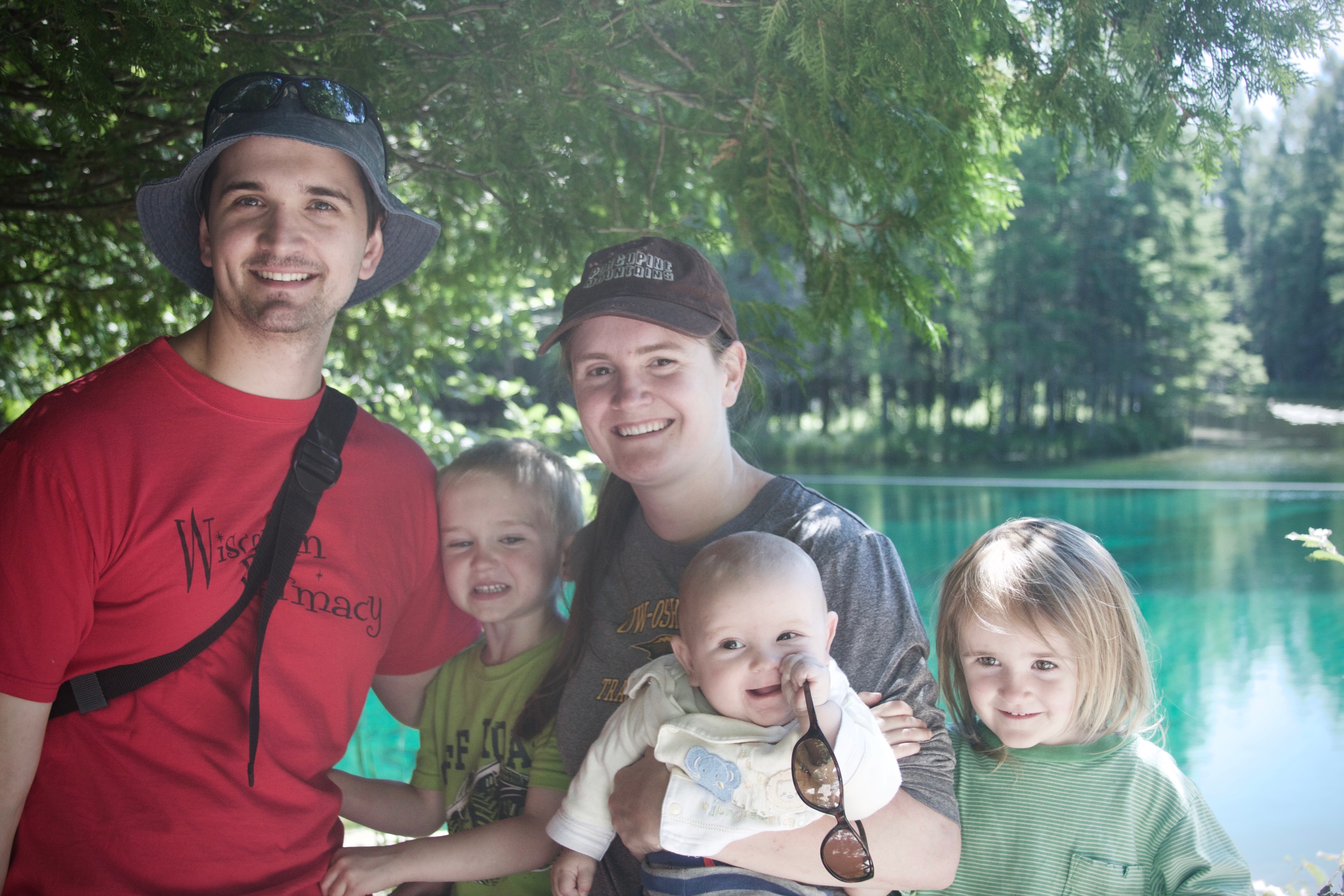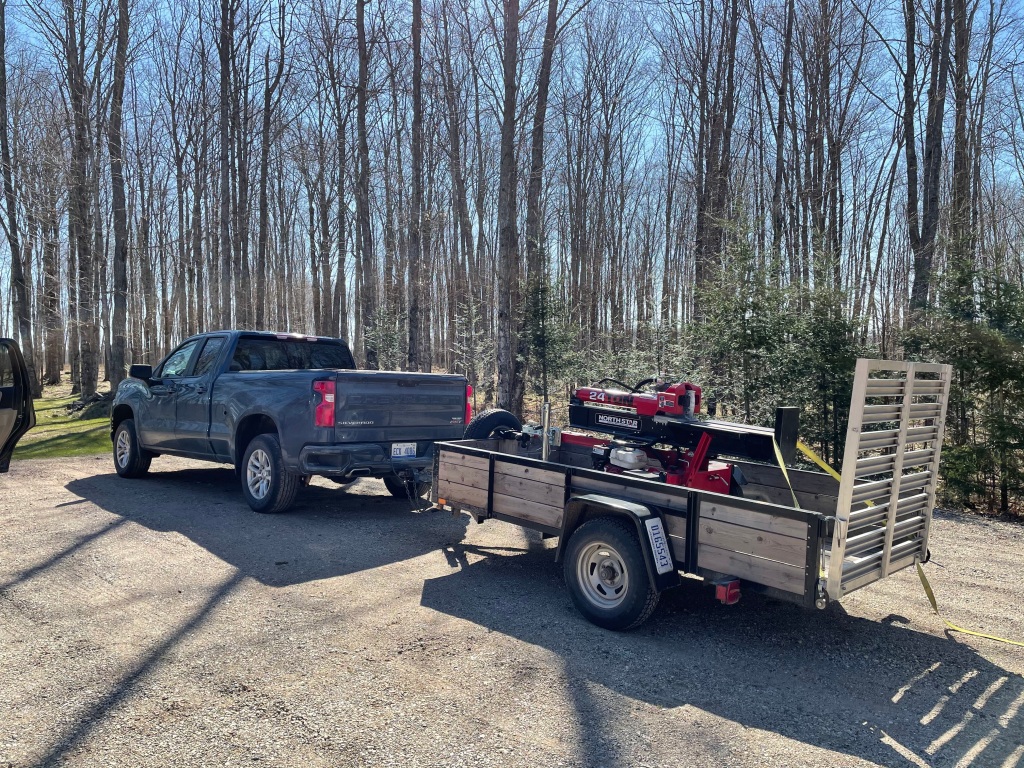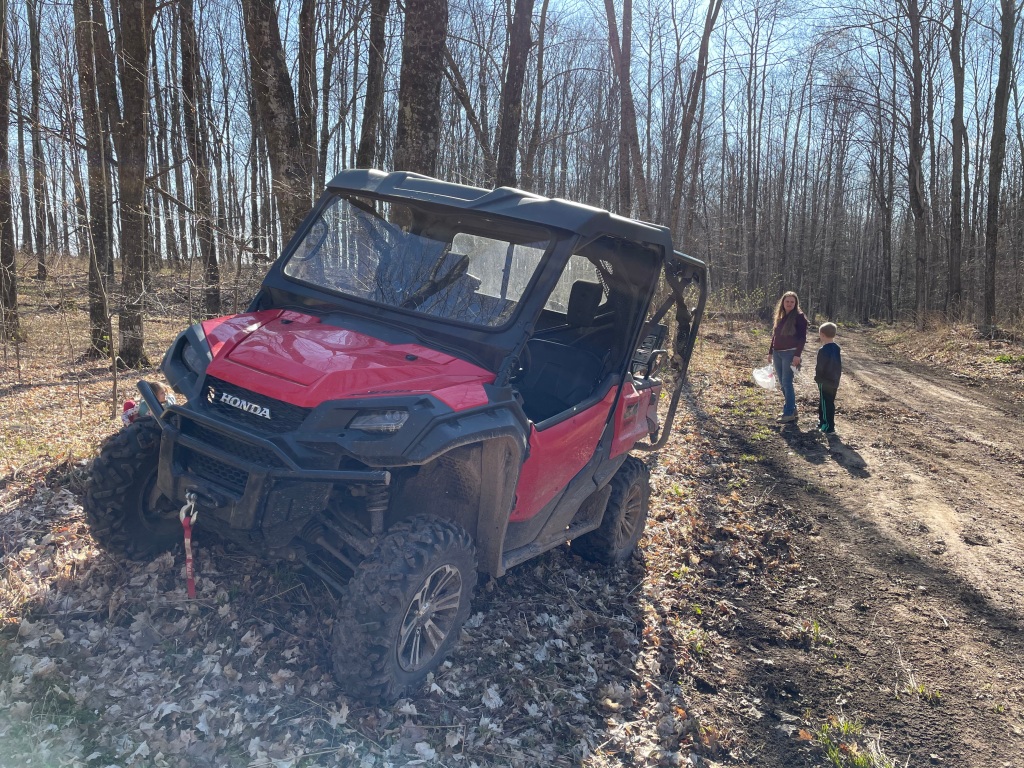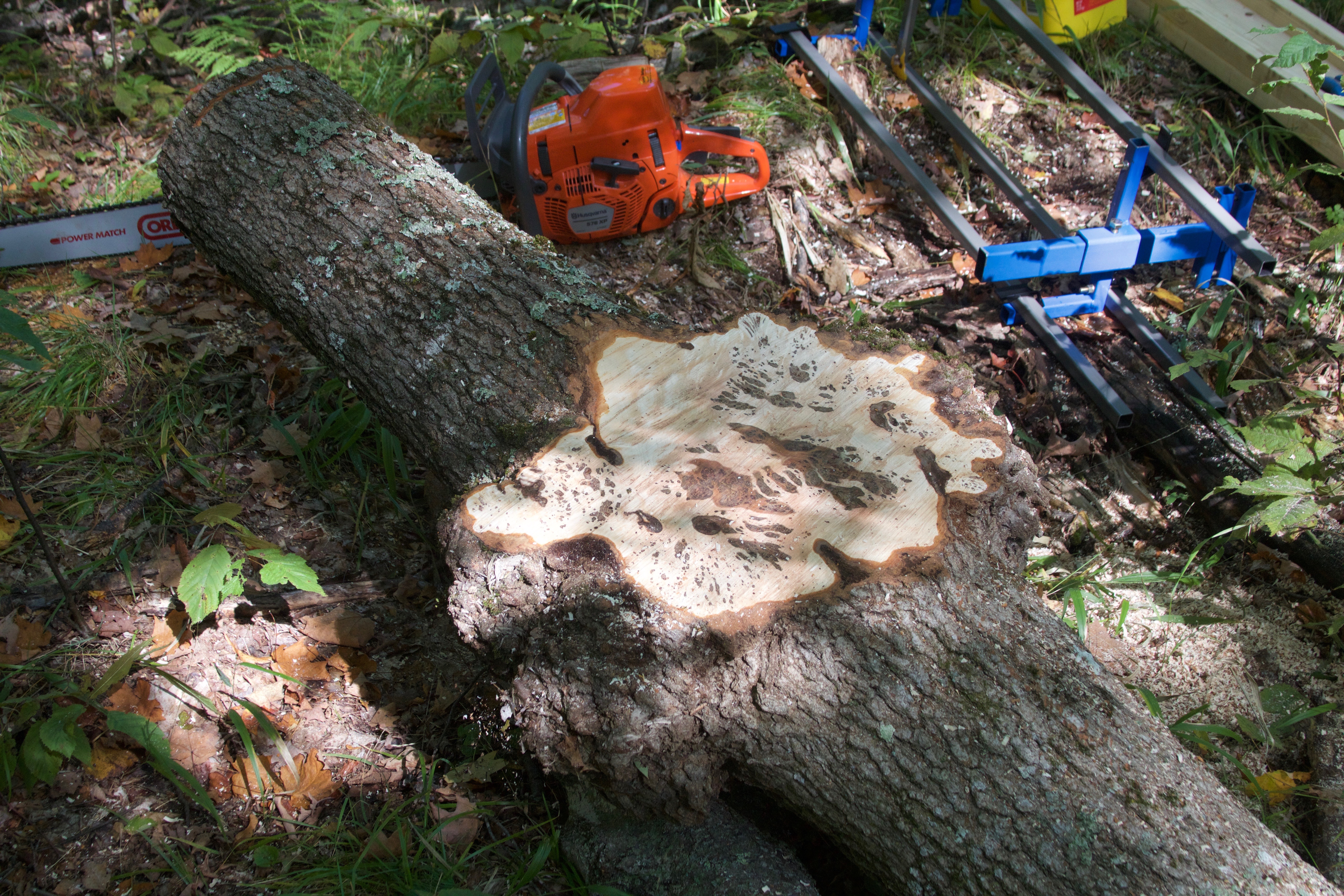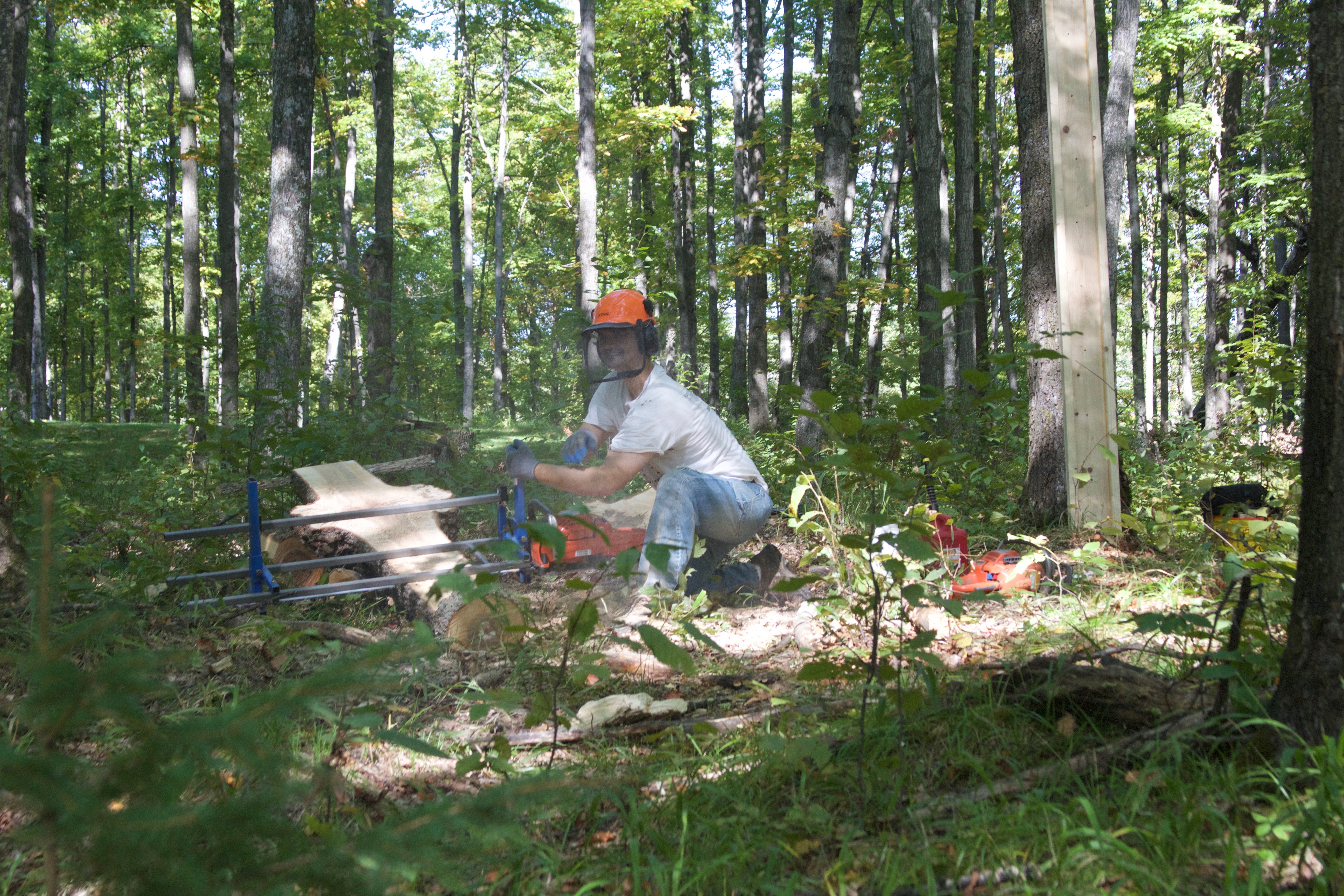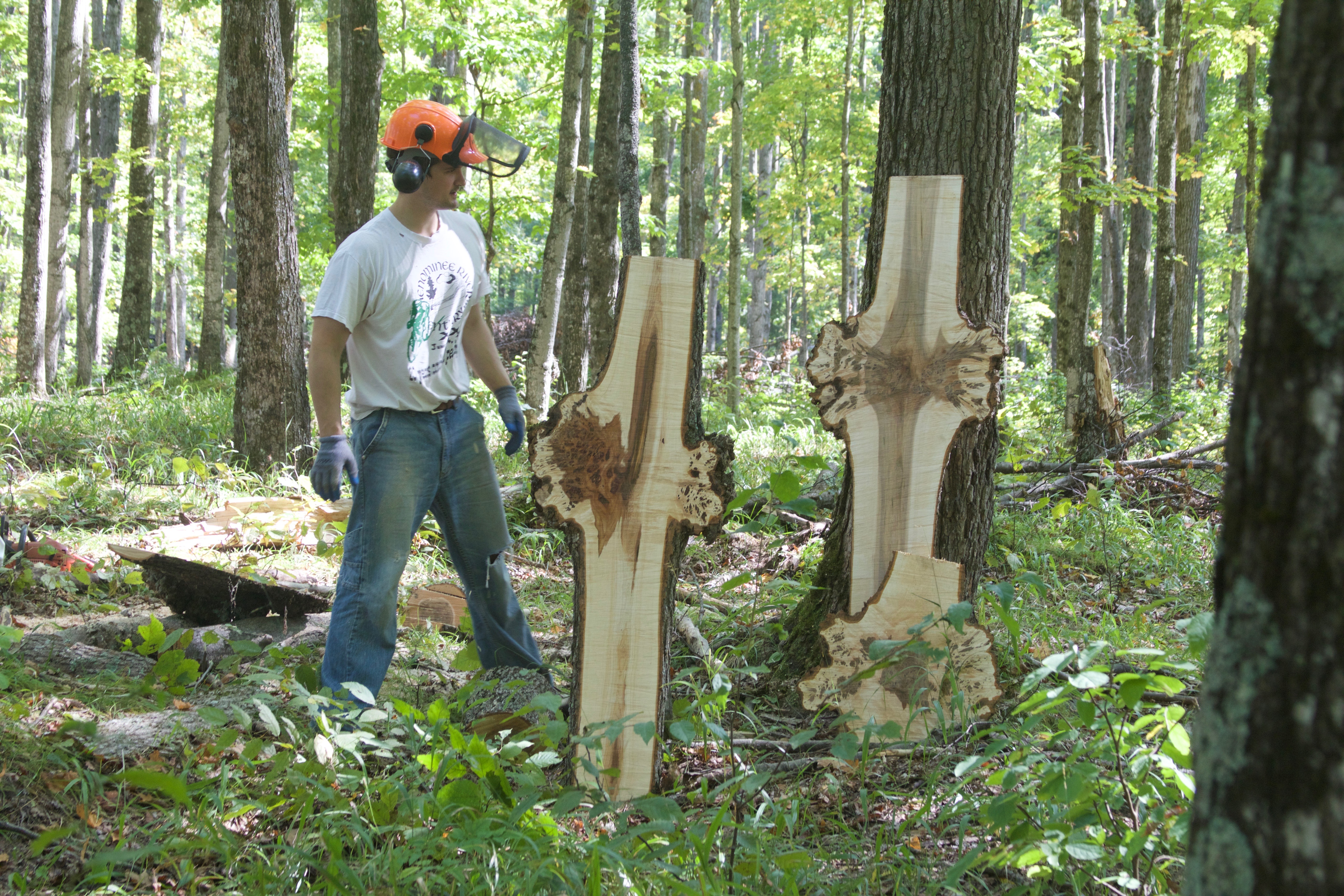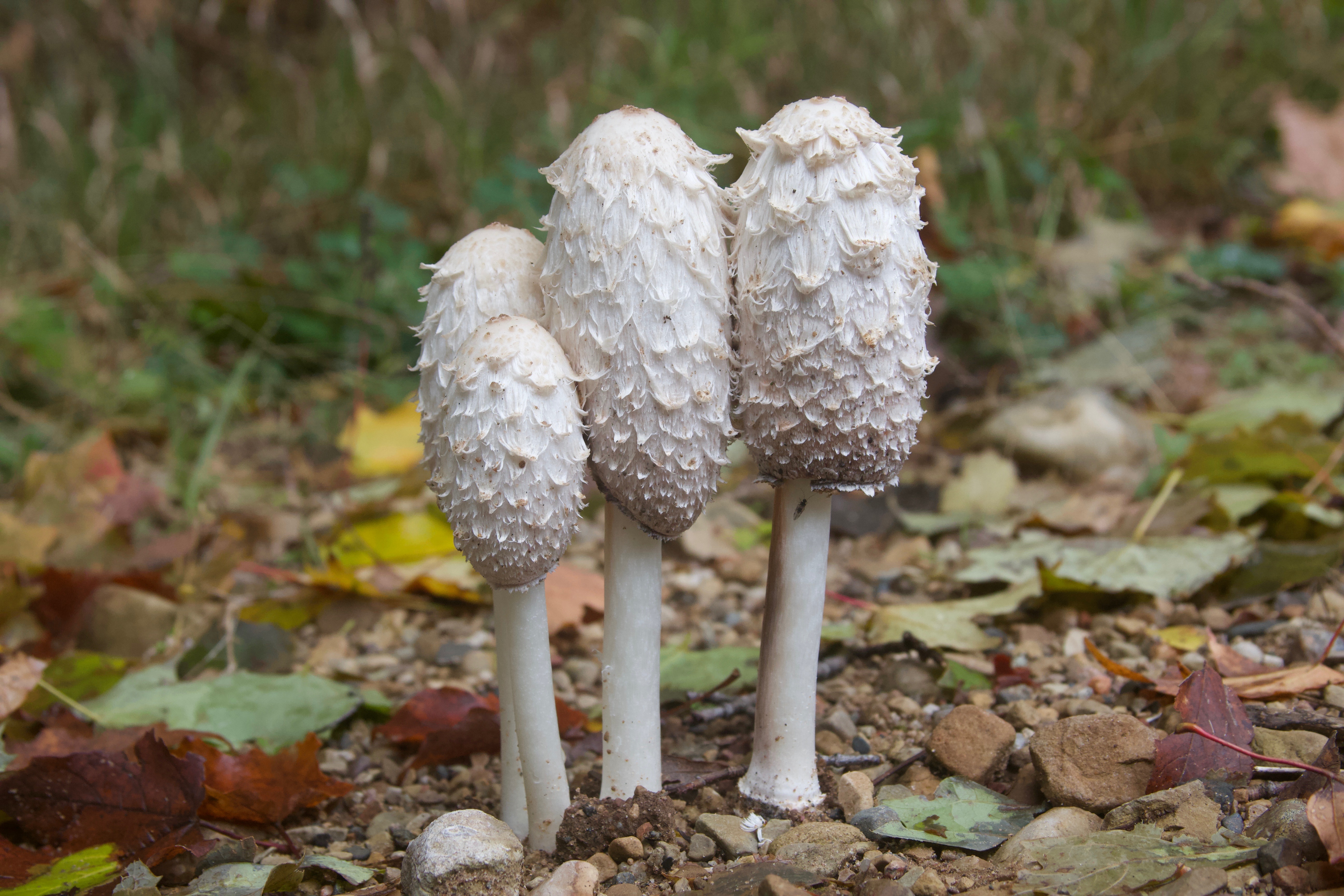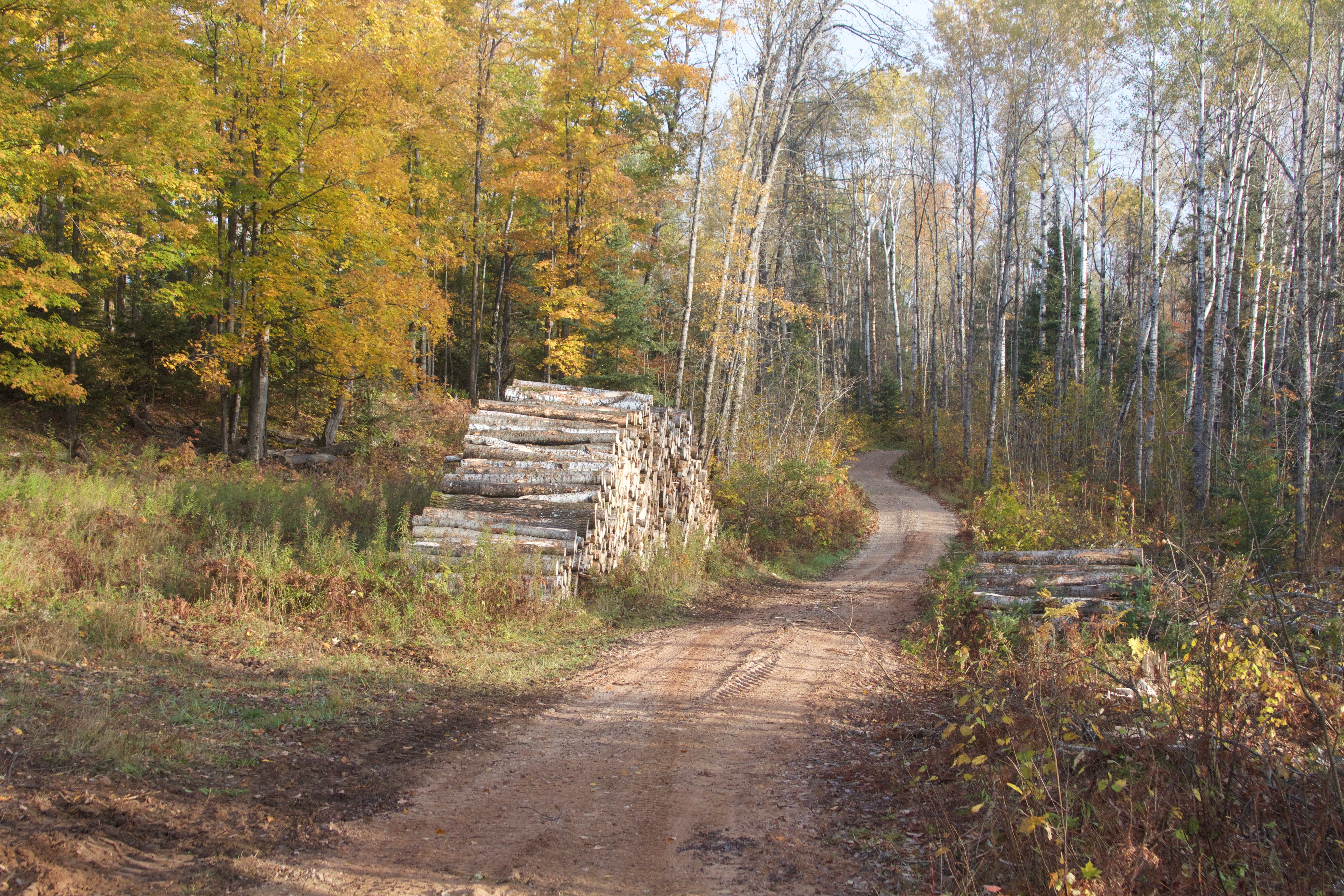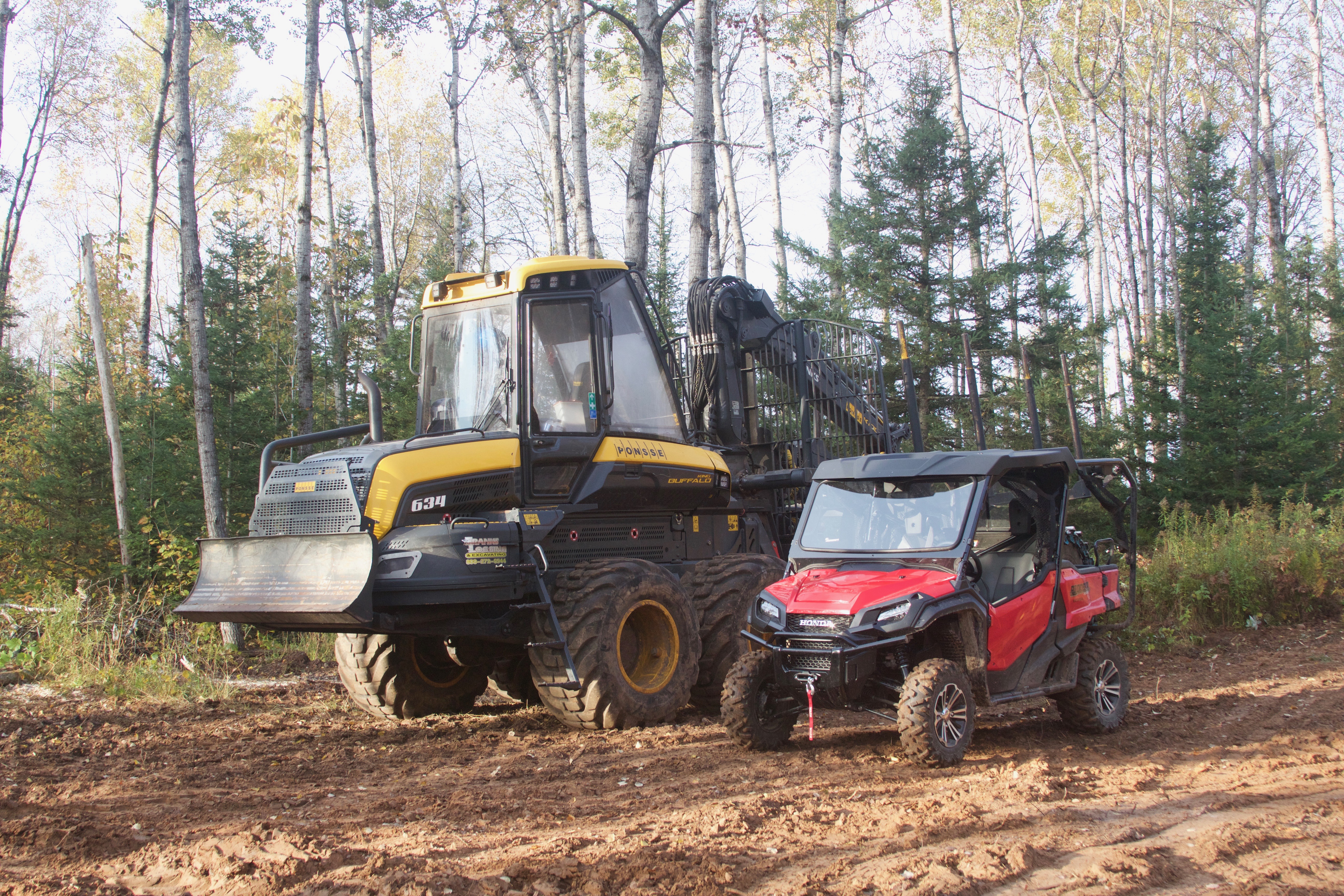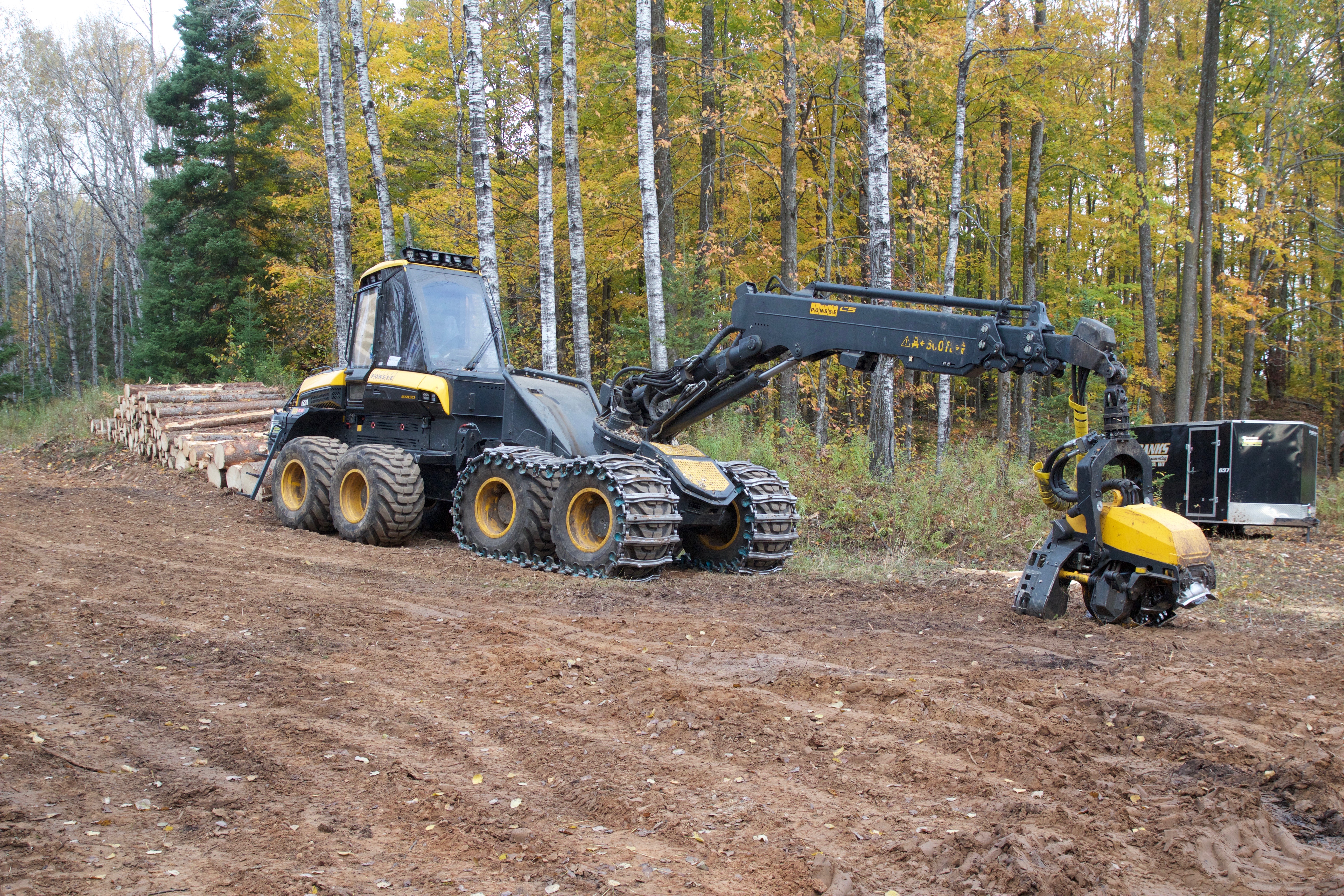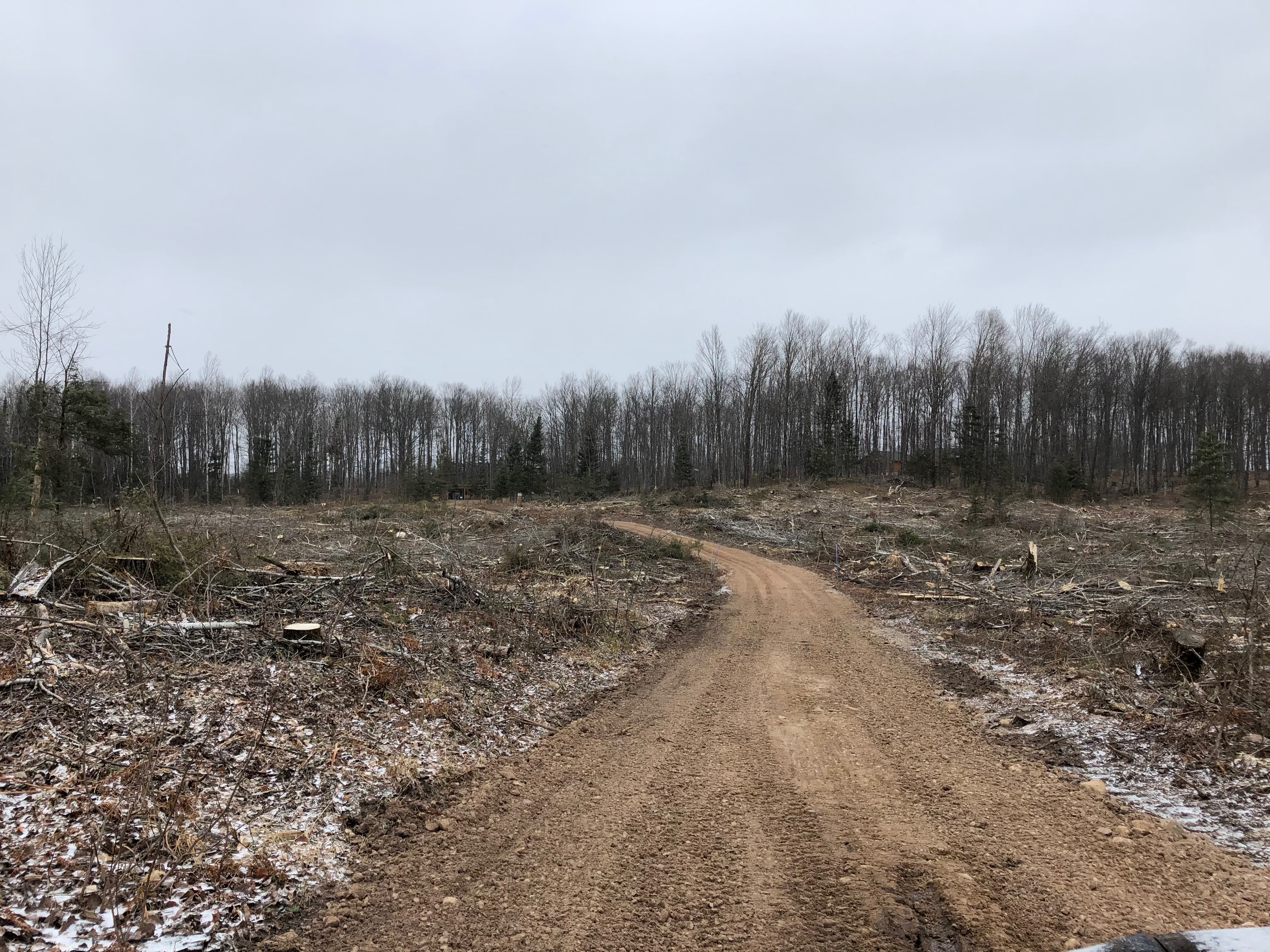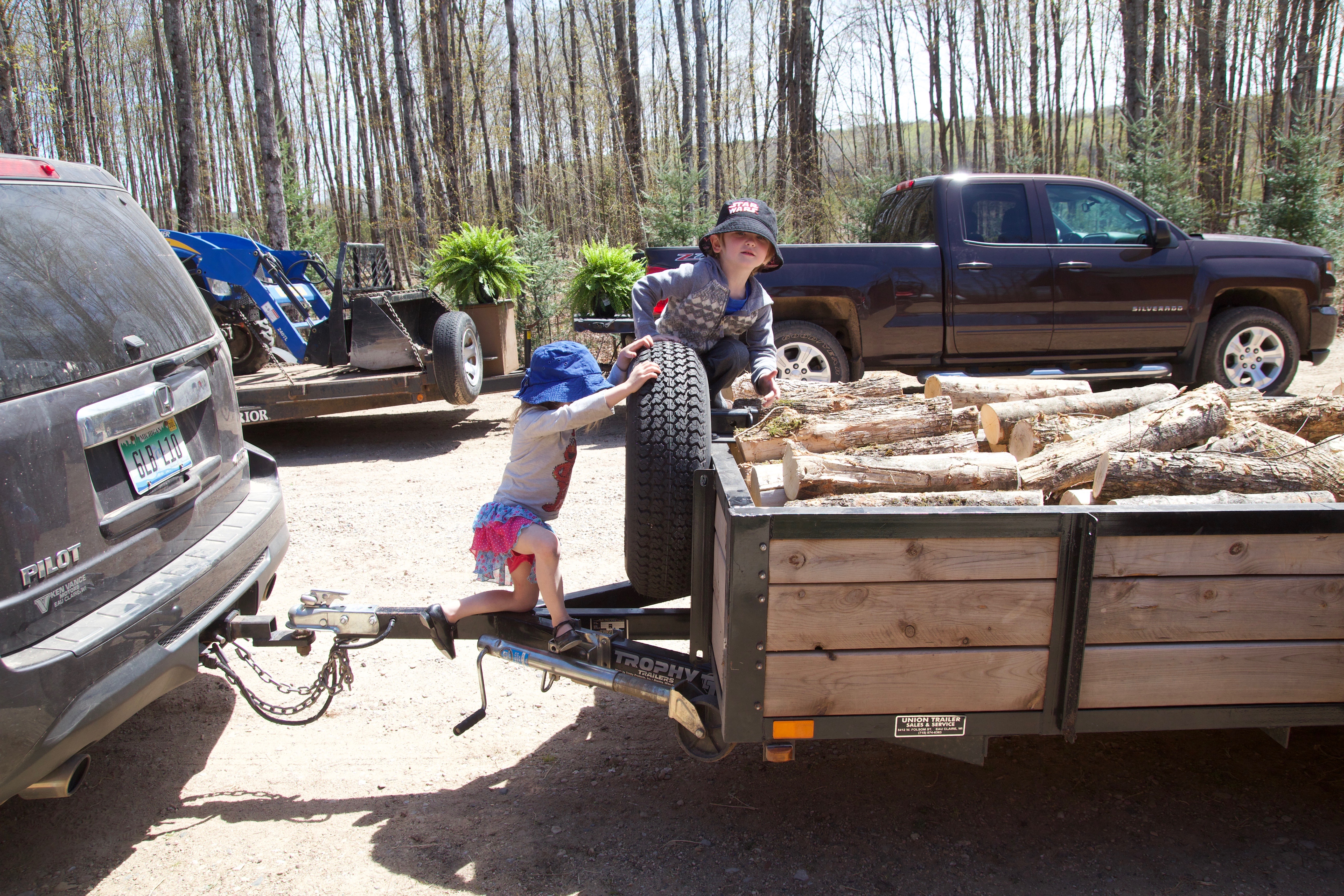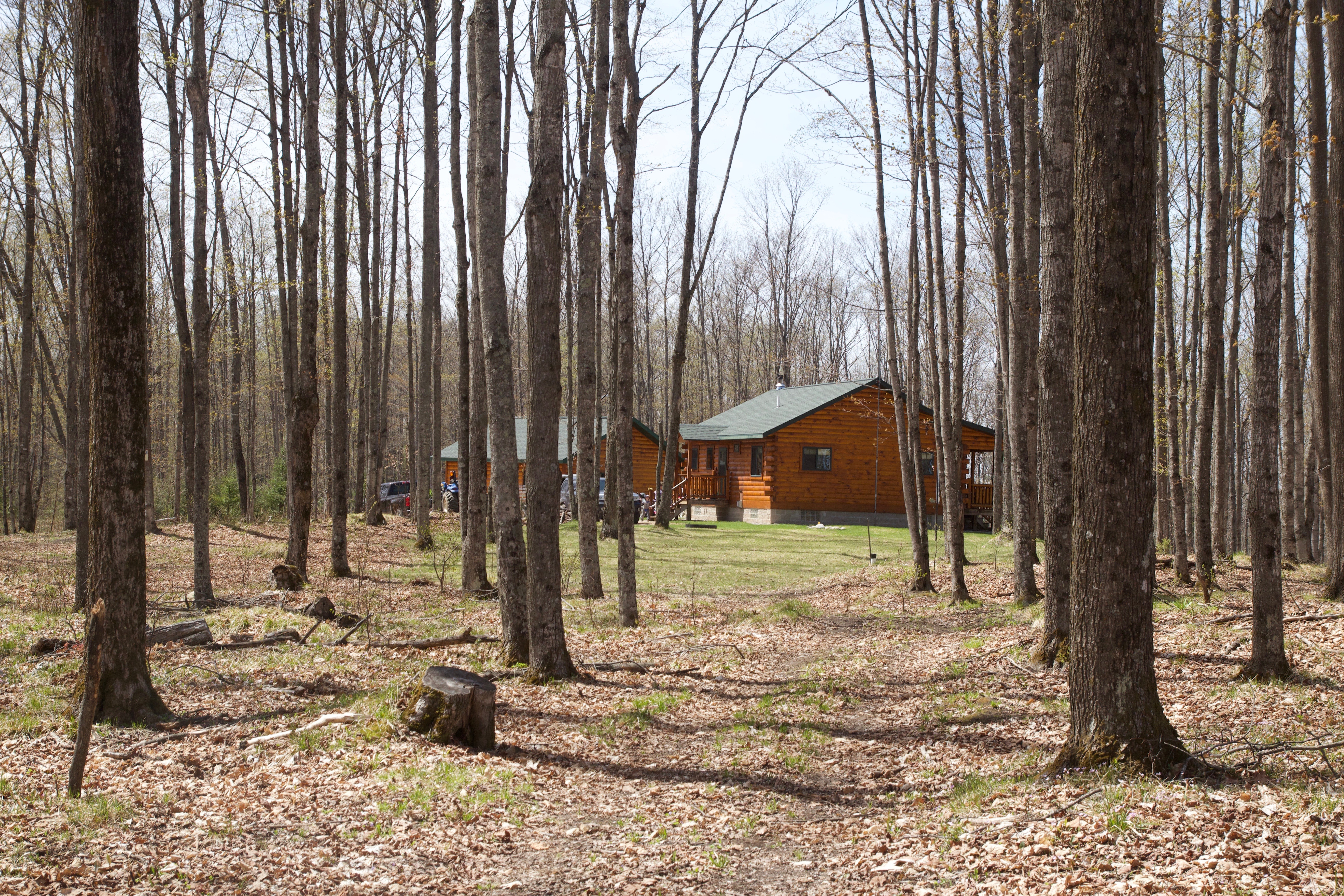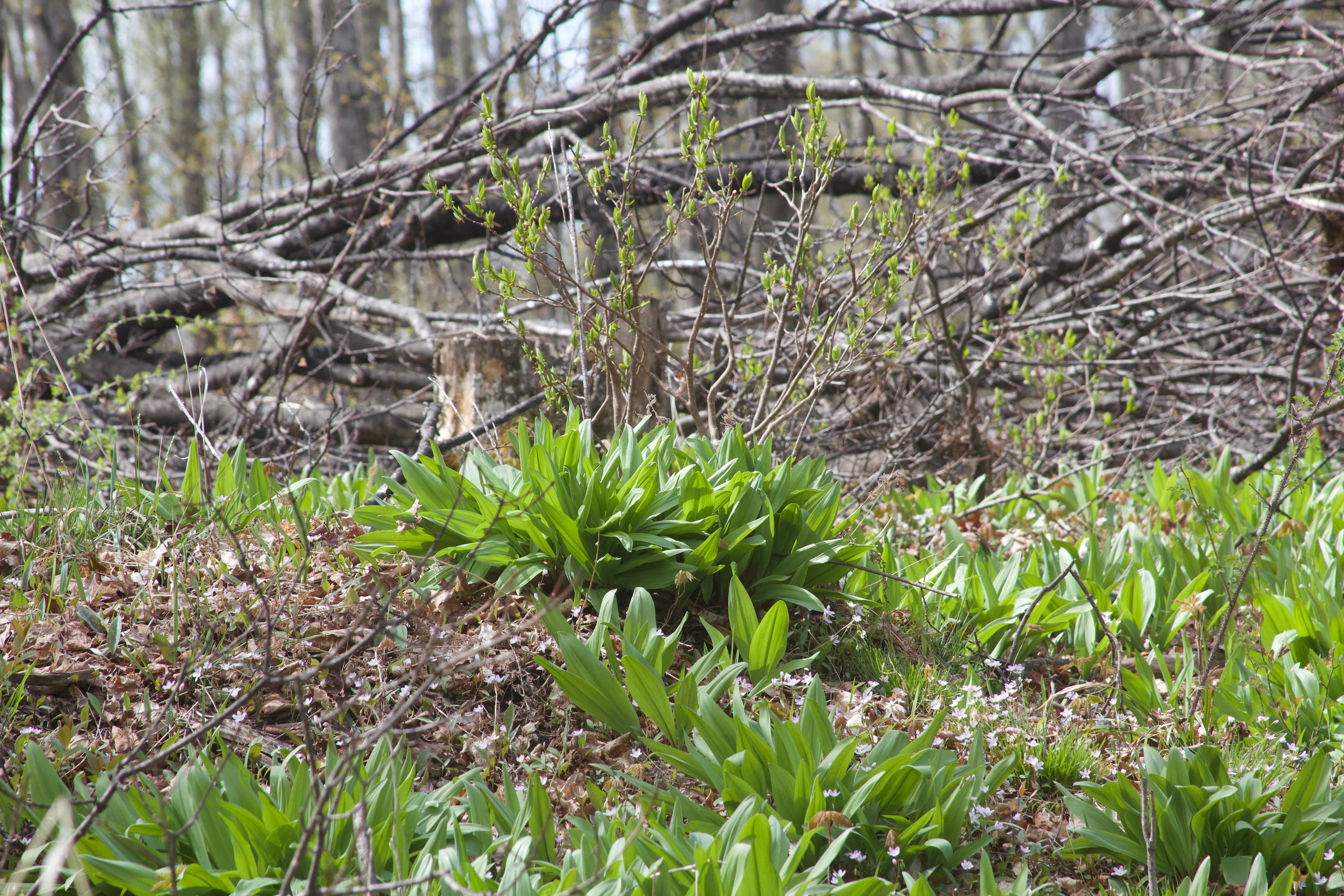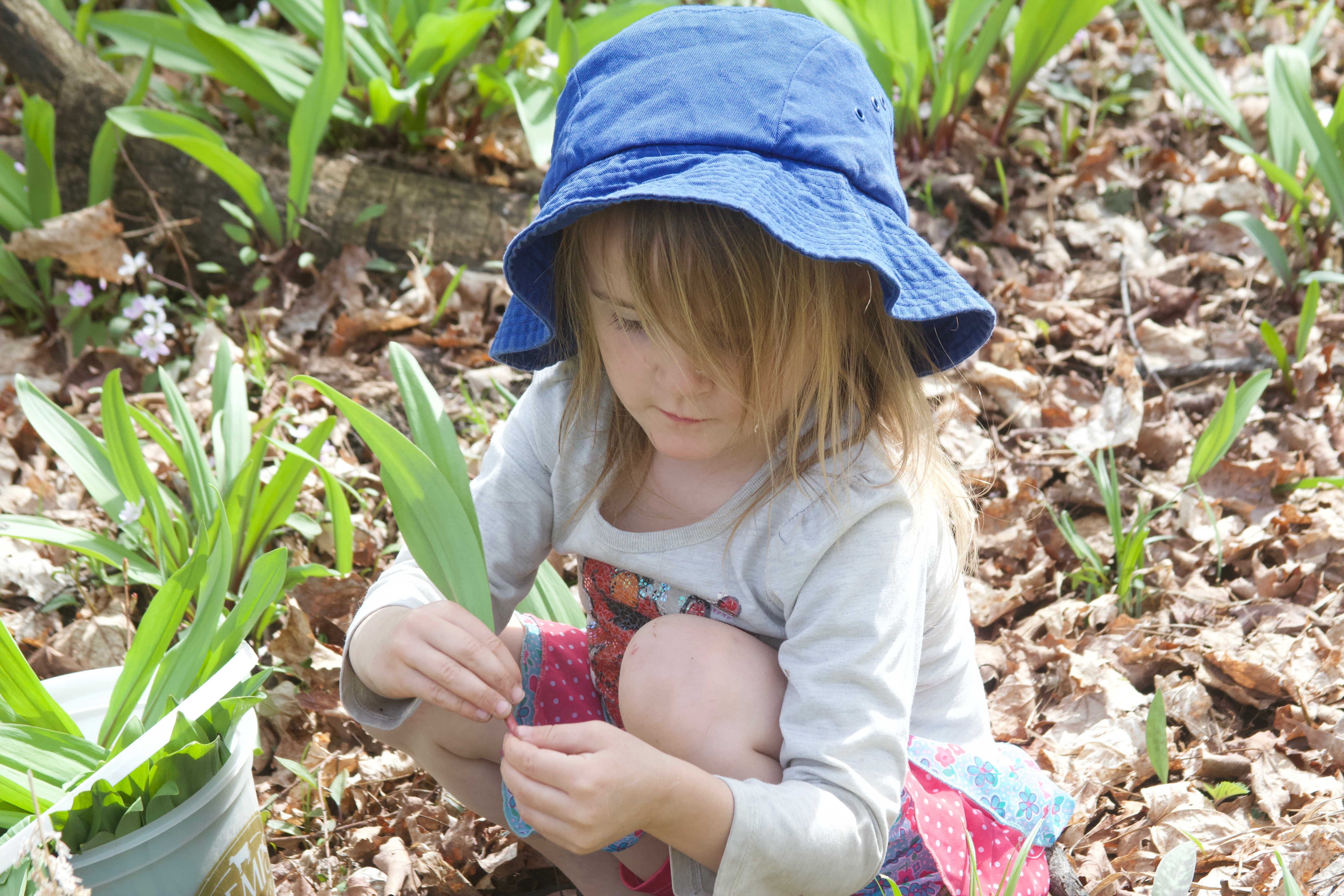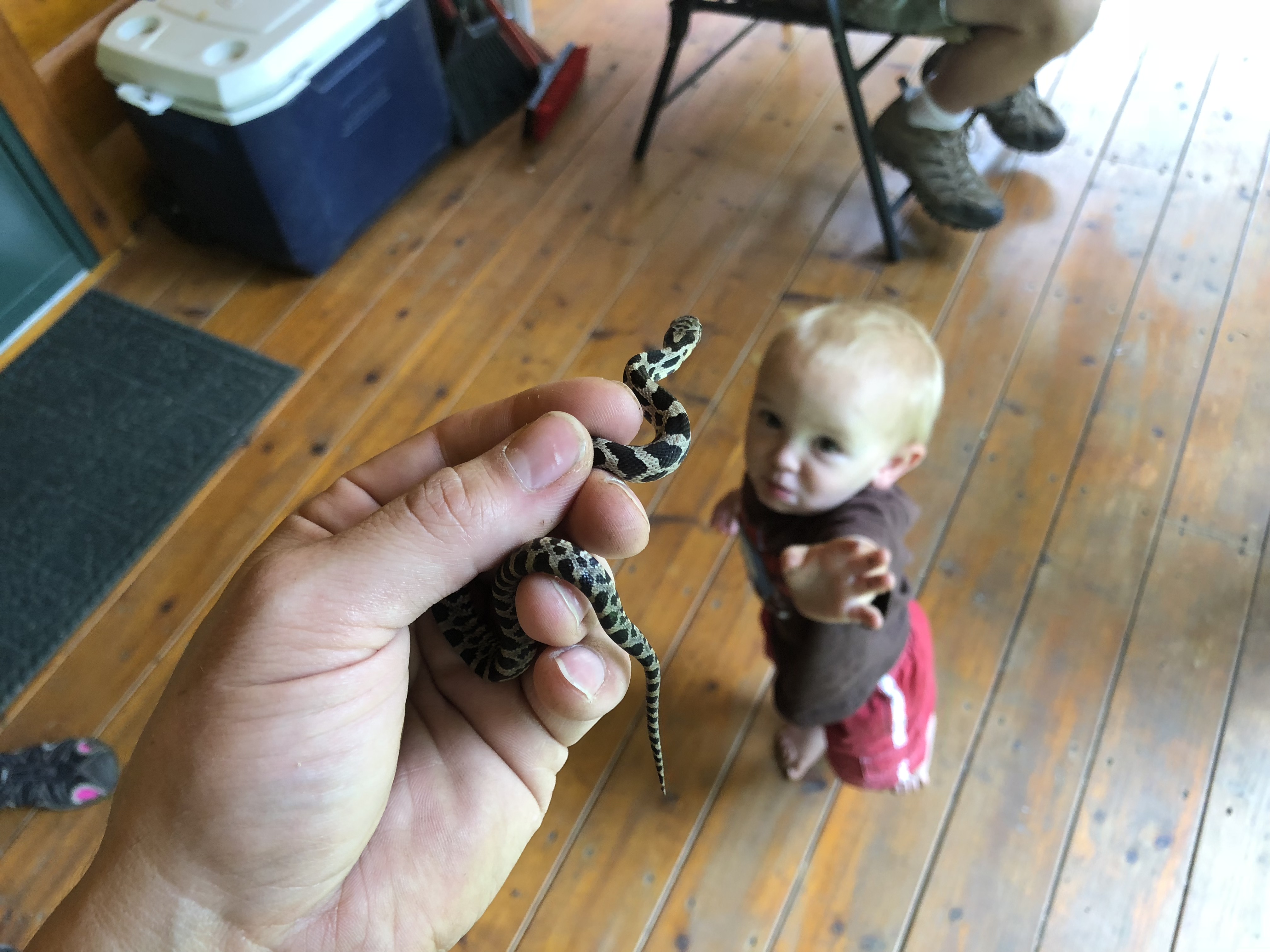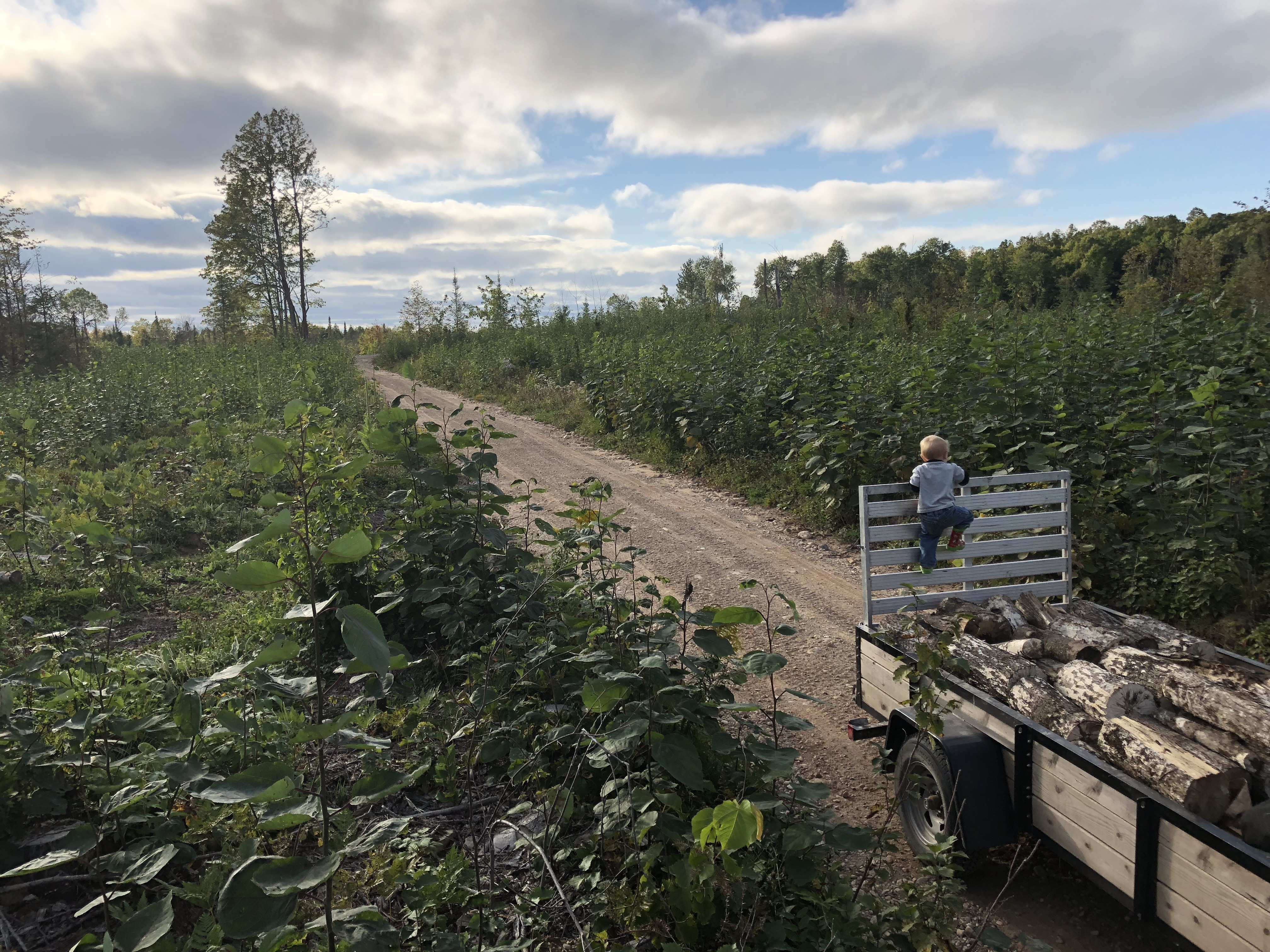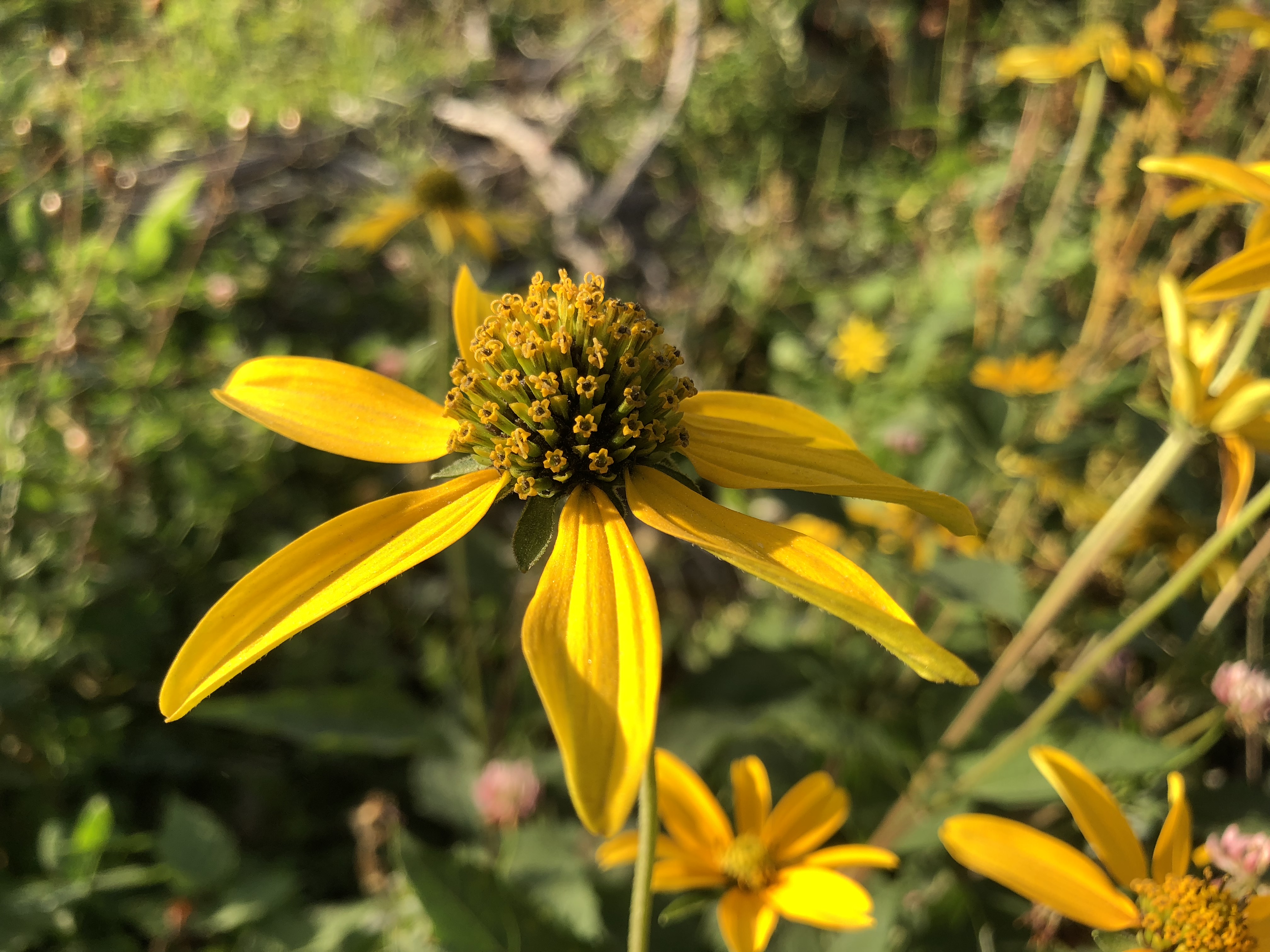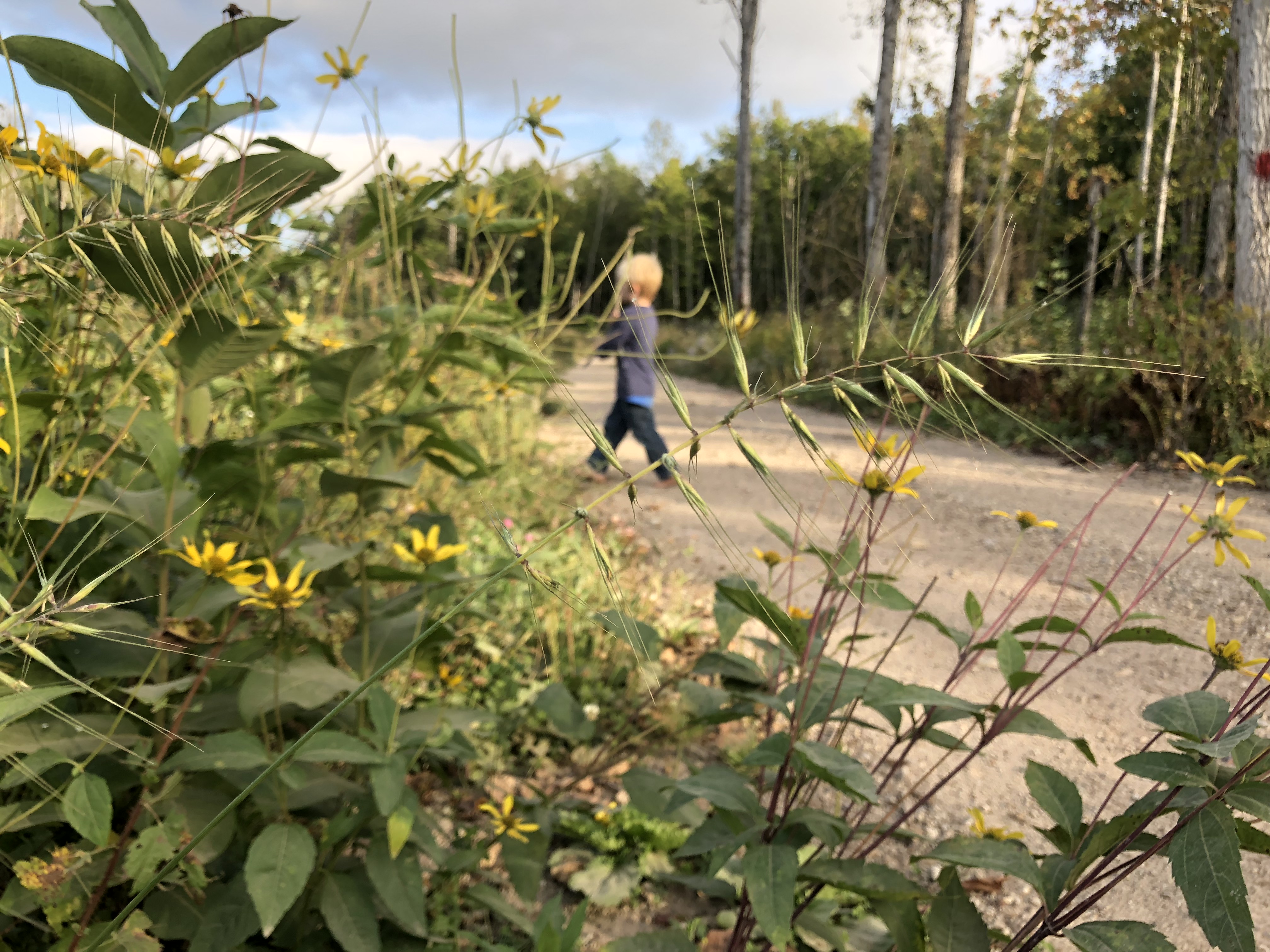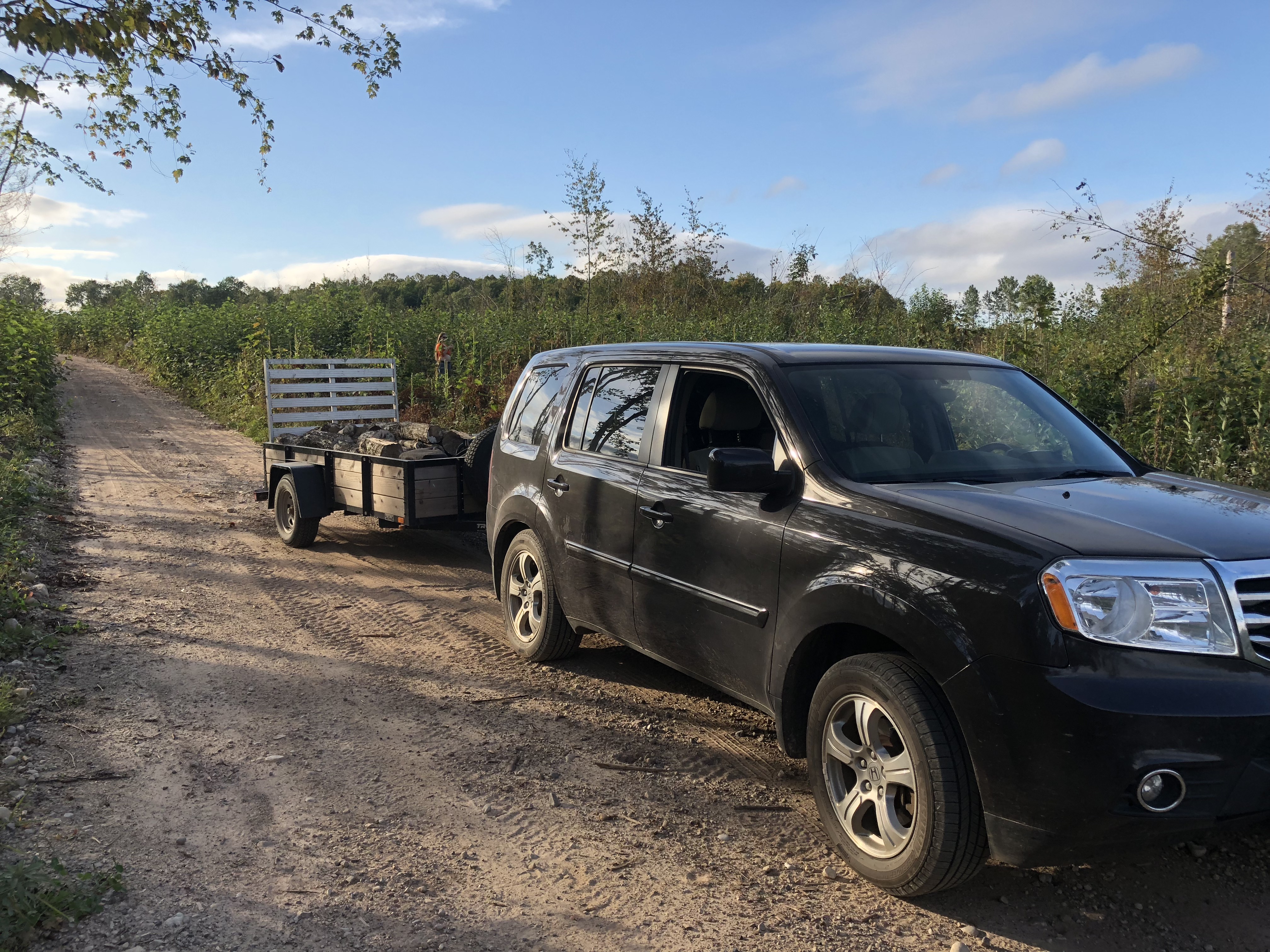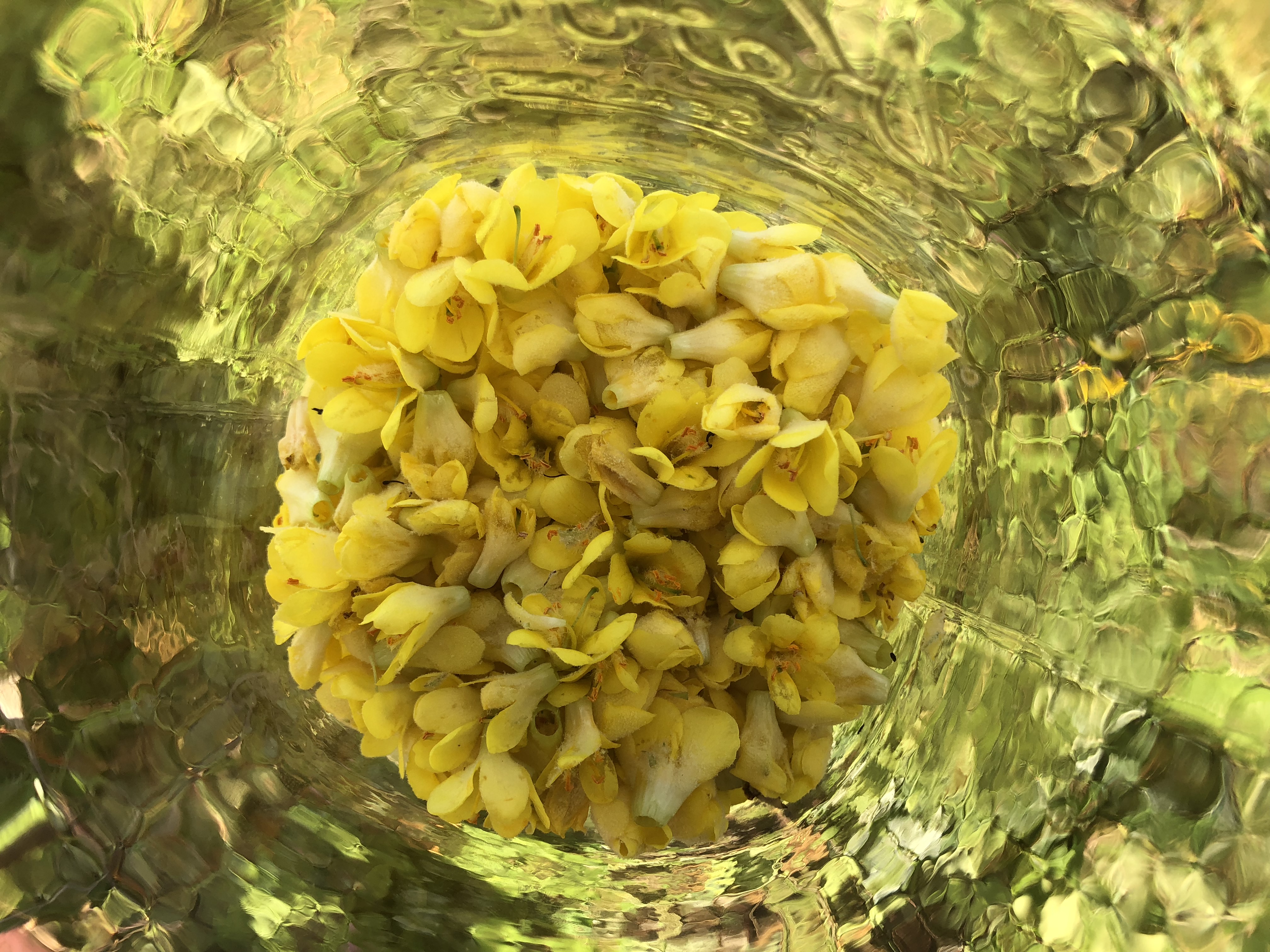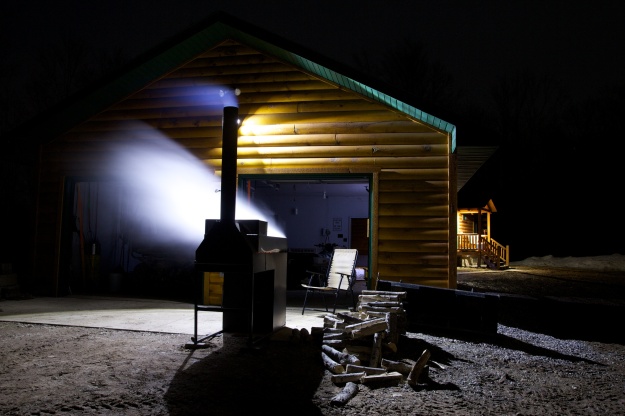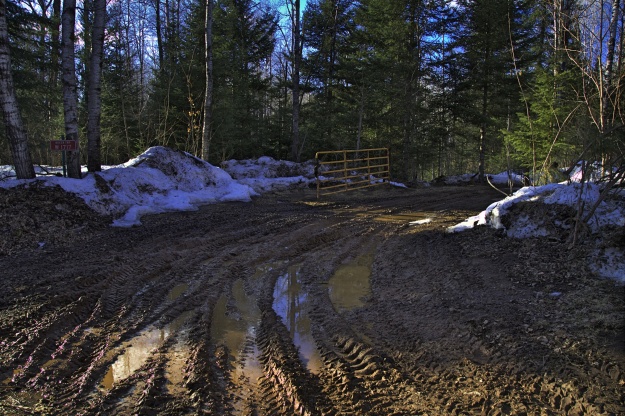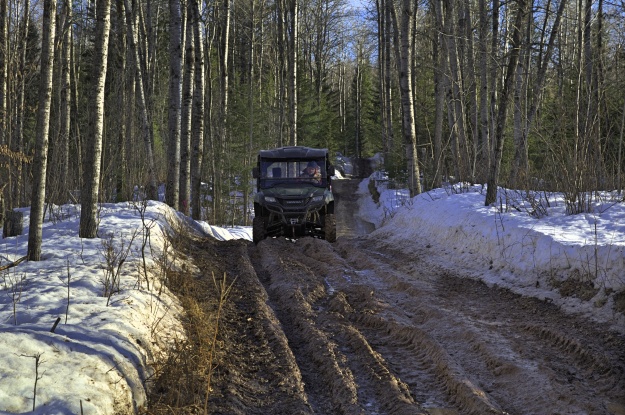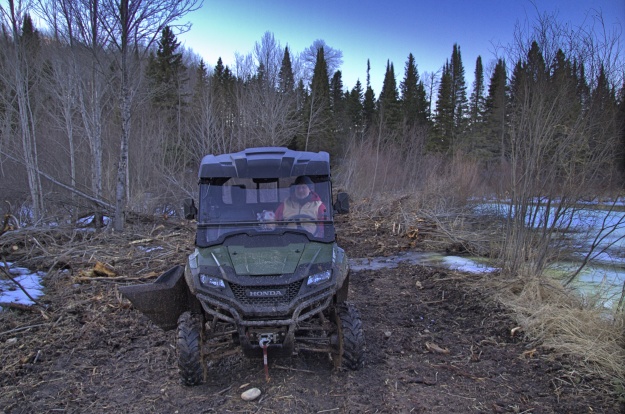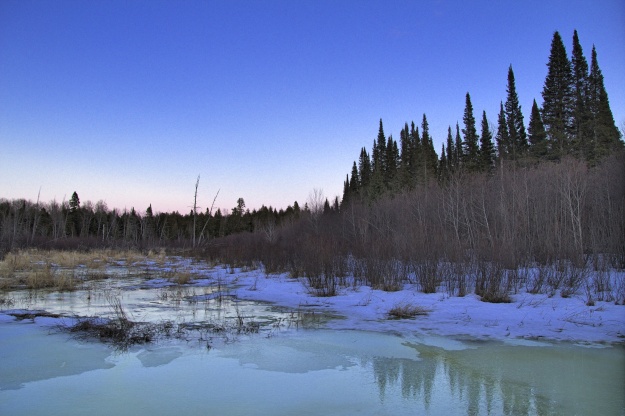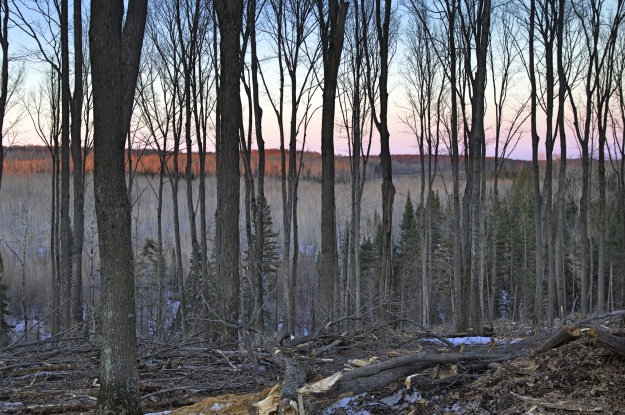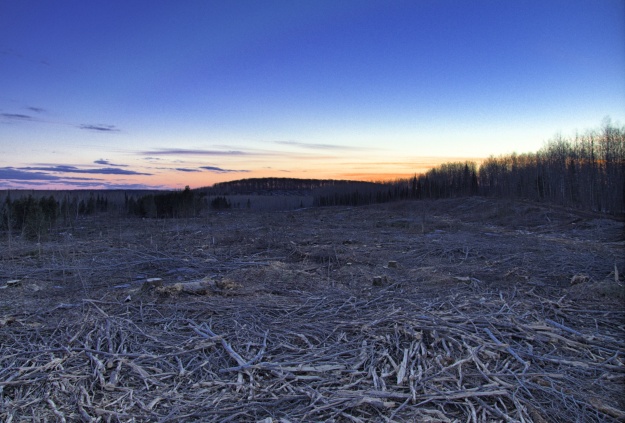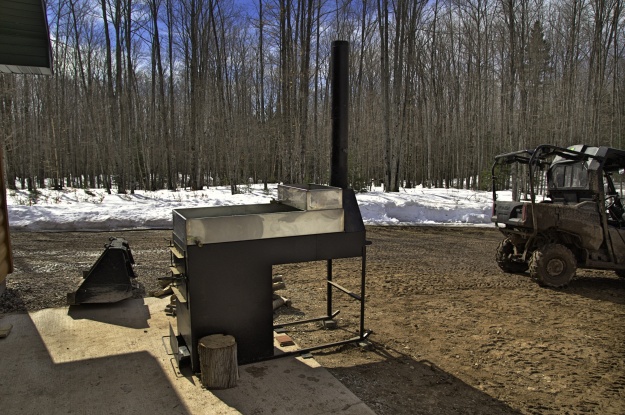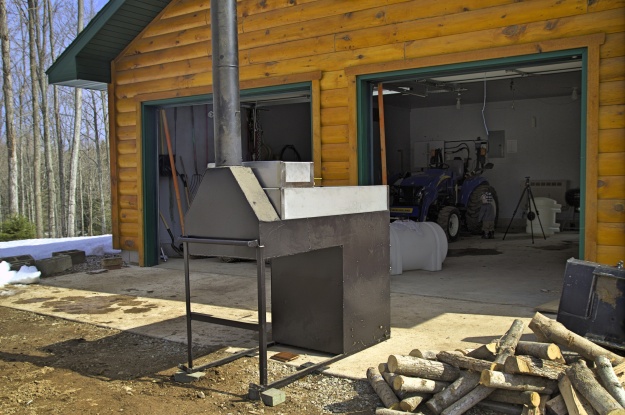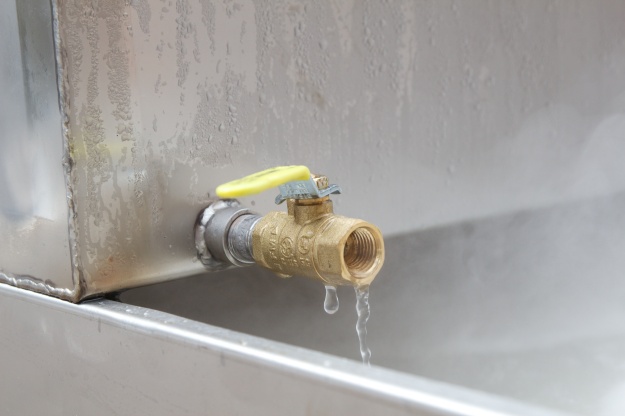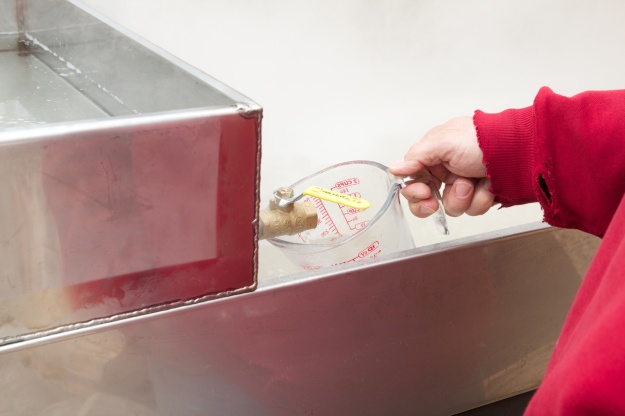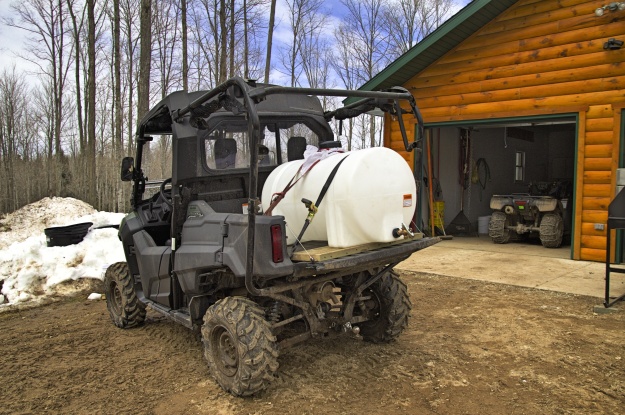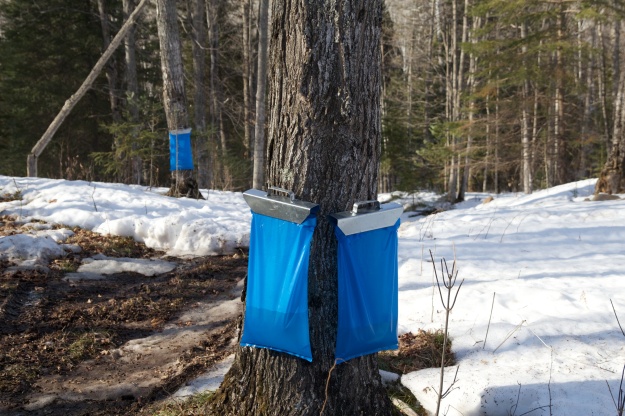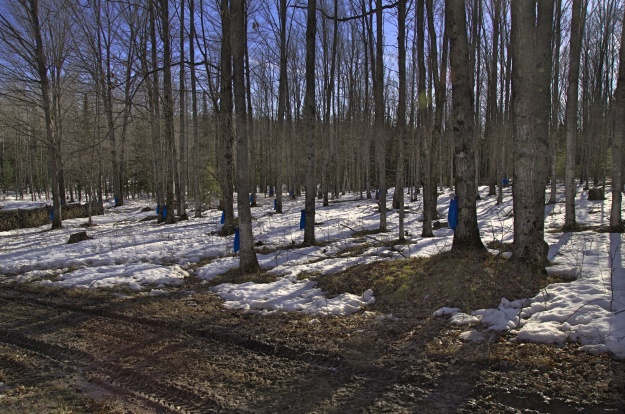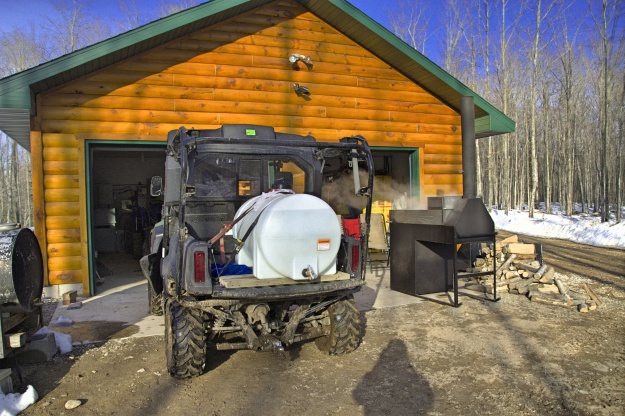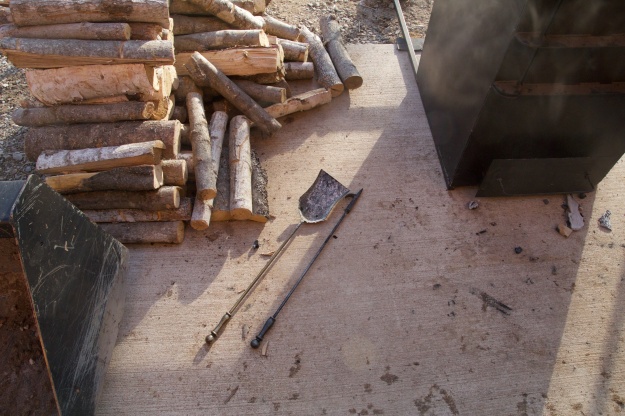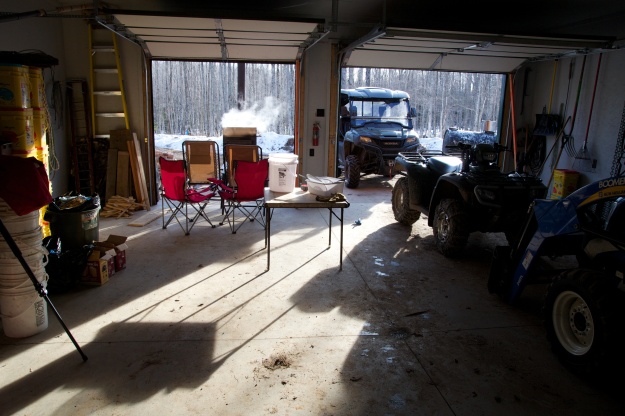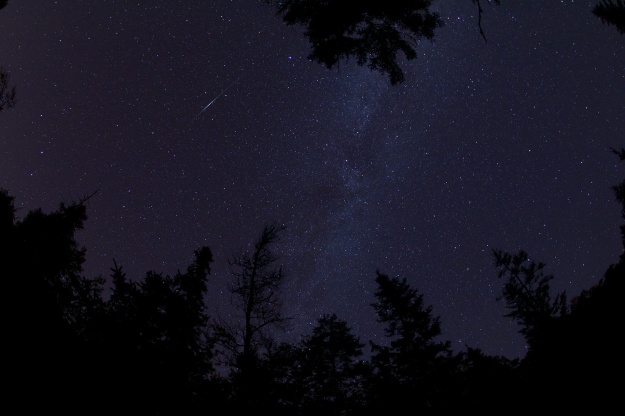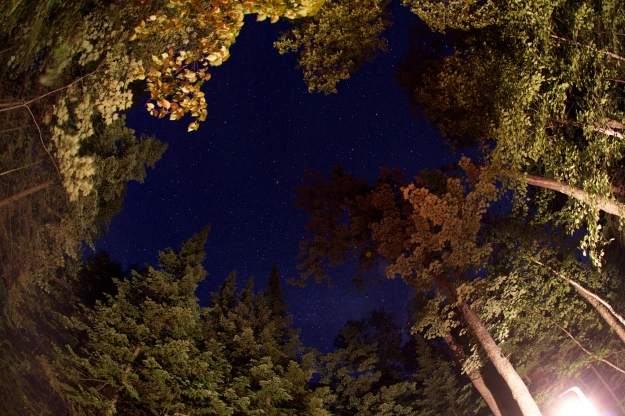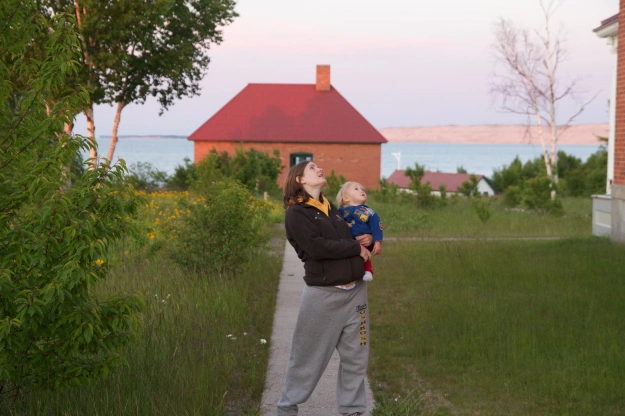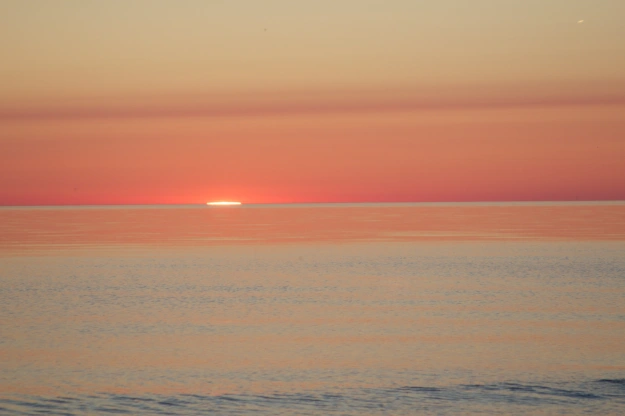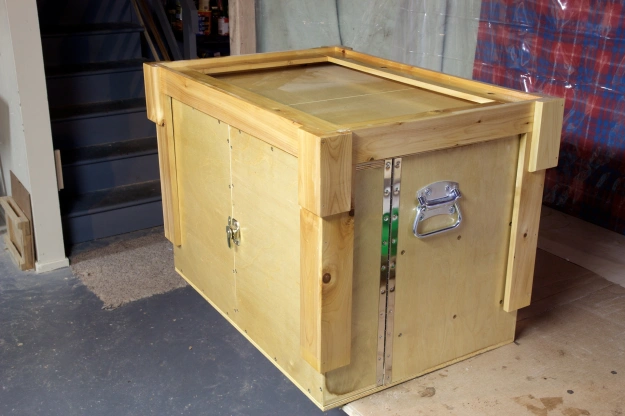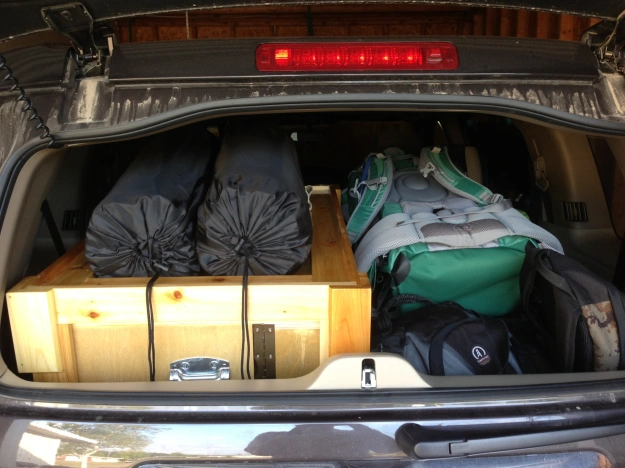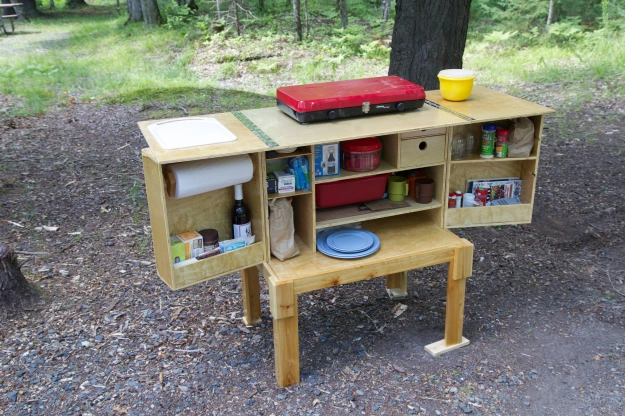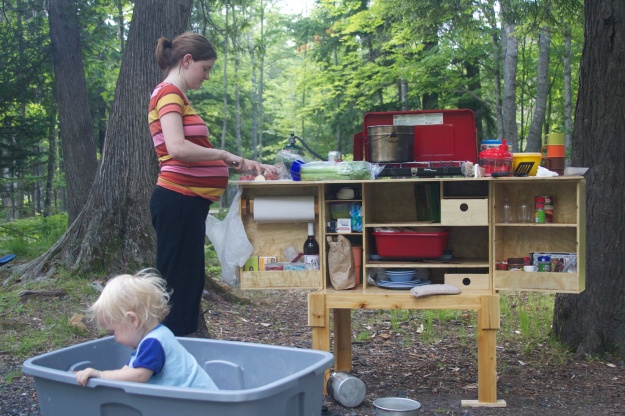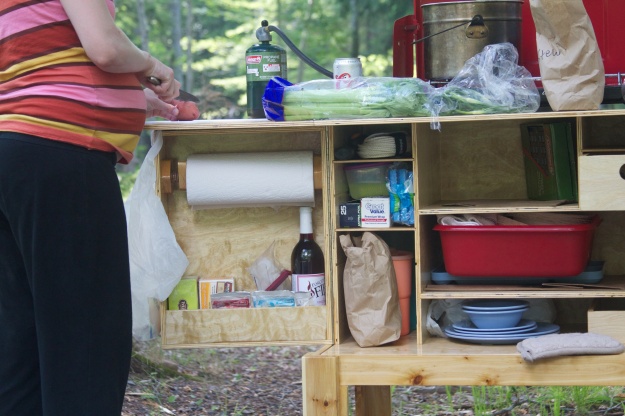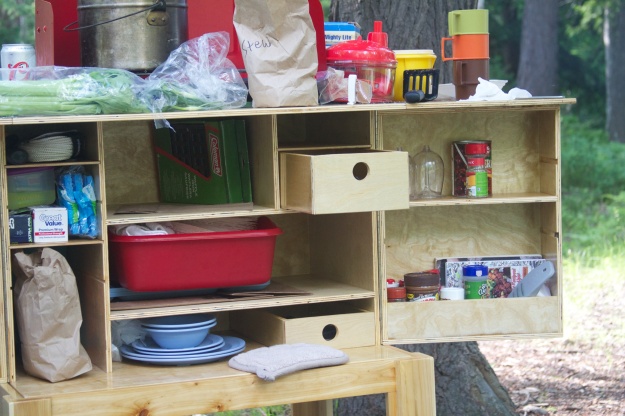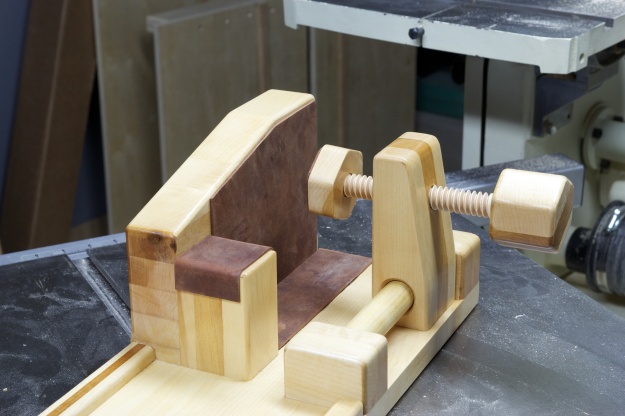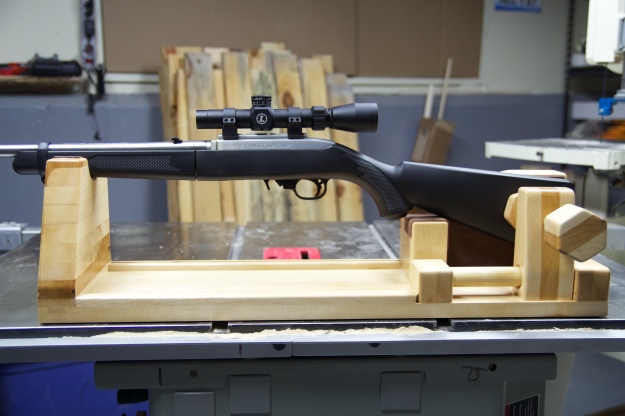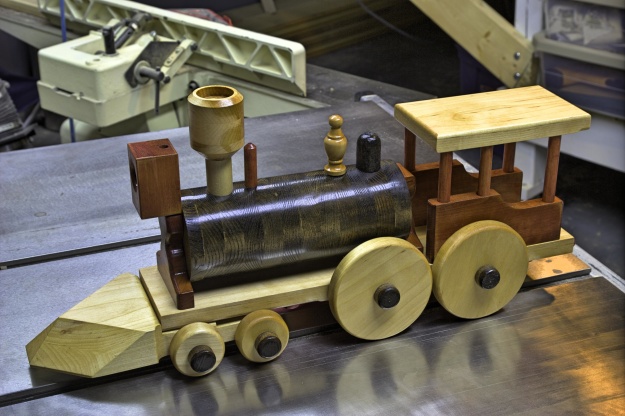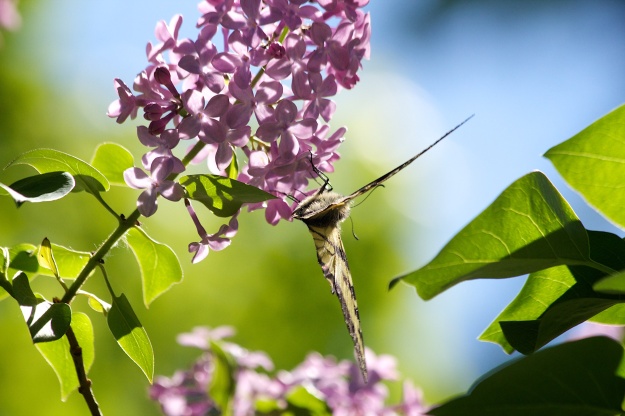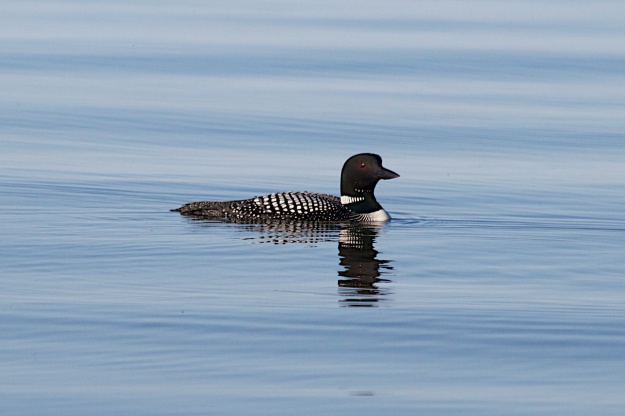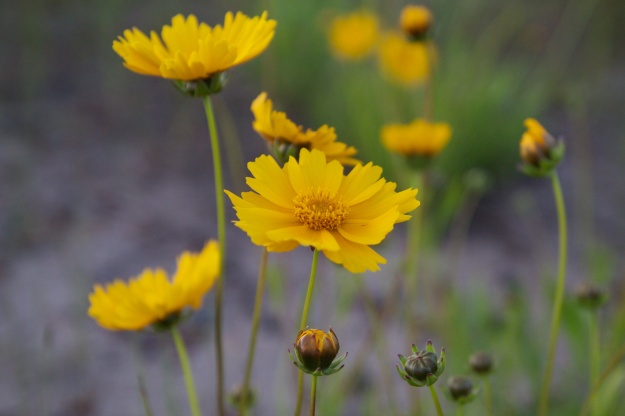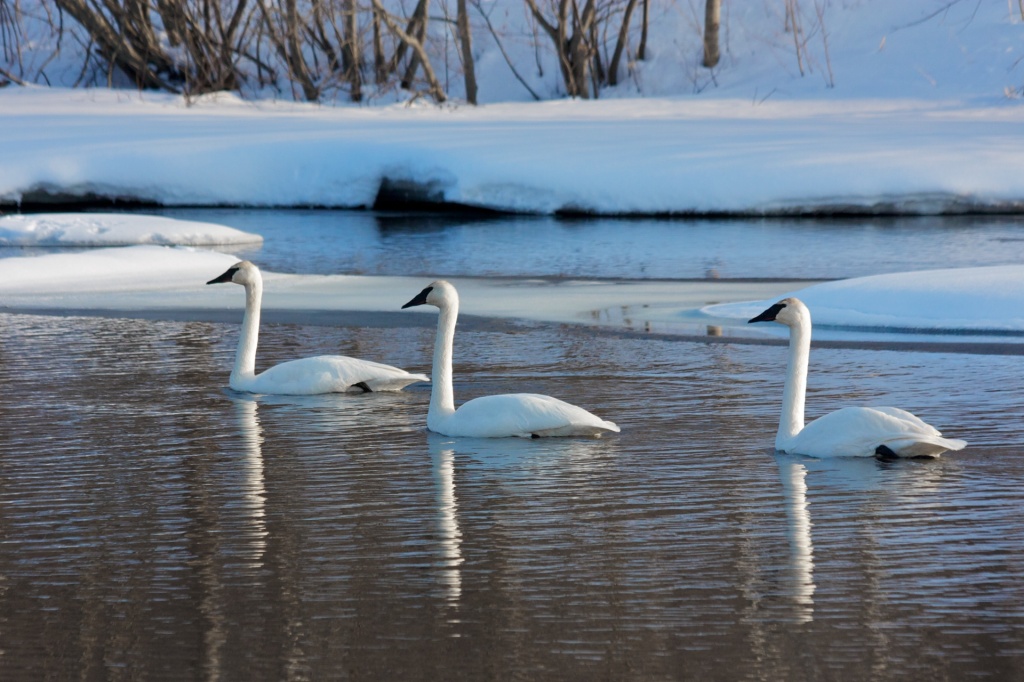8.2.2017 – Wednesday
I’m back at the cabin and having a look around. It’s different now. Fewer trees for sure. I remember first walking the land and seeing the towering Balsam standing like sentinels over the lowlands. Basswood reached above the crowns of the maple trees on the high ground. Poplar trees stood shoulder to shoulder along the two-rut road leading to the cabin. Those trees are absent. Their bones litter the forest floor as reminders of what the forest used to be.
July 10, 2008: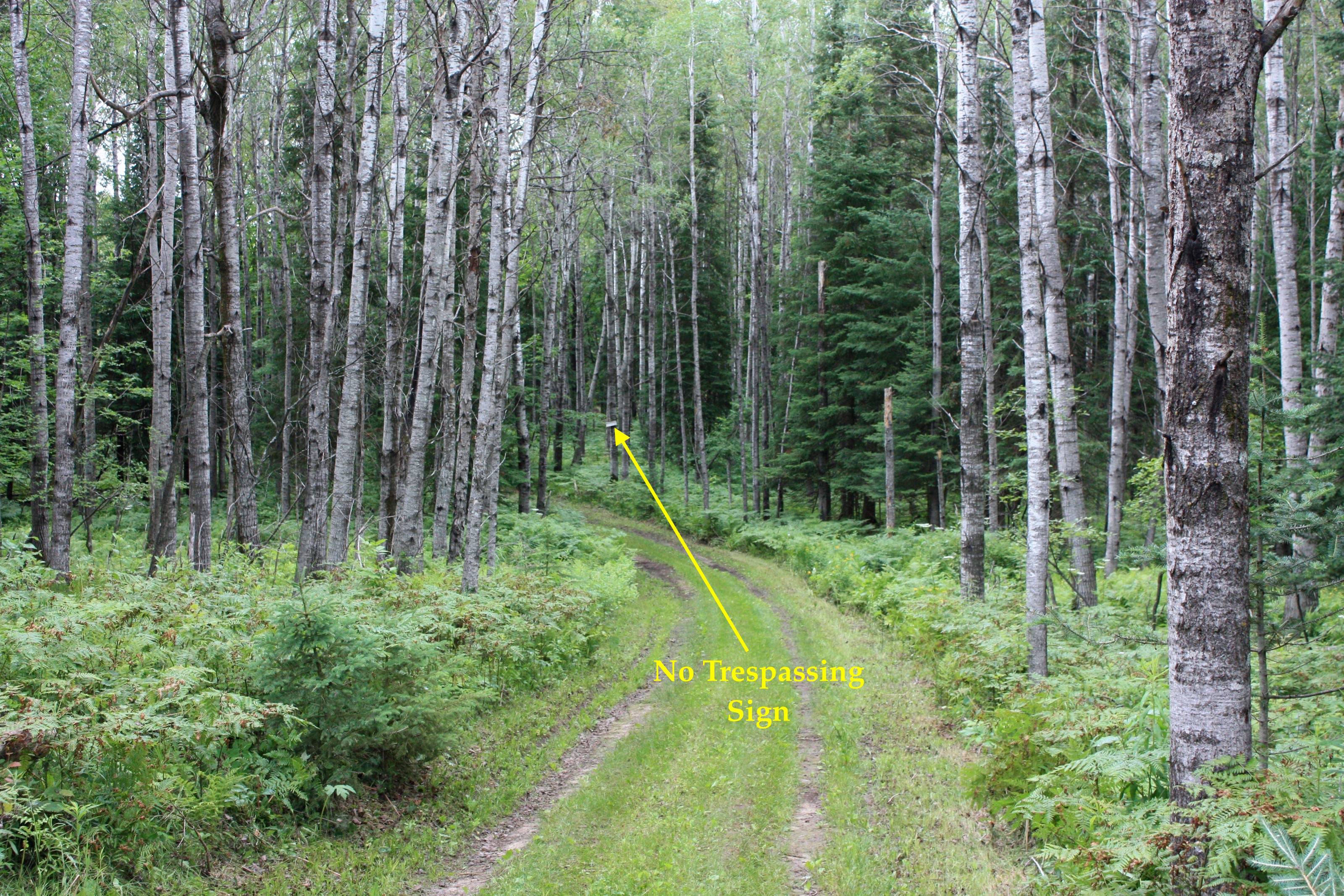
On July 6, at about 8pm EST, a powerful storm moved through. It moved swiftly over the cabin and created powerful strait line winds. These jest of wind were irregular but uniformly oriented. While no-one was at the cabin at the time of the storm, wind speed was projected to reach 90 mph. Patches of forest were leveled and trees that shouldn’t have ben felled by wind were tore out root and stem. Basswood trees snapped off 30 feet up as the crowns were forced toward horizontal. The point of failure on some maples was over a foot thick and over 20 feet off the ground.
July 12, 2017: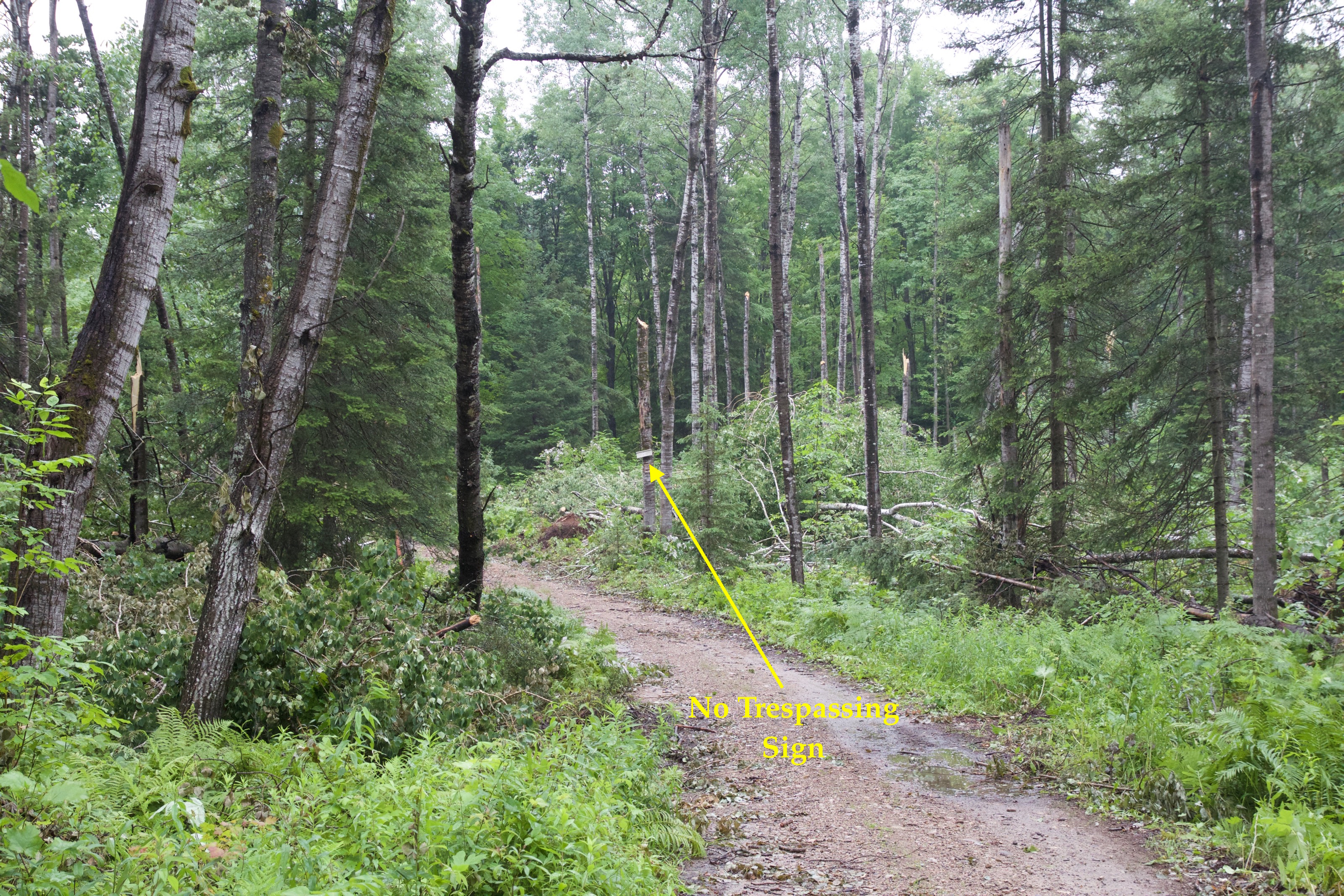
I arrived on Monday, after work. The storm passed through in the twilight hours on Thursday. The County had just opened up the main graveled road. The Ol’ man had warned me to take the long way around because the road was impassible by vehicle. While grateful for his wisdom I ignored his advice. There were heavy equipment tracks on the roadway from what looked like a large front end loader. Word was passed to me that the storm hit hardest on the other end of the graveled road. I figured they would start at that end of the road (the end of the road closest to the County garage). Seeing tracks at the North end was a sign that the road might be open again. I was also prepared. I had two Husqvarna 61 chainsaws freshly tuned up with just-sharpened chains. Over the past three years I’ve cut about 40 cord of firewood and become quite proficient with my saws and with my sharpening techniques. One saw would have done they job but there was room for two in the trunk of my 2007 Honda Civic.
As I approached the area hit hardest by the wind storm I slowed my pace. The 3 inches of ground clearance that my economy car yielded didn’t inspire enough confidence to drive swiftly as limbs and leaves began to litter the roadway. I came to an intersection and met a County truck. It was a large and fairly new Ford F-250 crew cab. I got the good news that the road was now open. Along with the good news I also got, “are you crazy driving that through here?” Not wishing to explain the merits of driving an automobile renowned for reliability, efficiency, and low maintenance costs I instead stated that I had two chainsaws and was about to get to work opening up the road to my Cabin. As I drove off I put on my Lee Vally cap and felt a little more rugged. When I reached as far as I could drive up the two rut road I changed out of my dress pants, collared shirt, and dress shoes. Now appropriately dressed in tattered blue jeans, steel toe work boots, and a stained T-shirt I prepared my saws. I fueled up, greased the bar sprocket, and filled up the oiler. I strapped on my professional kevlar chaps and chainsaw helmet. While I may be saving money with my choice in automobile I spare no expense on safety equipment. An injury would really wreck my day and it’s about a half mile walk from car to cabin at this point. Furthermore, emergency care in these parts isn’t, well, all that good frankly.
My first saw was a bit lethargic and after sitting for a year the carburetor was out of adjustment. I switched to my other saw and enjoyed quick cutting. Most of the trees in this spot were poplar, with a basswood here or there. The 3/8” chain with rakers filed just a bit deeper than the recommended 25 thousandths was the perfect combination for this job. Despite the success I was having the number of trees that lay before me was daunting. After three hours of only cutting I made it to the gate before walking back to the car to change. Wind fallen trees are a bit more than a nuisance and each one would easily cause an injury requiring a change in plans and I painful drive to the emergency room. The primary issue is that the trees were upset from their natural state. The wood is under stress and can snap violently at any point in the cut. The tops are also unsettled and can roll one way or the other as the trunk is cut. Of the nearly 40 trees cut tonight I had to carefully examine each one from root to crown and look for potential hazards.
Unscathed and a bit dehydrated I trudged back to my car to change and pack in to the cabin. The walk was hot and treacherous. I packed light but the further along I got the more I thought I could have packed lighter. Eventually I arrived. I rested up and replaced the water and calories that I spent earlier. Astounded with the damage of the storm I was eager to see what the rest of our land looked like. The ‘not-knowing’ was fueling my curiosity and I set out on foot to walk our trails. The walk usually takes about 15 minutes but this time took almost 2 hours. I even took a short video because after a while all the photos start to look the same.
Looking down the road from my parking spot.
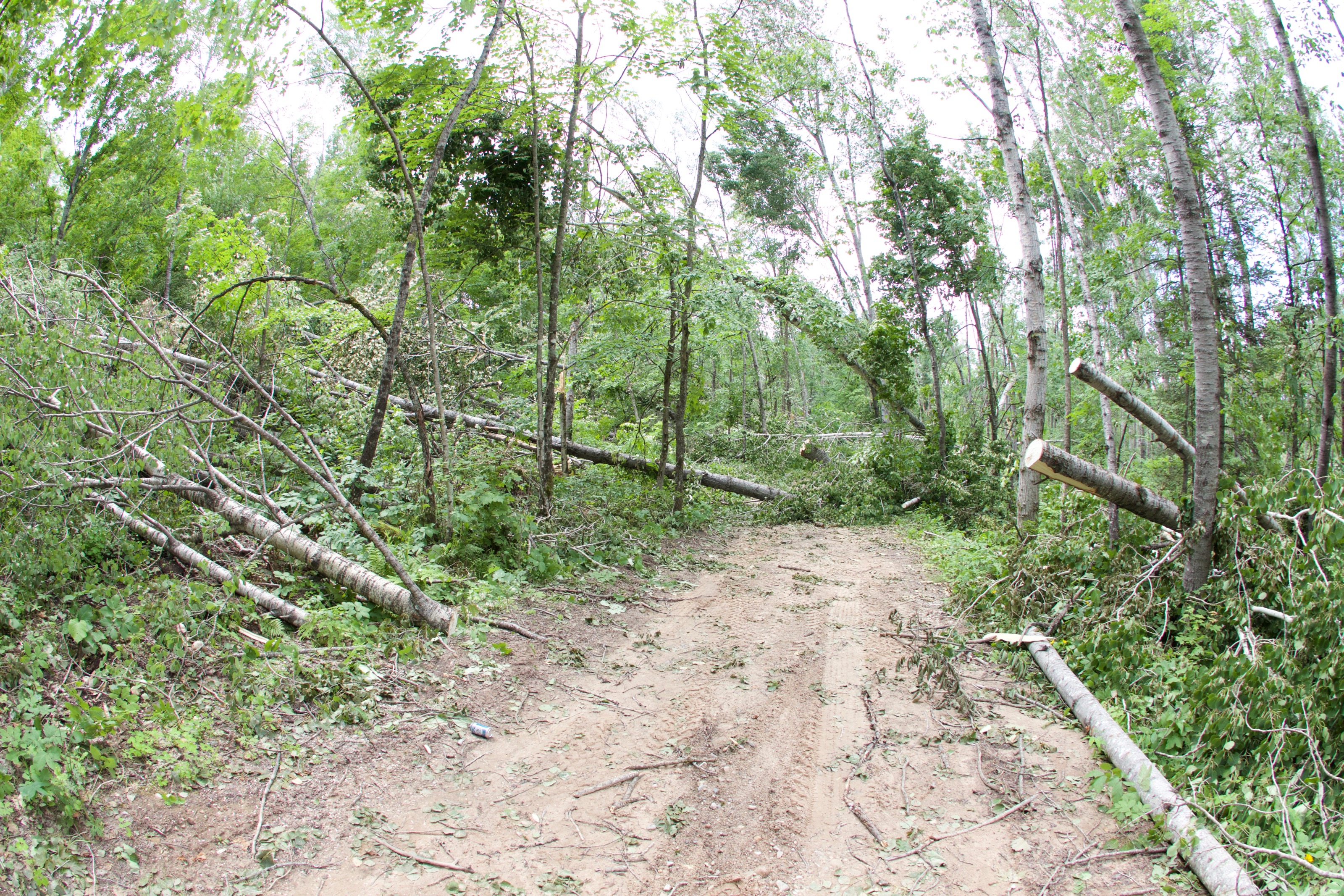
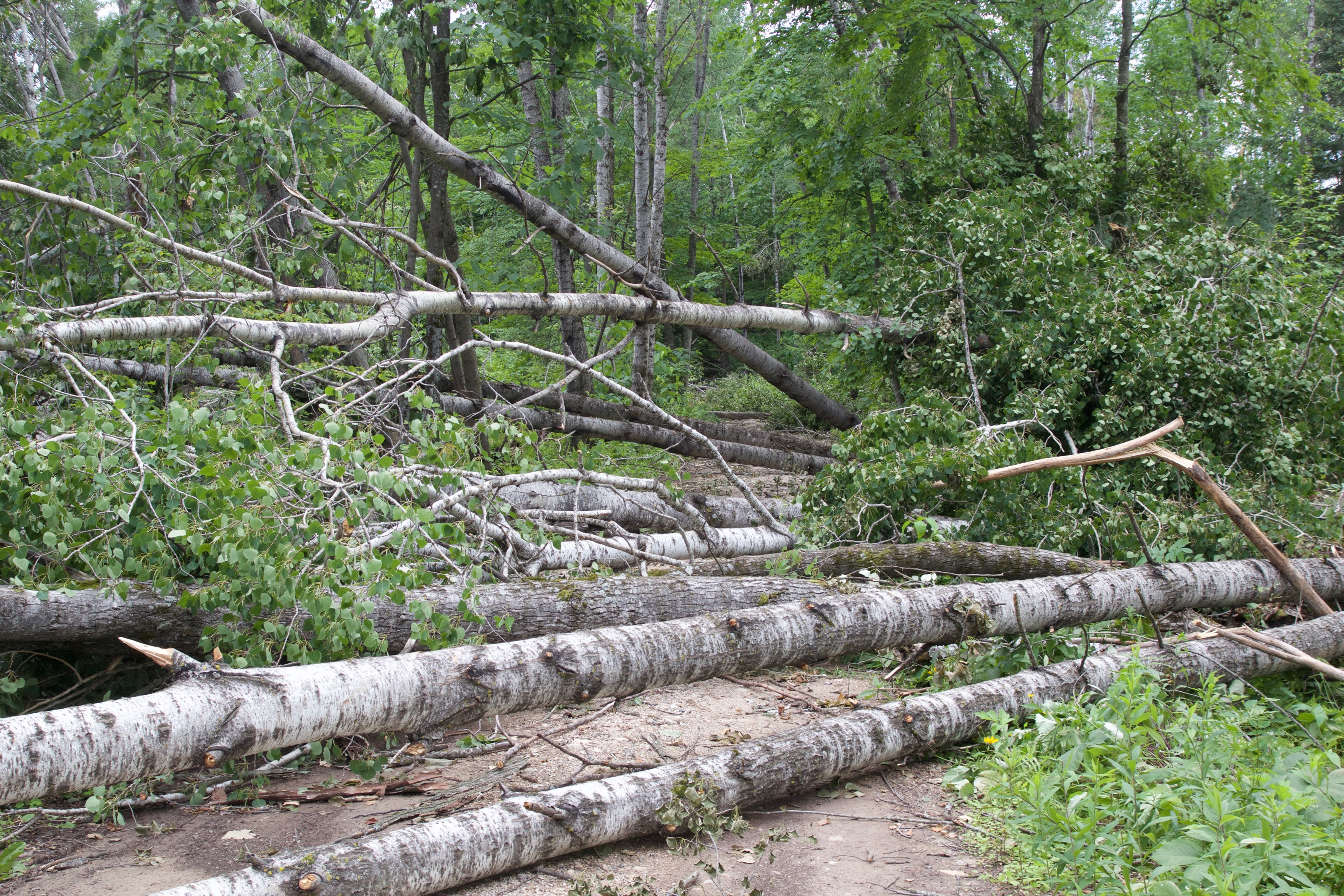
I was sweaty and tired after 2.5 tanks of gas.
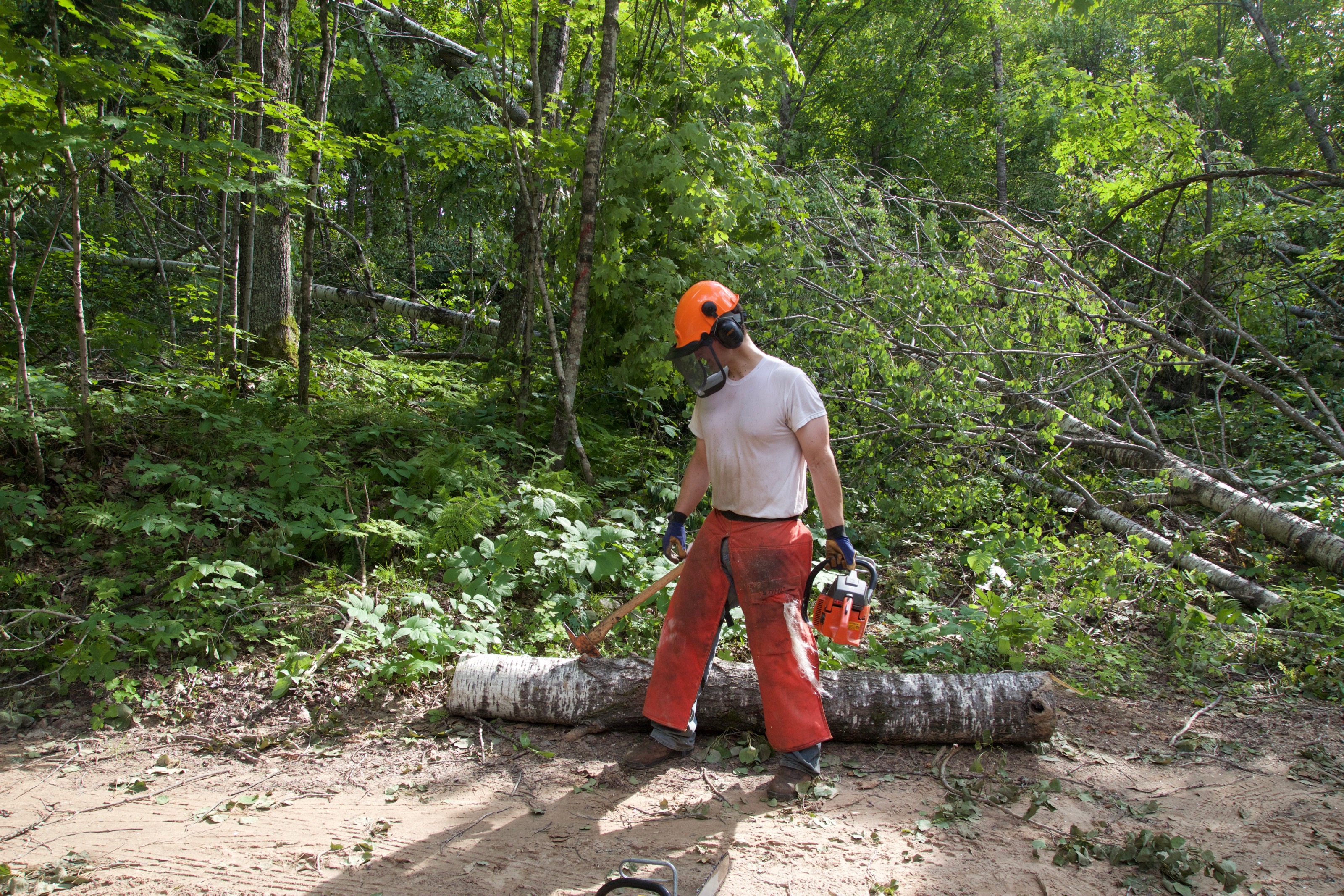
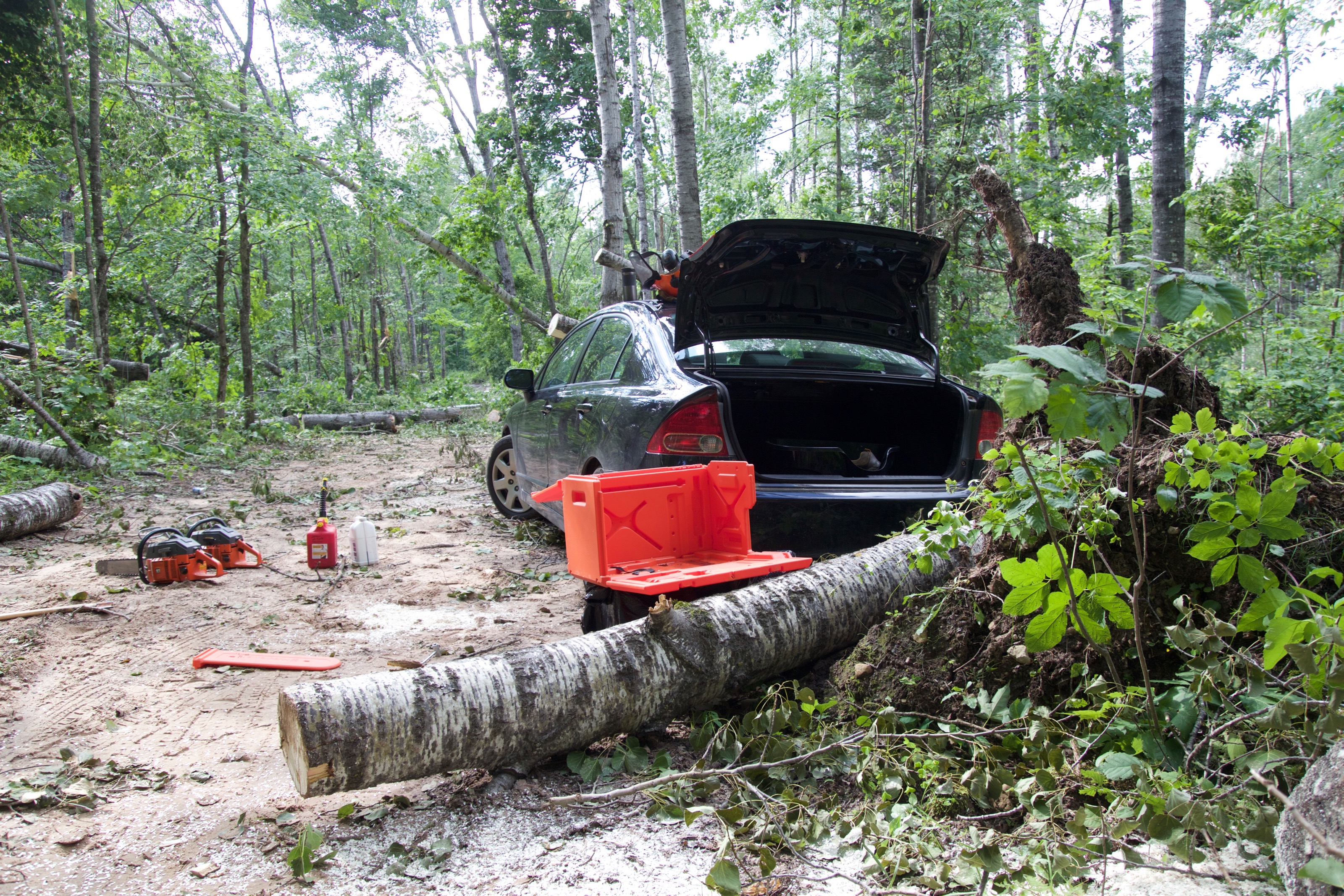
Setting out for the cabin I walked over my cuttings.
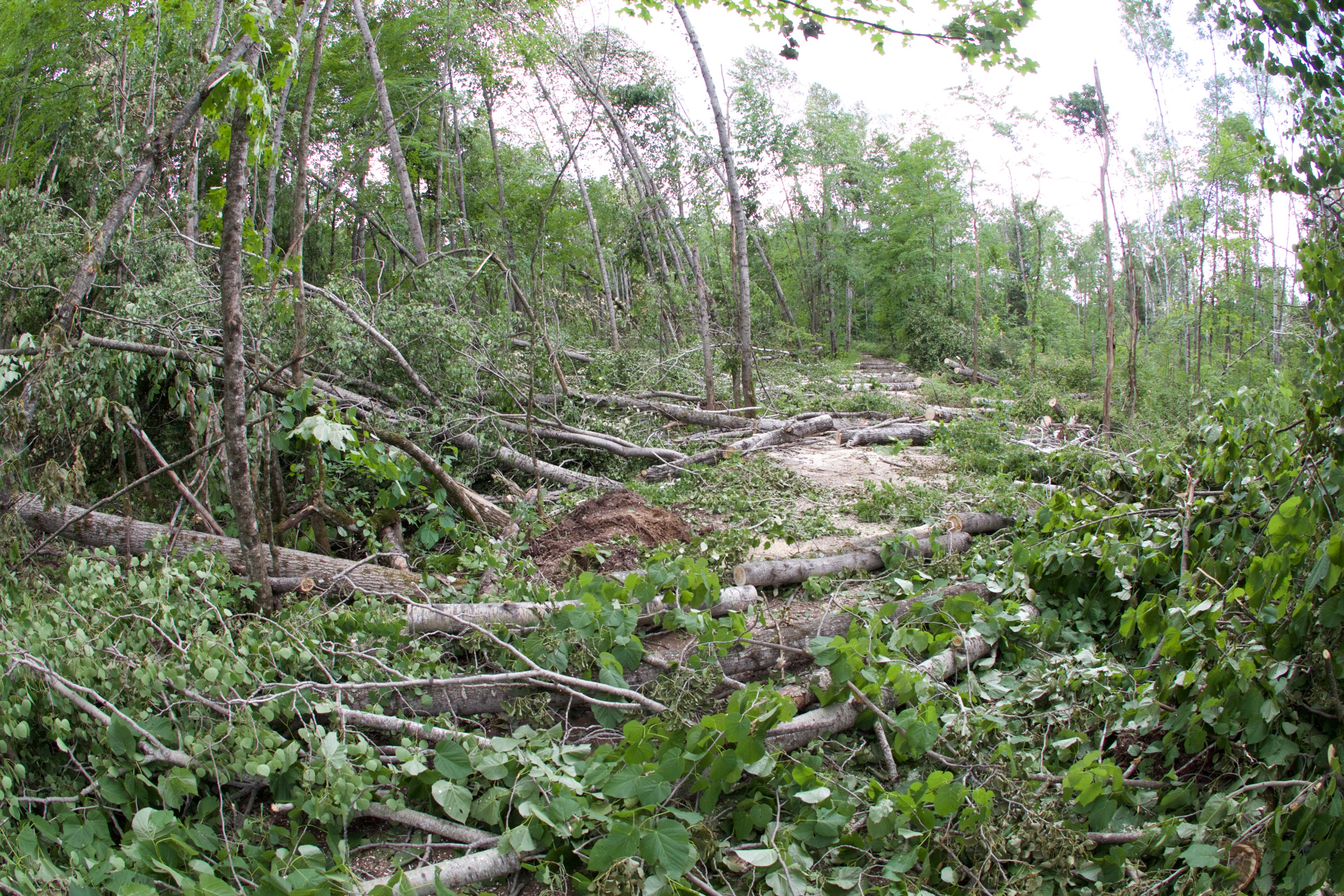
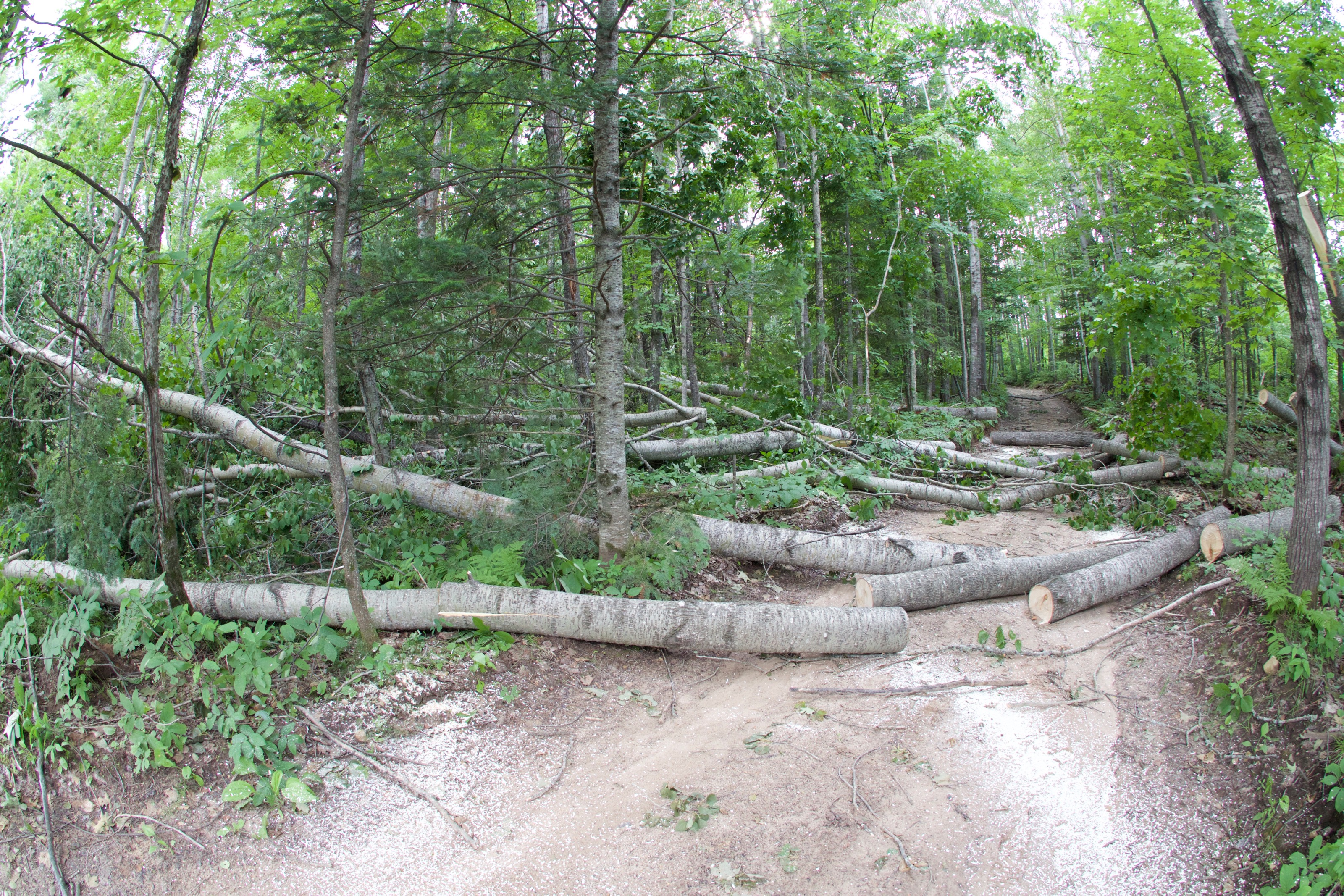
Some trees were uprooted, some broke off up high, and others like this one shattered at their strongest point.
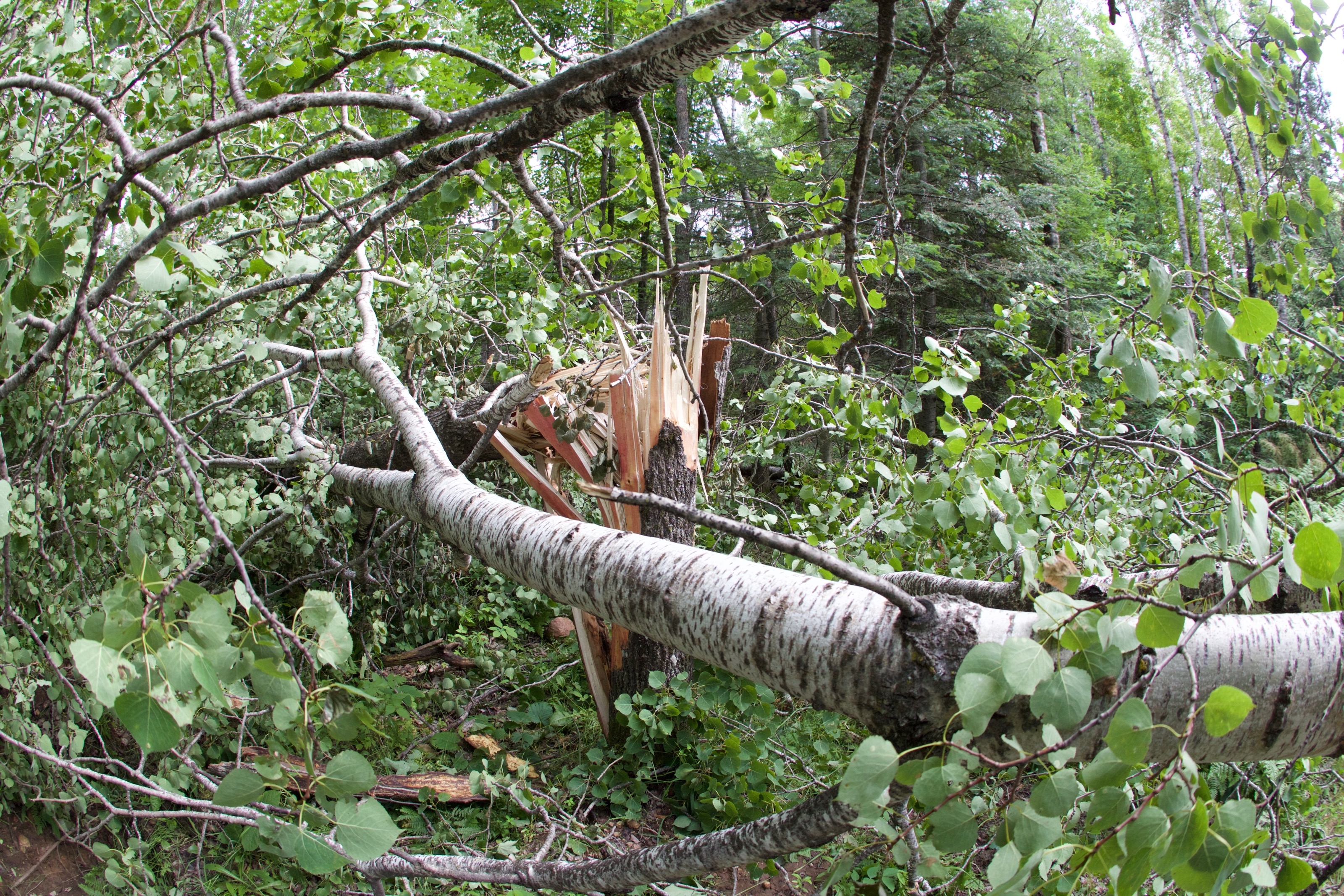
Five poplar trees in a mess at the gate. A 6th is to my right just barely out of frame of the fisheye lens.
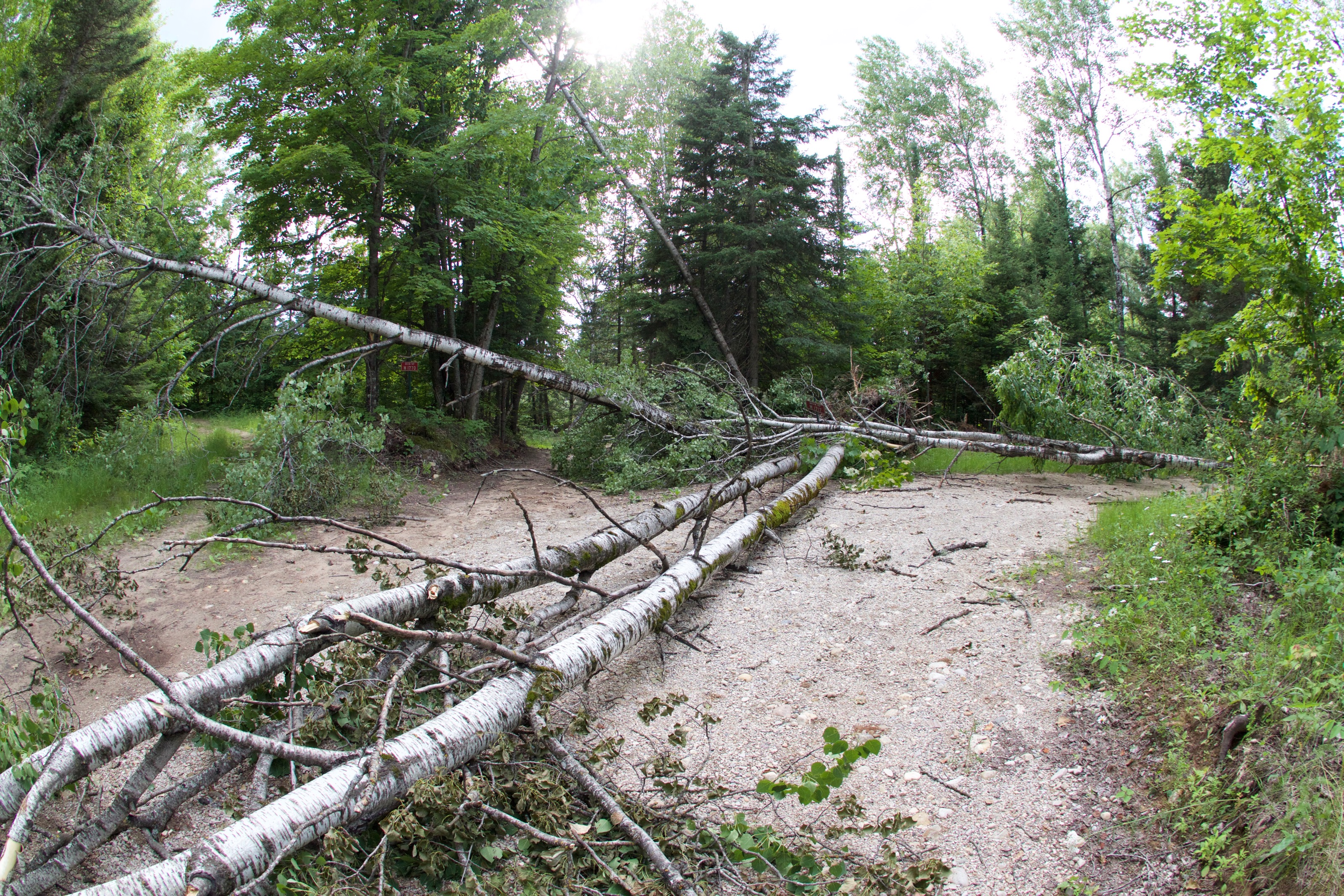
The gate once again survived in tact.
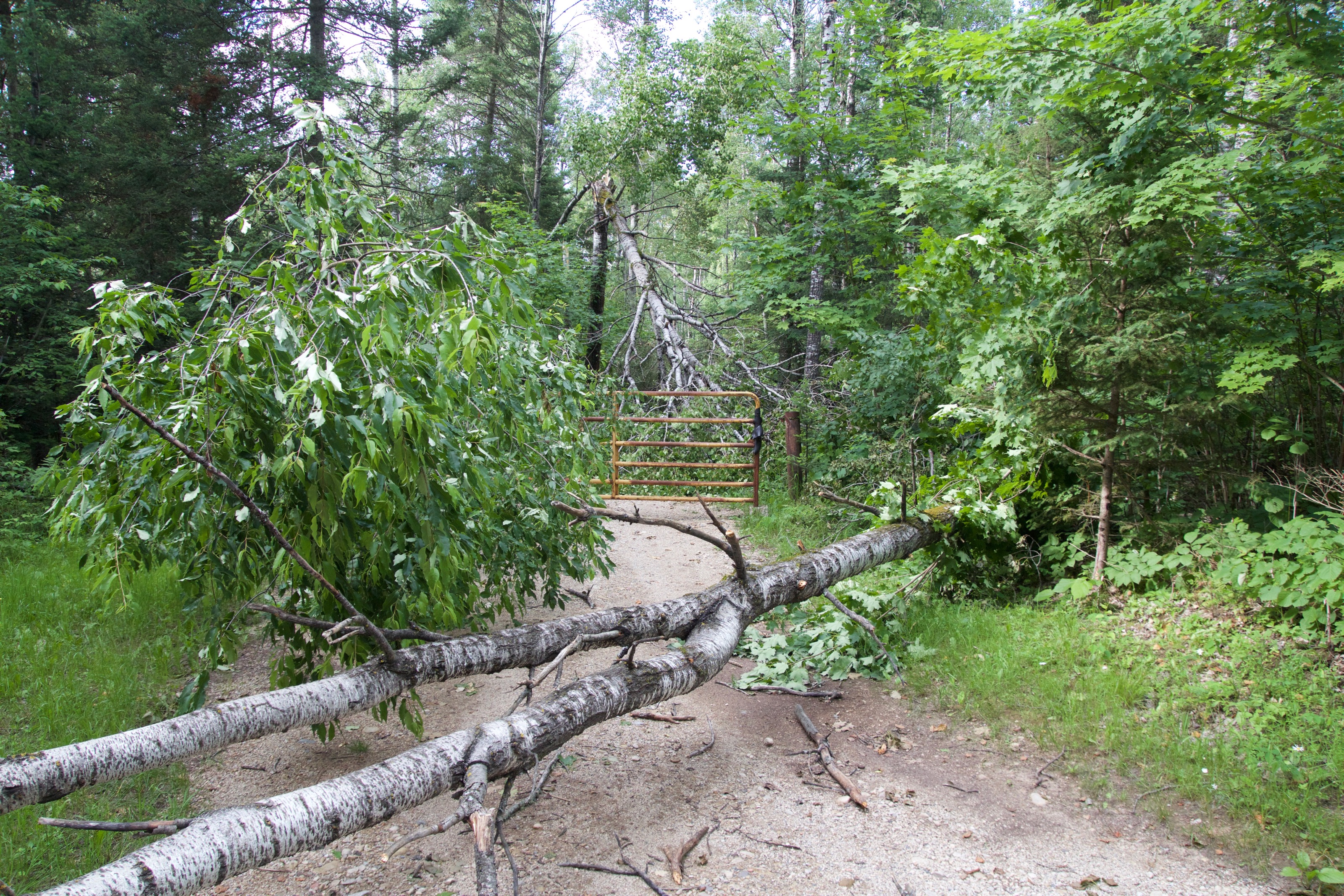
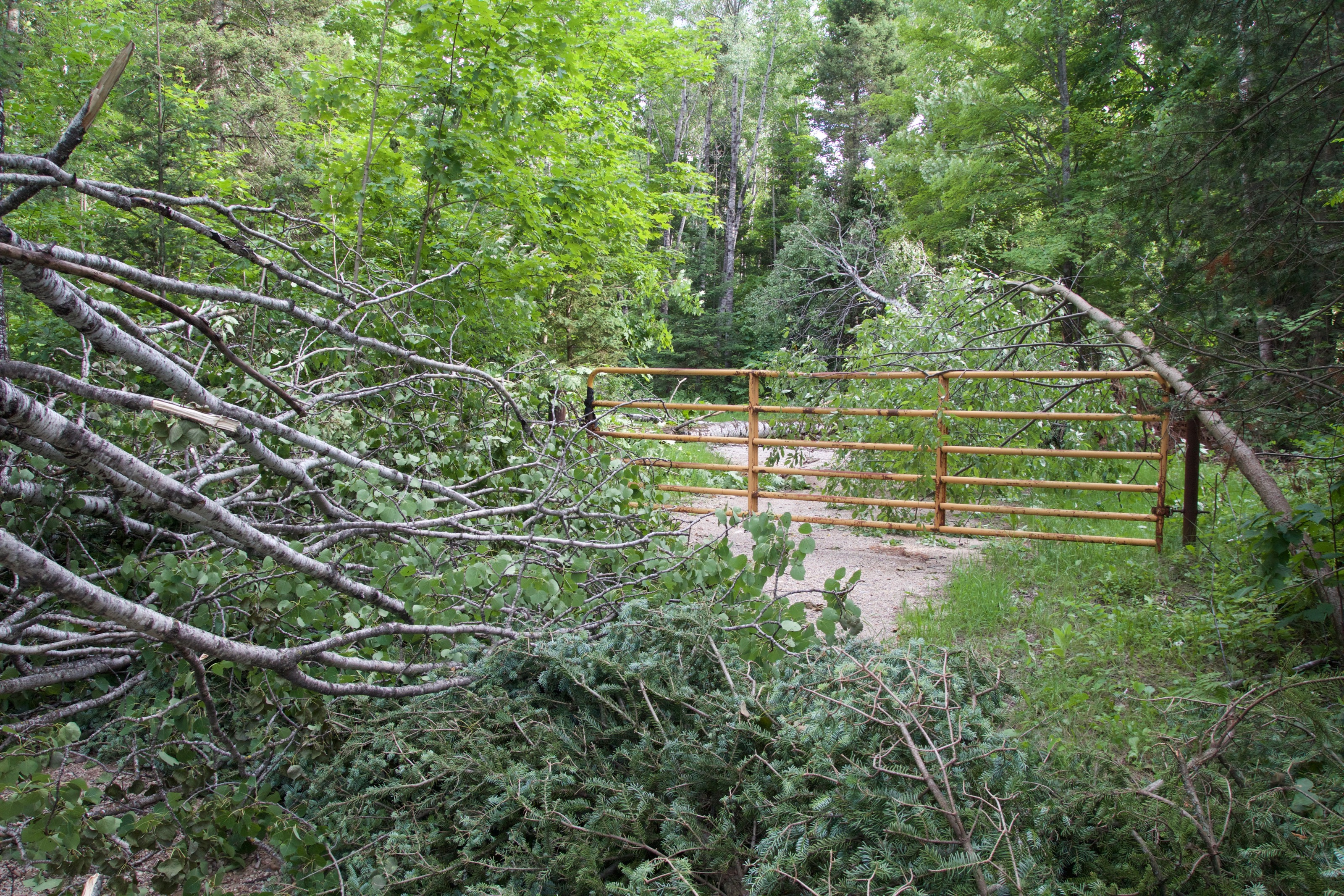
Heading away from the gate toward camp I came across one more large tree down and a few limbs. It didn’t look too bad… yet.
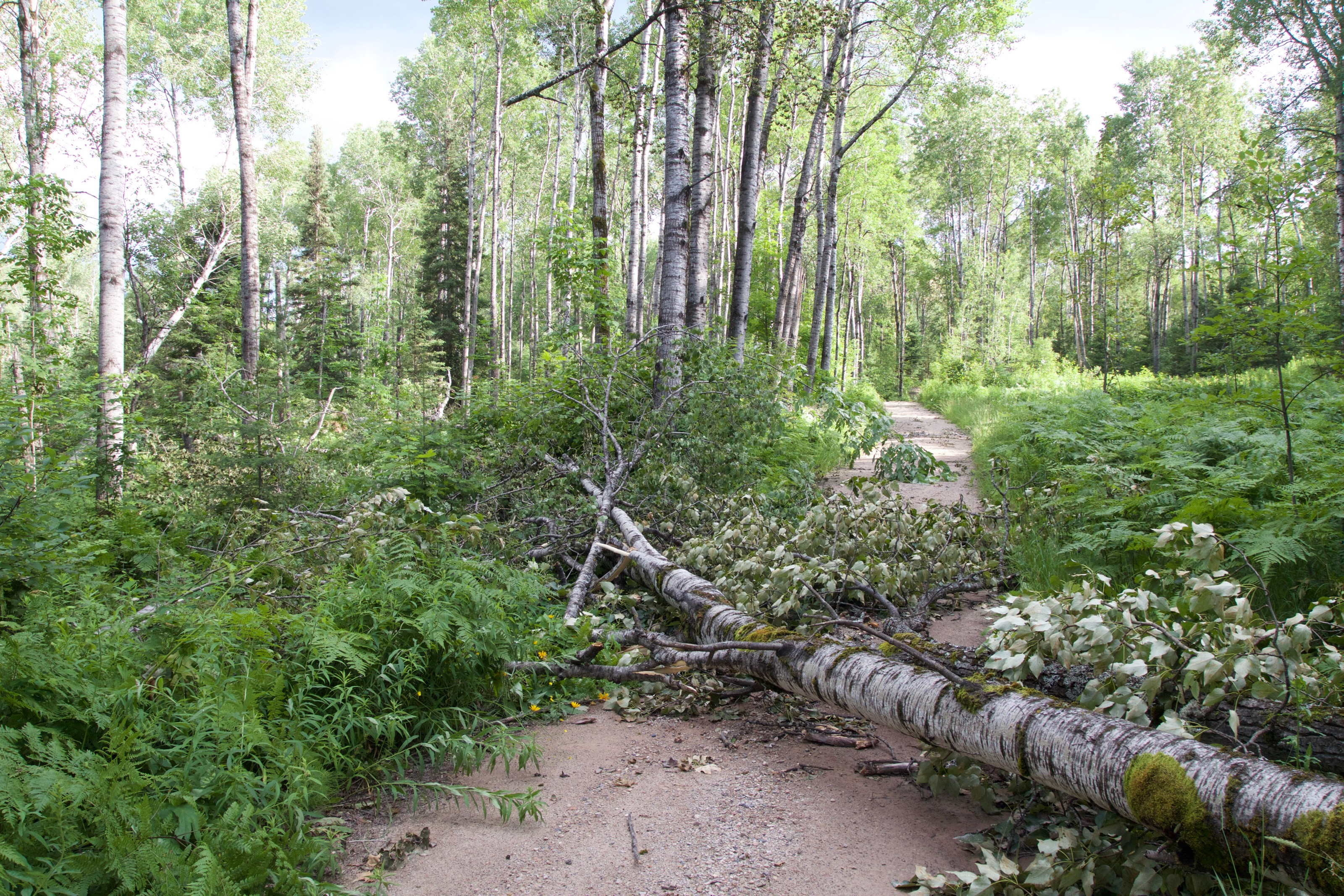
Then I started hopping over trees.
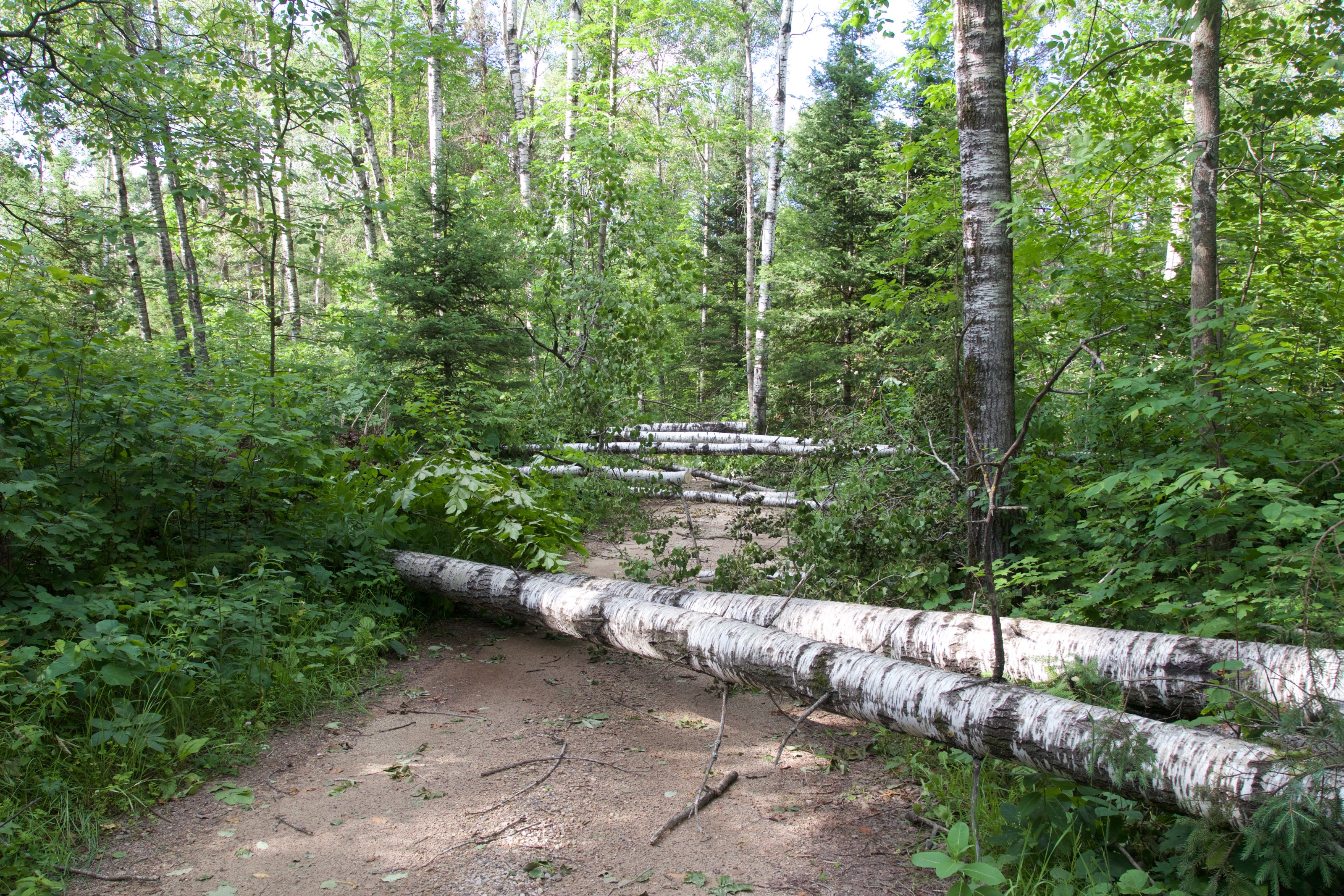
And more trees…
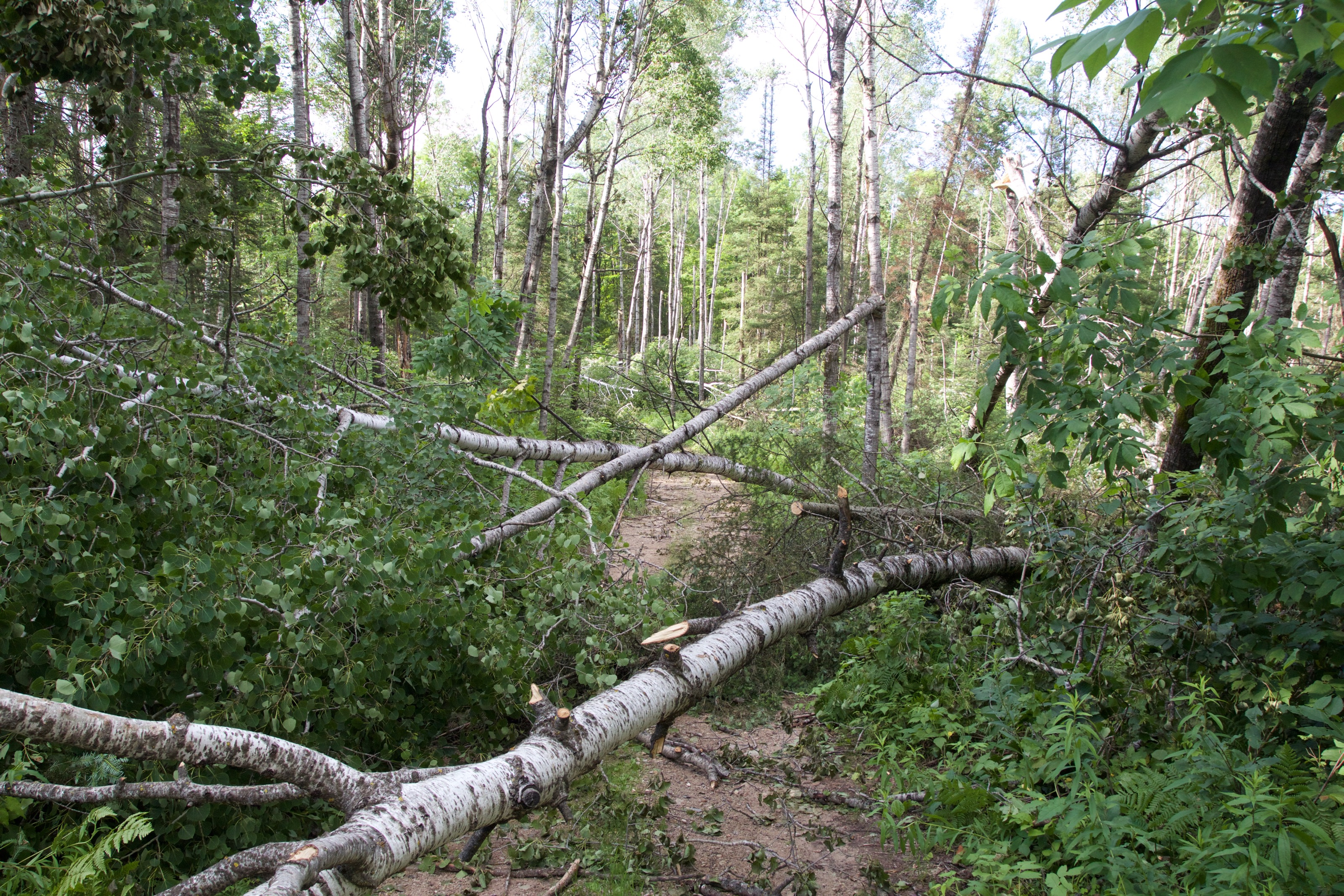
Over some, under others.
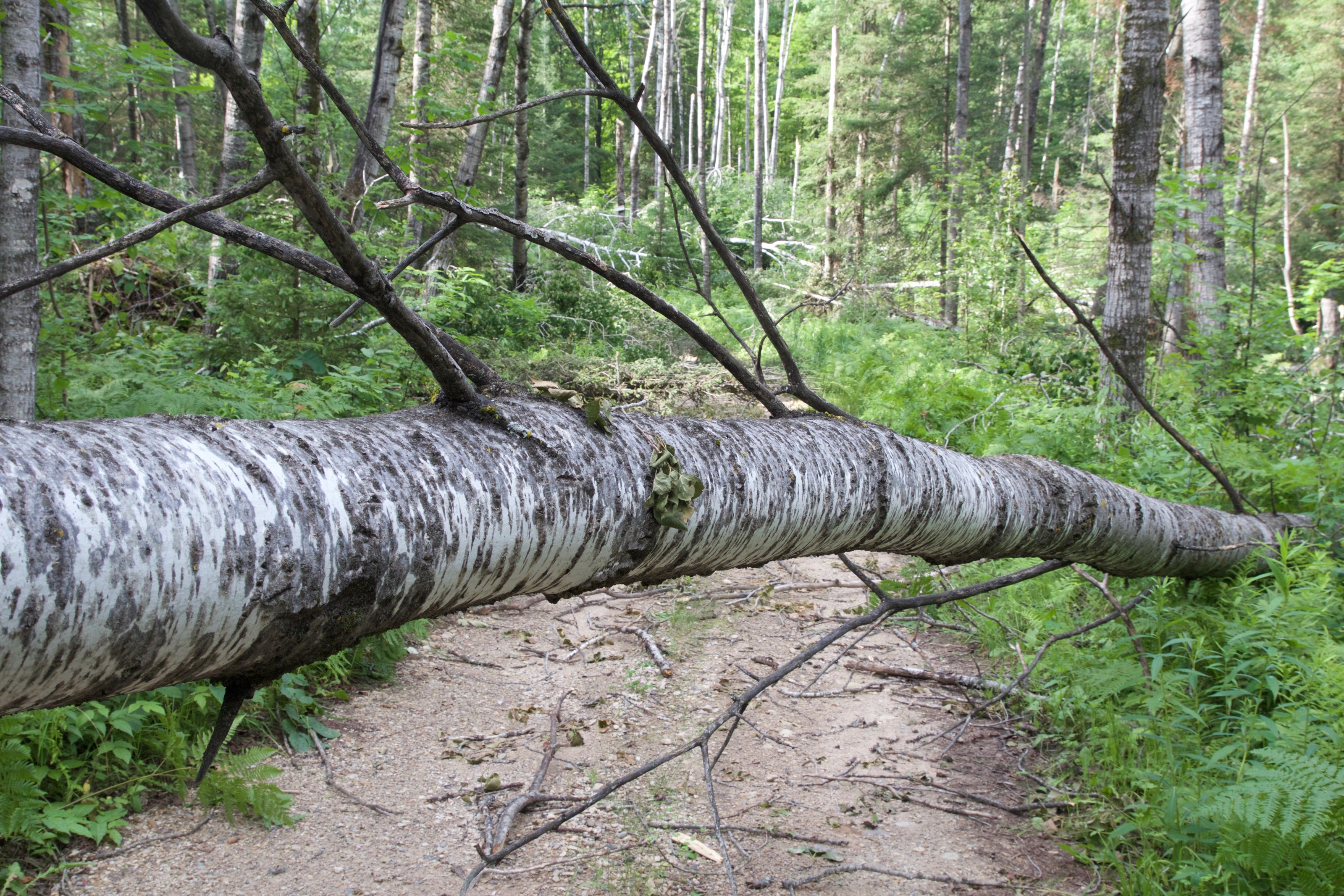
The road turned into the wind and 5 or 6 trees were uprooted right alongside the road.
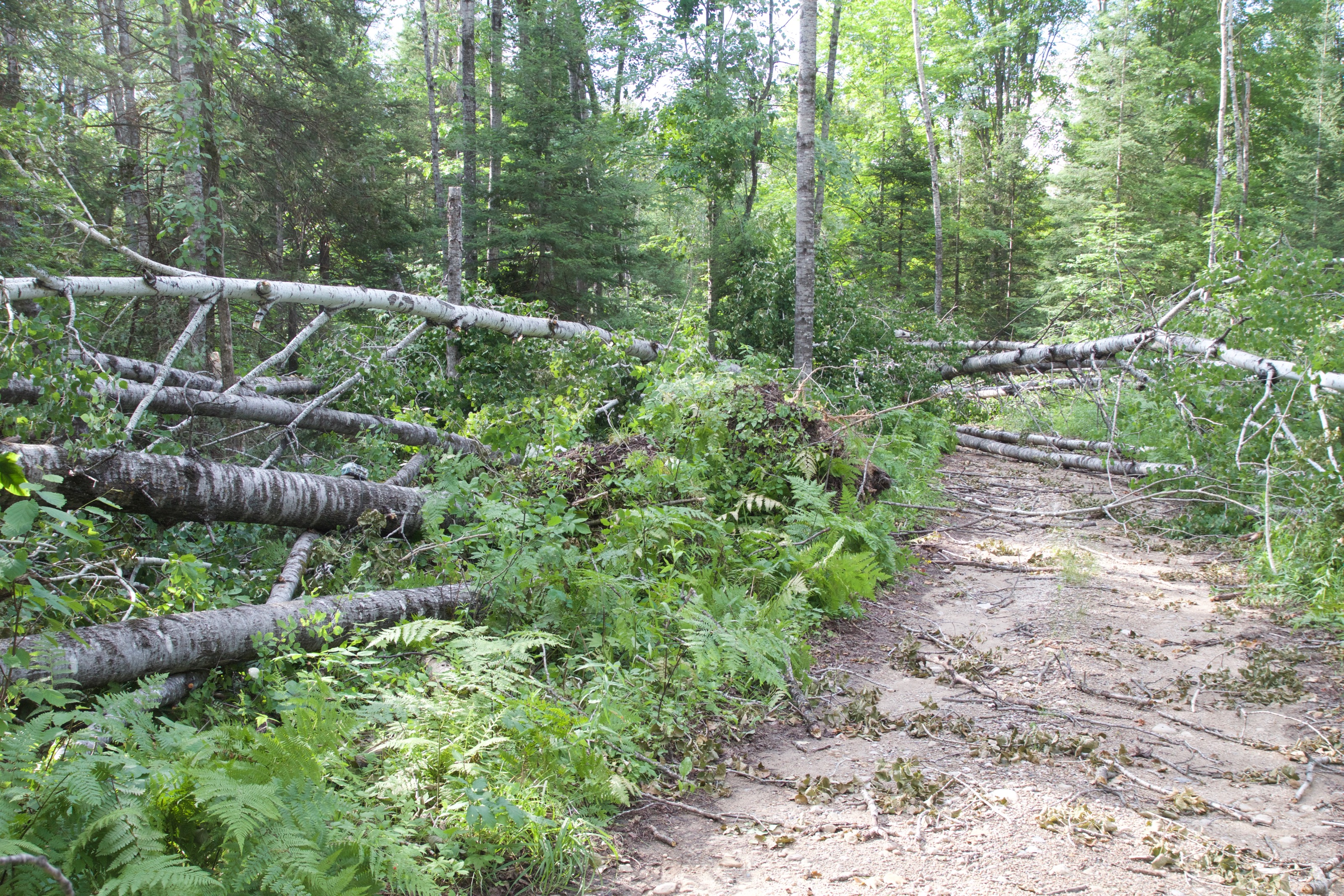
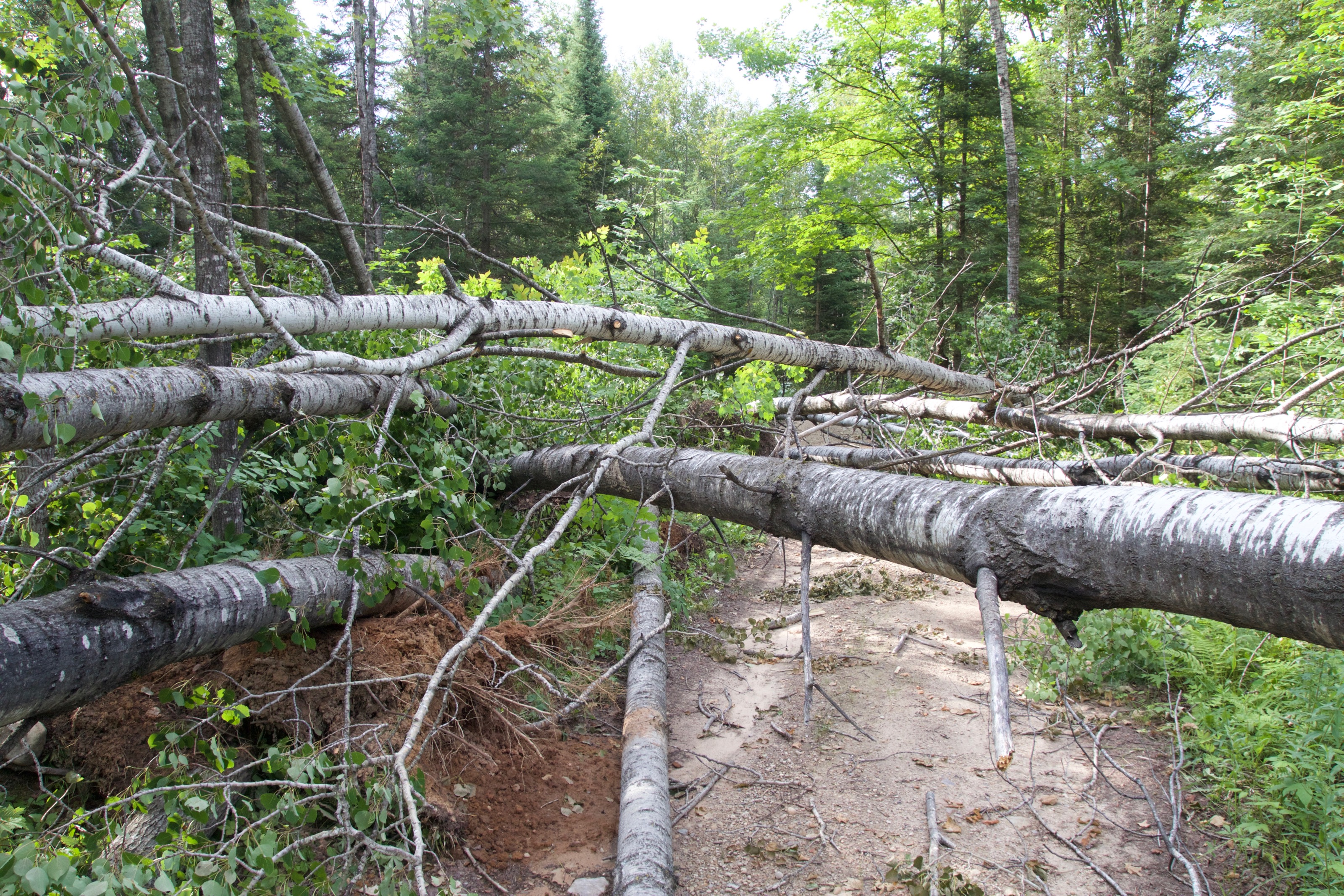
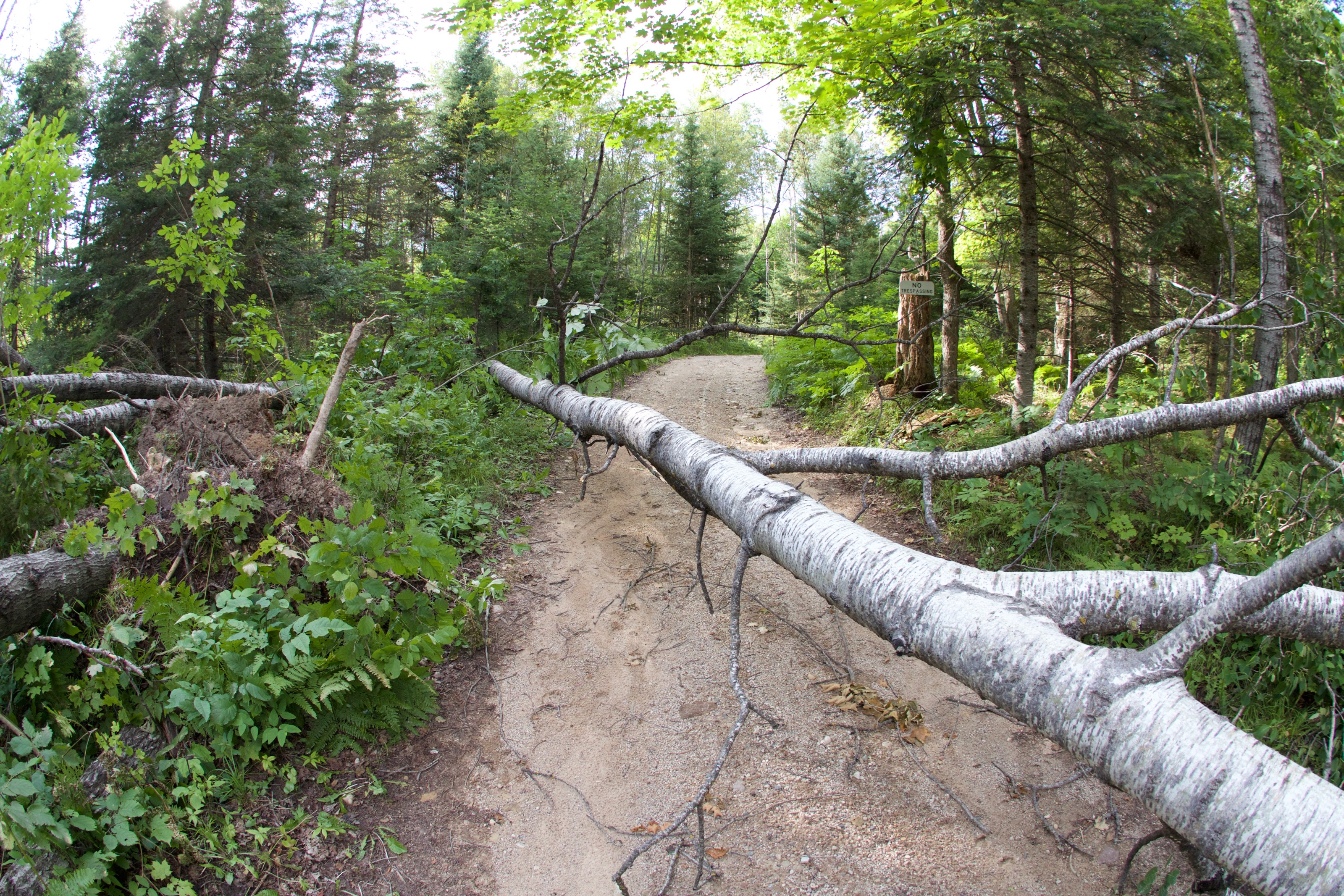
After setting foot on our property I crossed over a single basswood on the way to the cabin.
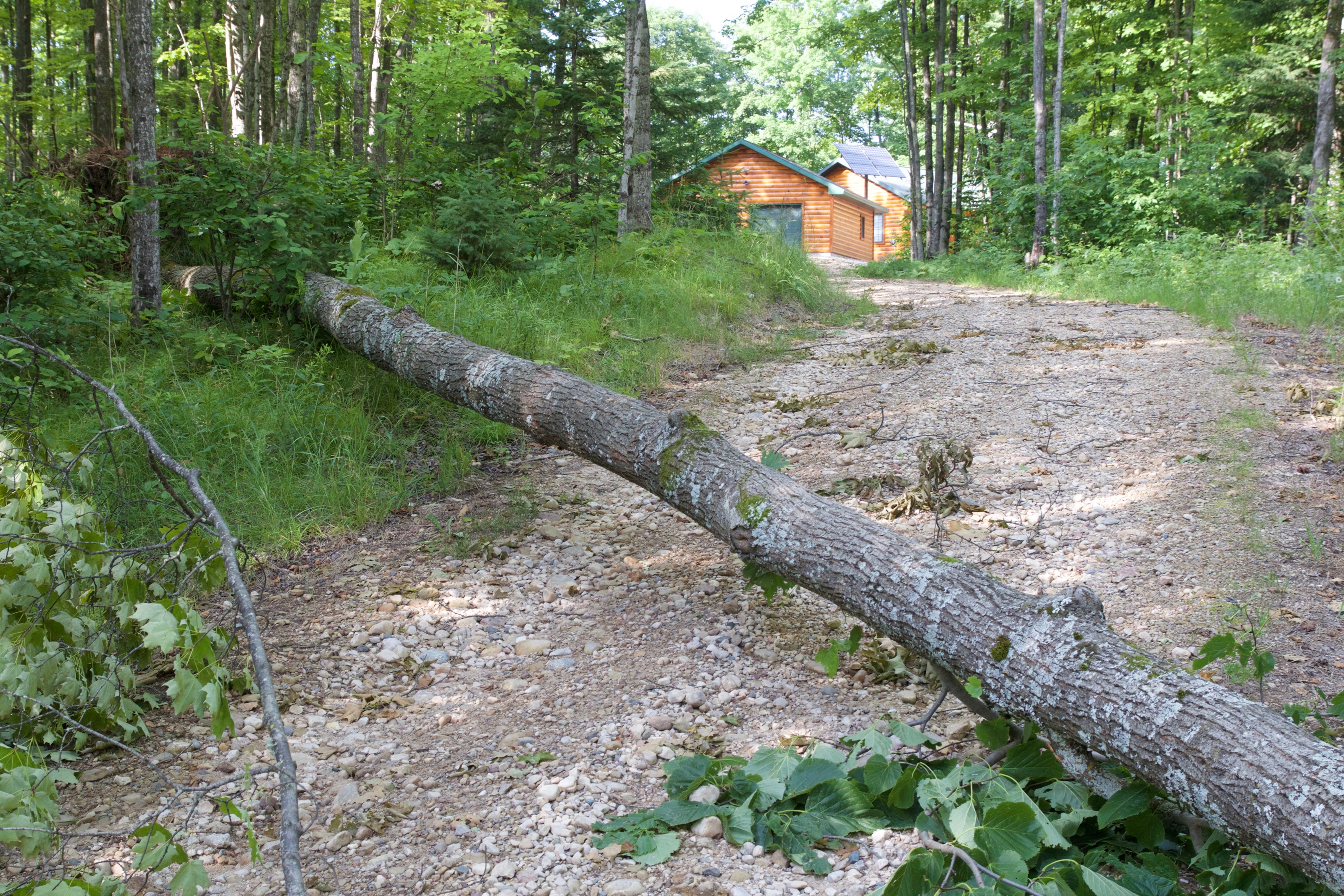
TV reception didn’t look too good. I climbed up on the roof and straighten and repositioned the antenna after my walk.
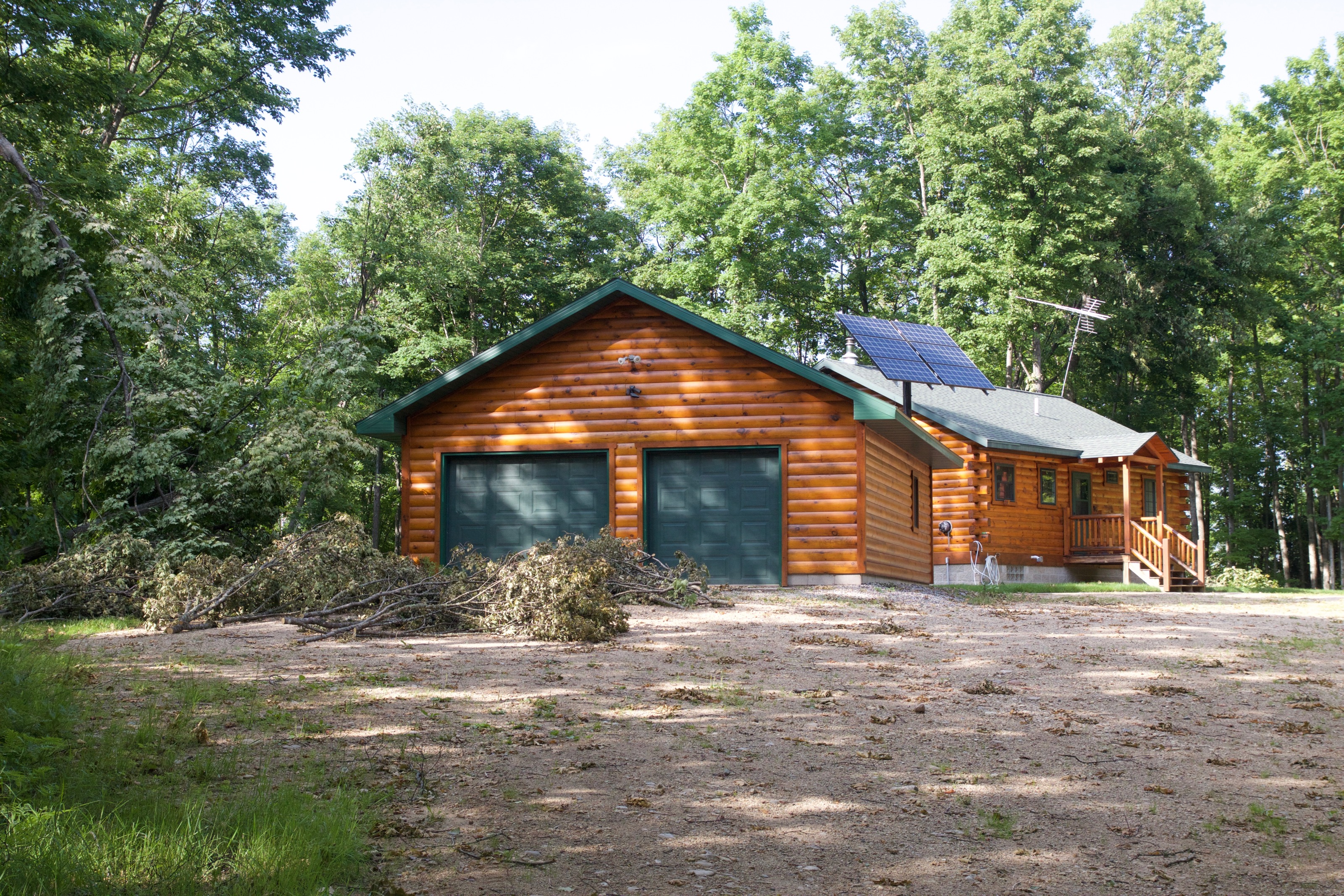
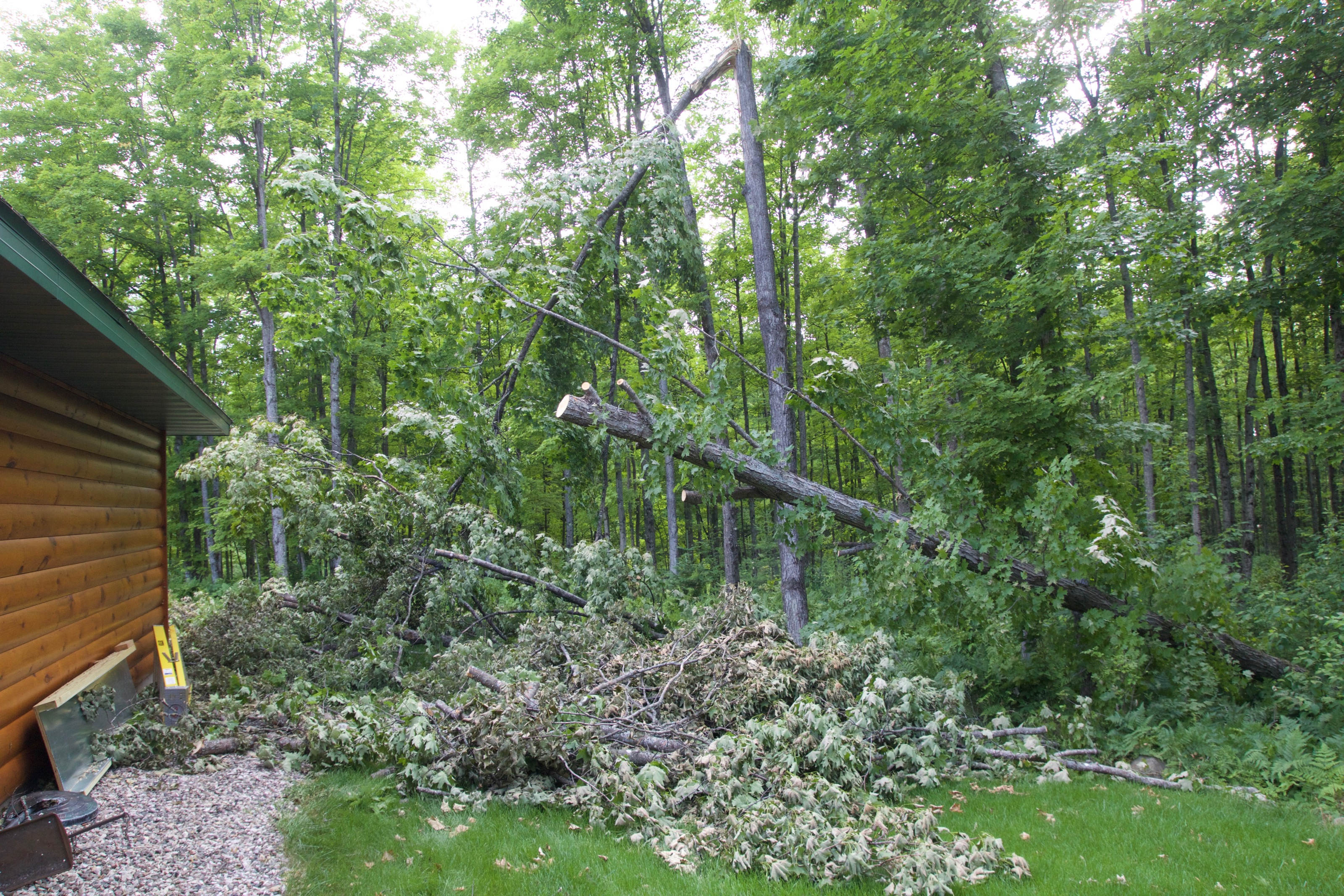
The cabin was just out of reach. Phew.
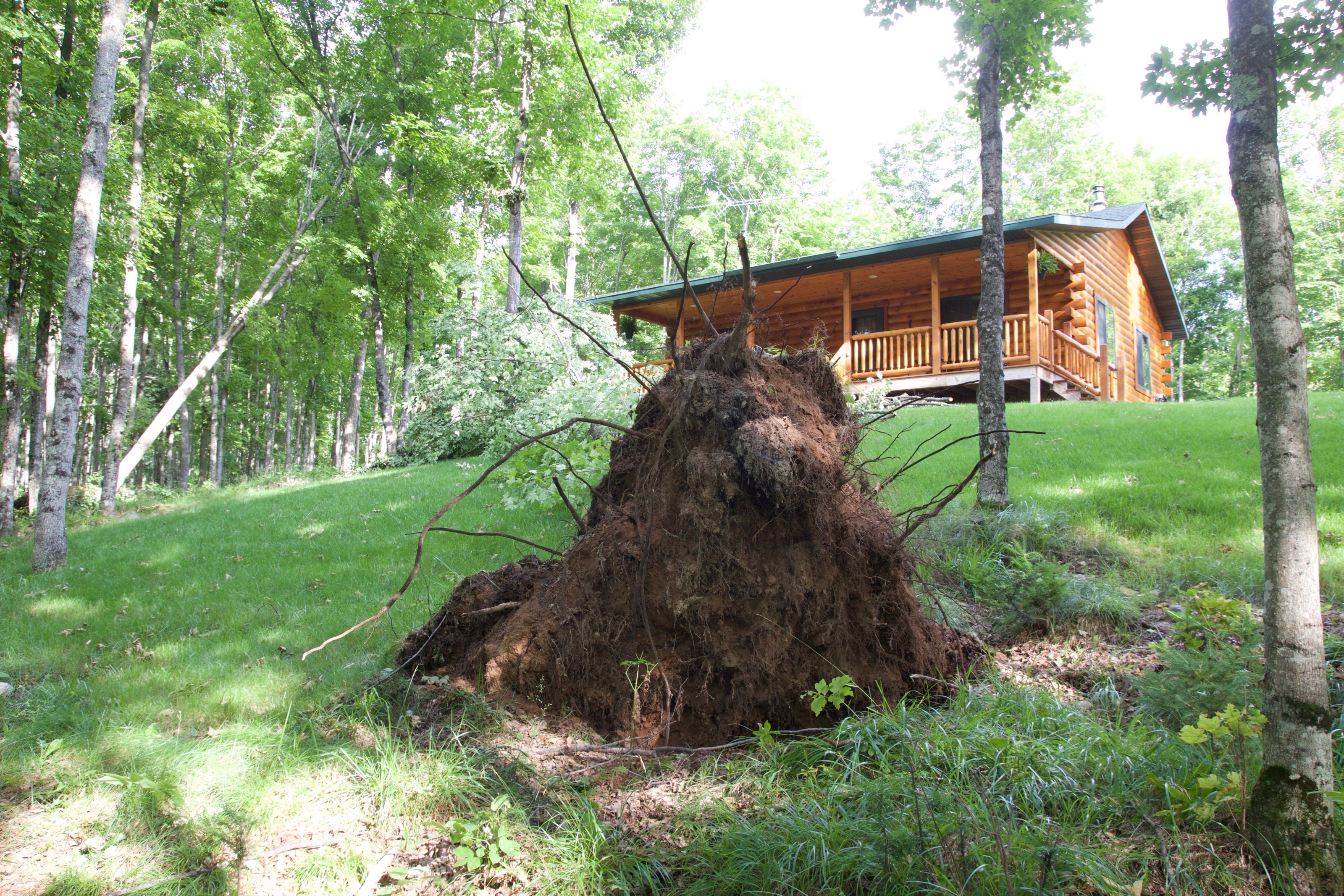
On my walk down the slope on our trails I saw a few snapped spruce. The beetles did a number on the trees and the wind finished off the remaining trees.
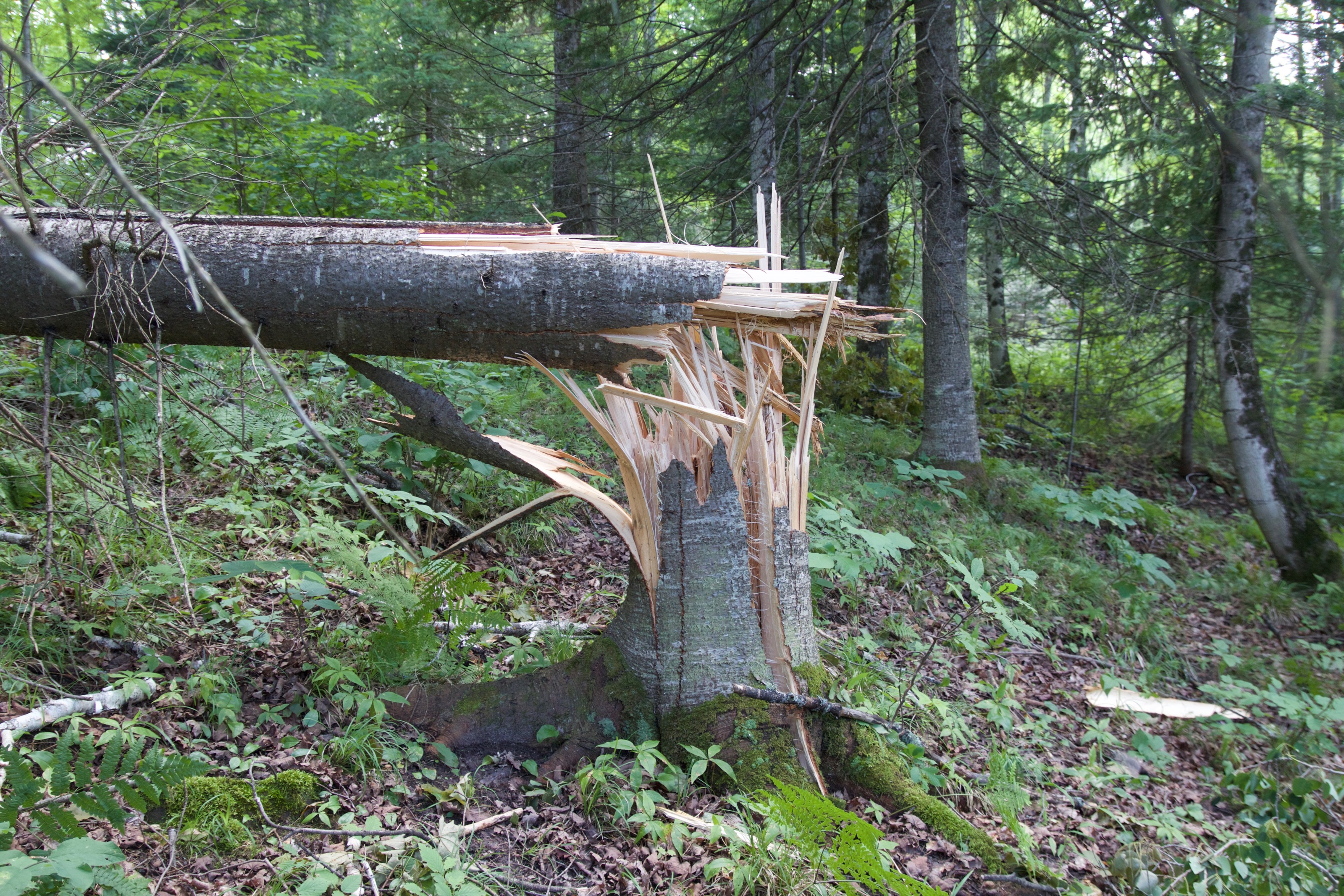
There was a forest here… the large food plot is straight ahead, through about 10 or more trees. Of coarse they are all matted down in a cluster.
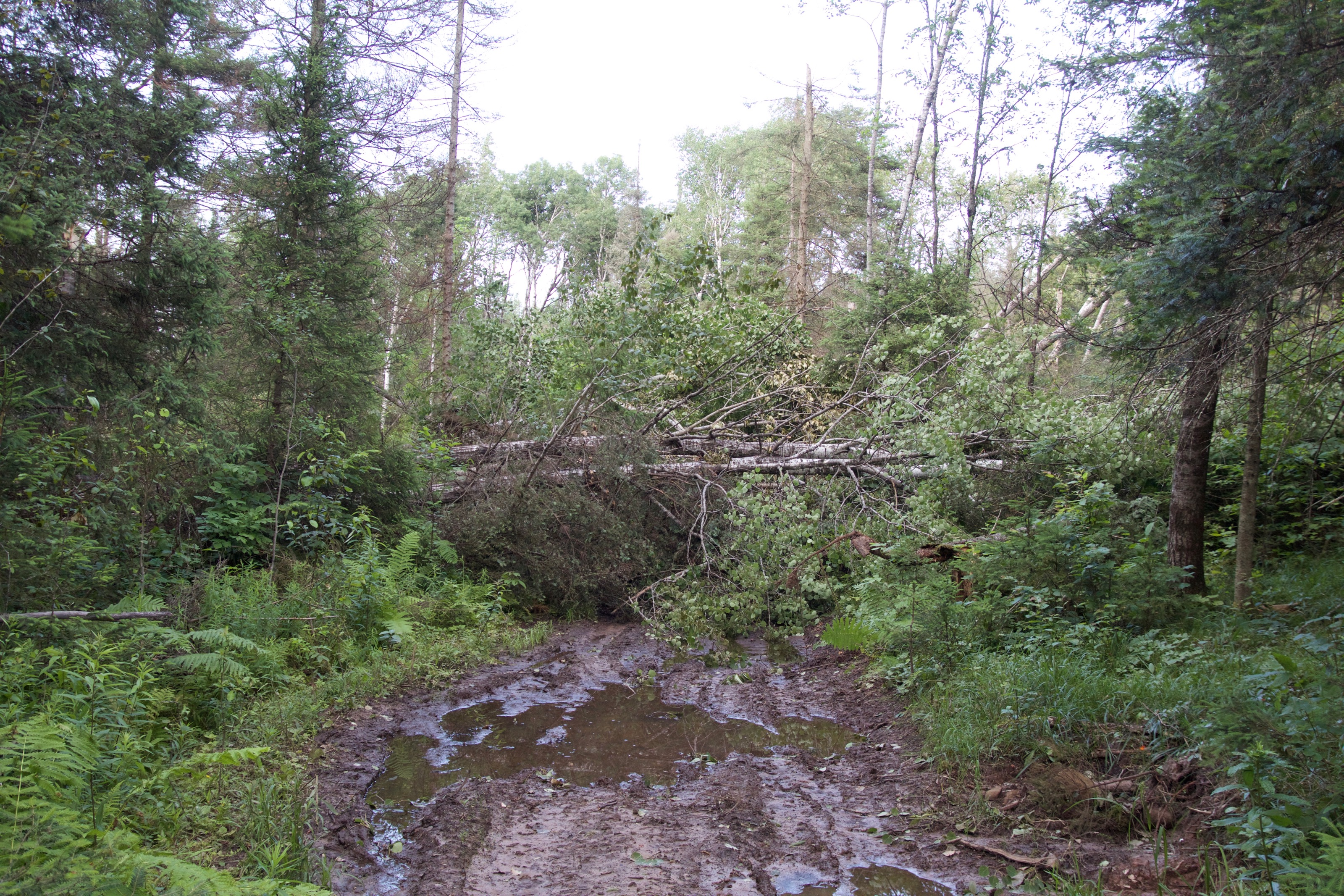
I made it to the plot. Looking back toward the hill now.
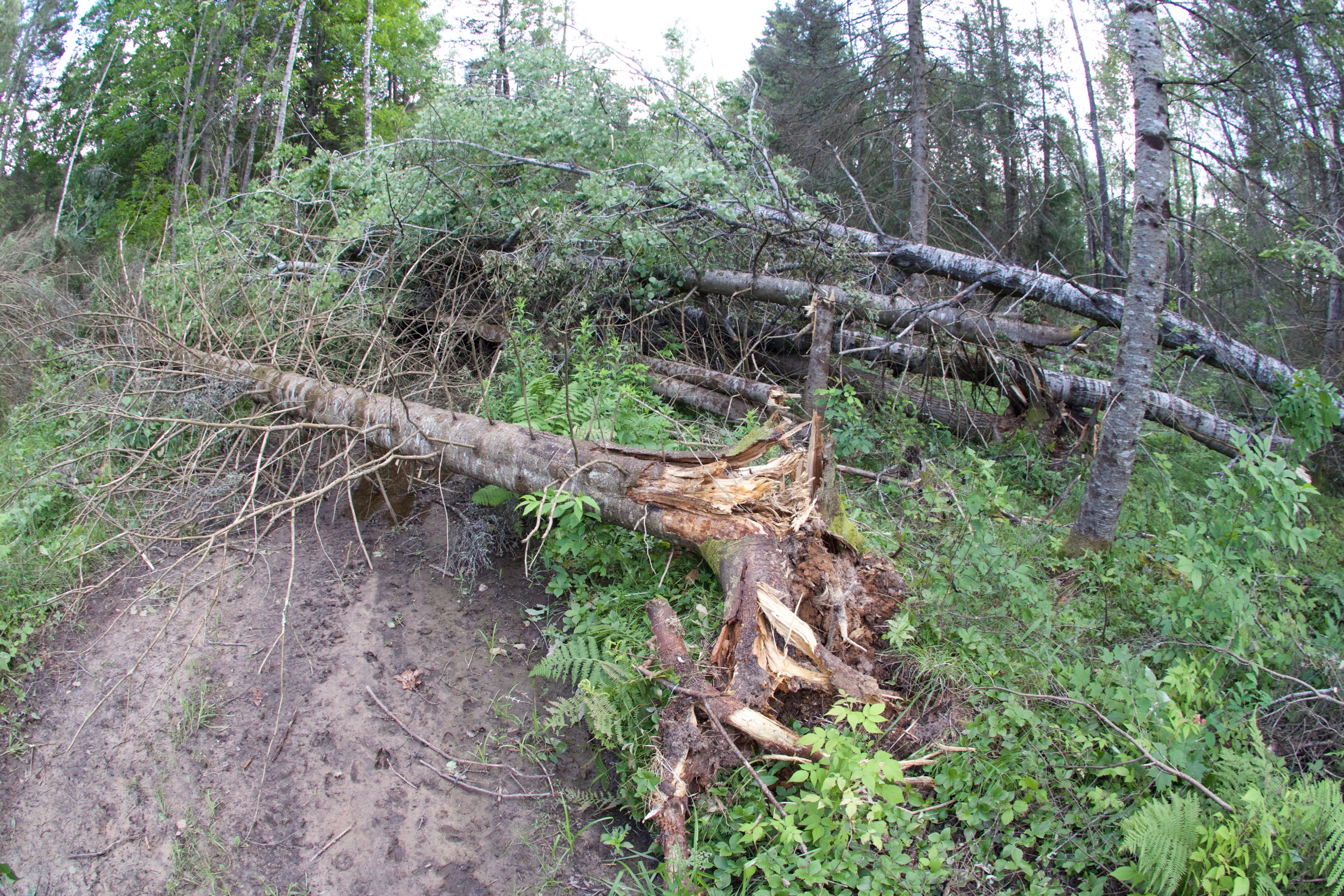
Plot looks nice at least. Any grouse and deer that weren’t blown away or crushed should have food.
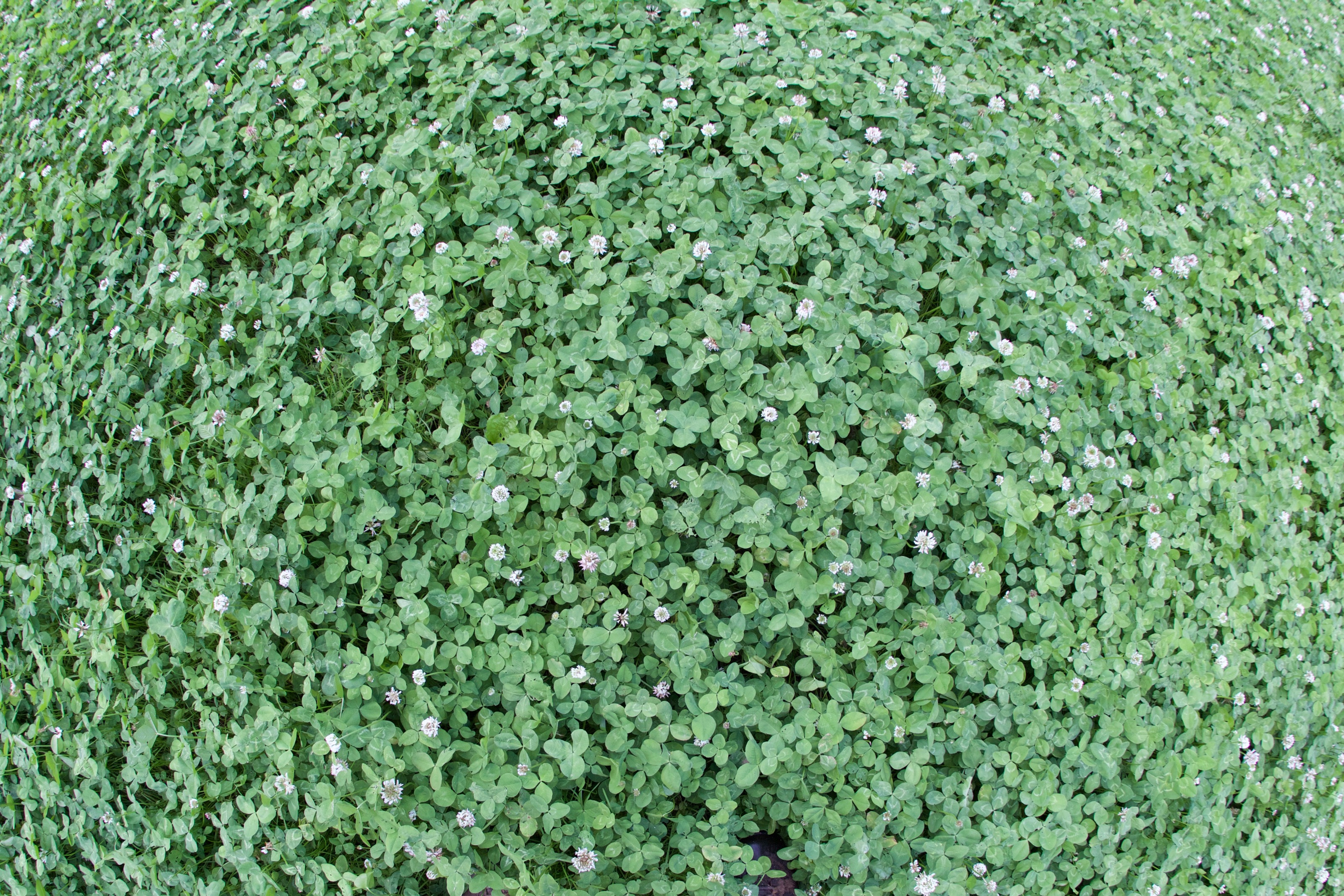
A jet plowed through the center of our lowland. You can clearly see the direction of the wind.
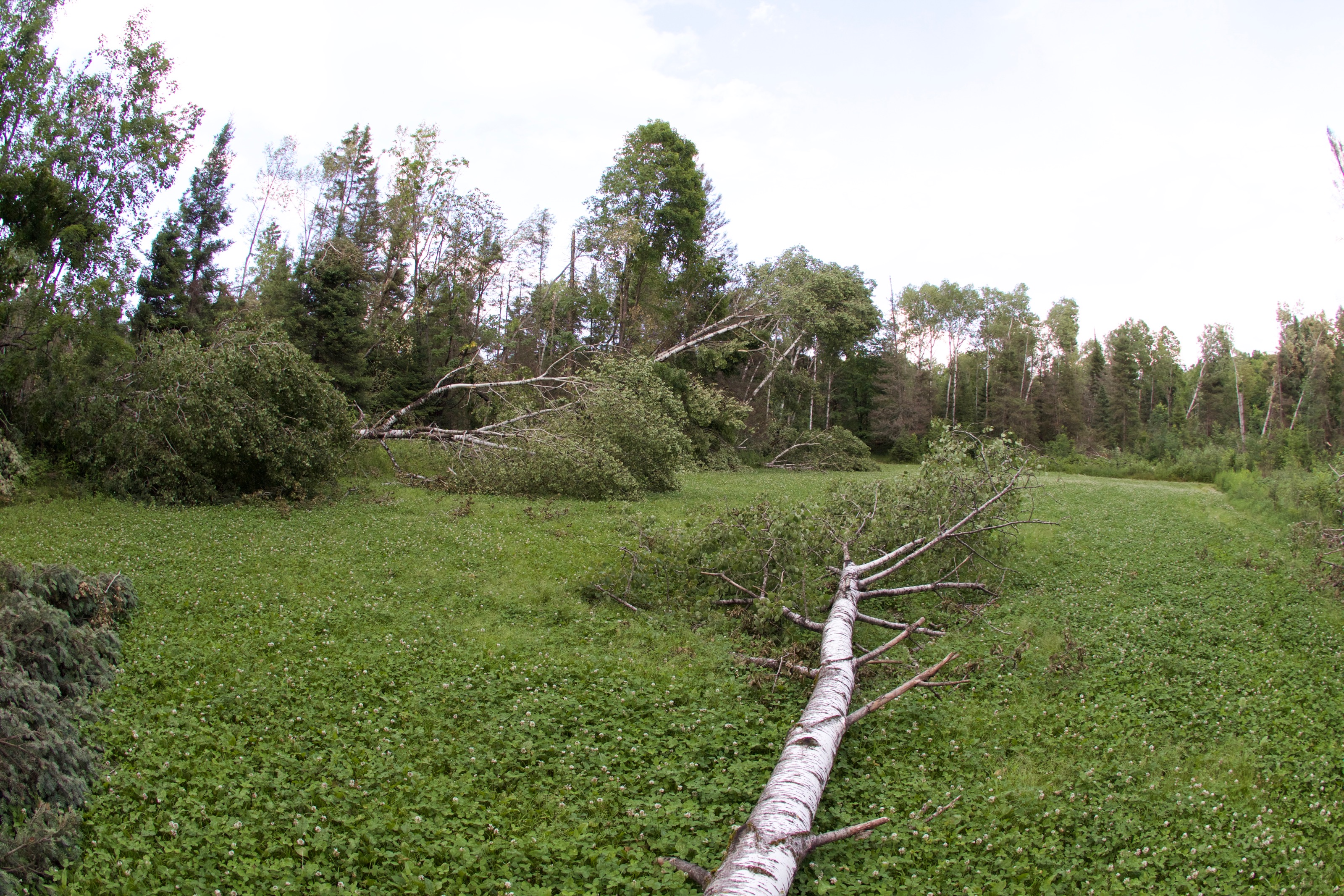
October 10, 2015: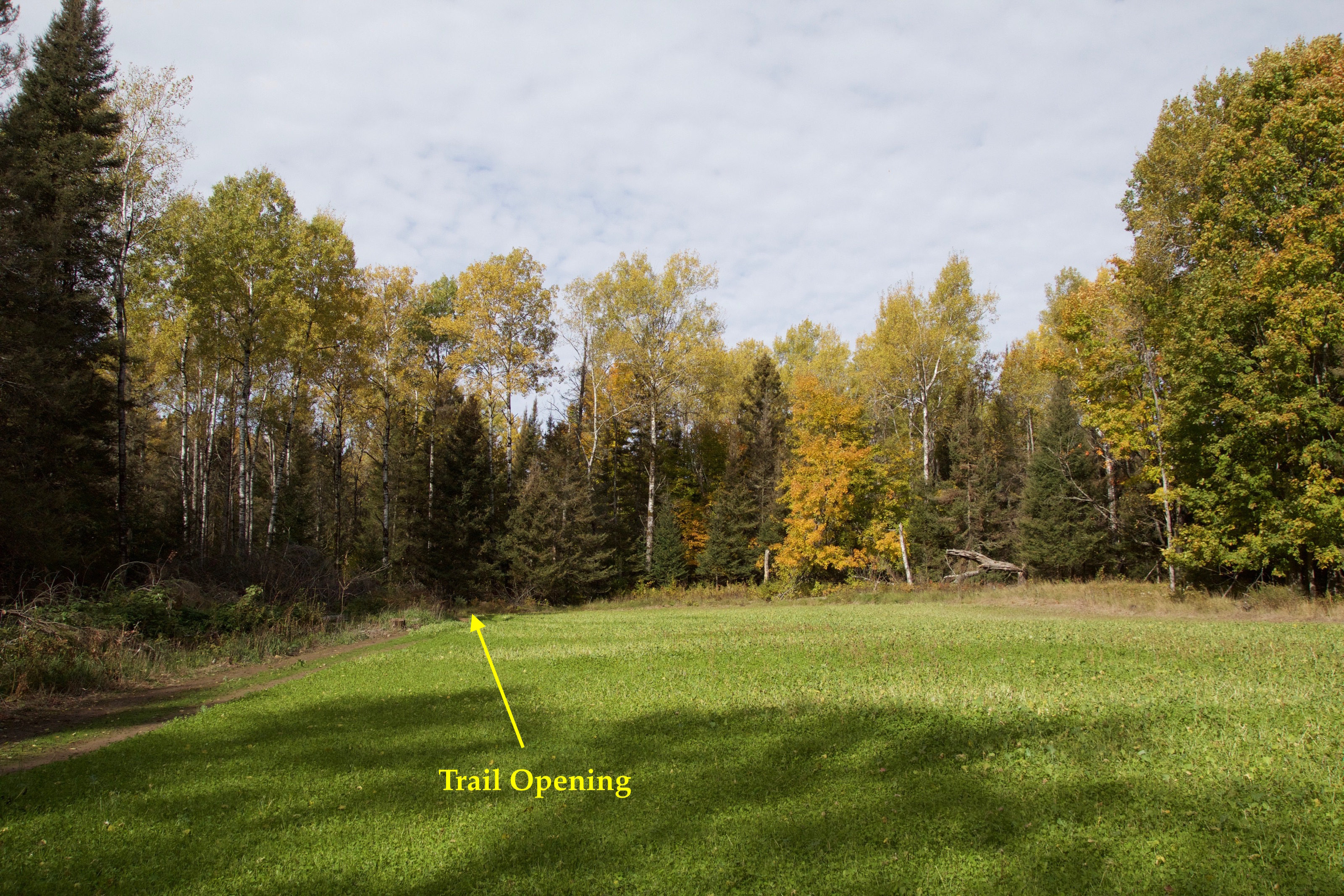
July 10, 2017: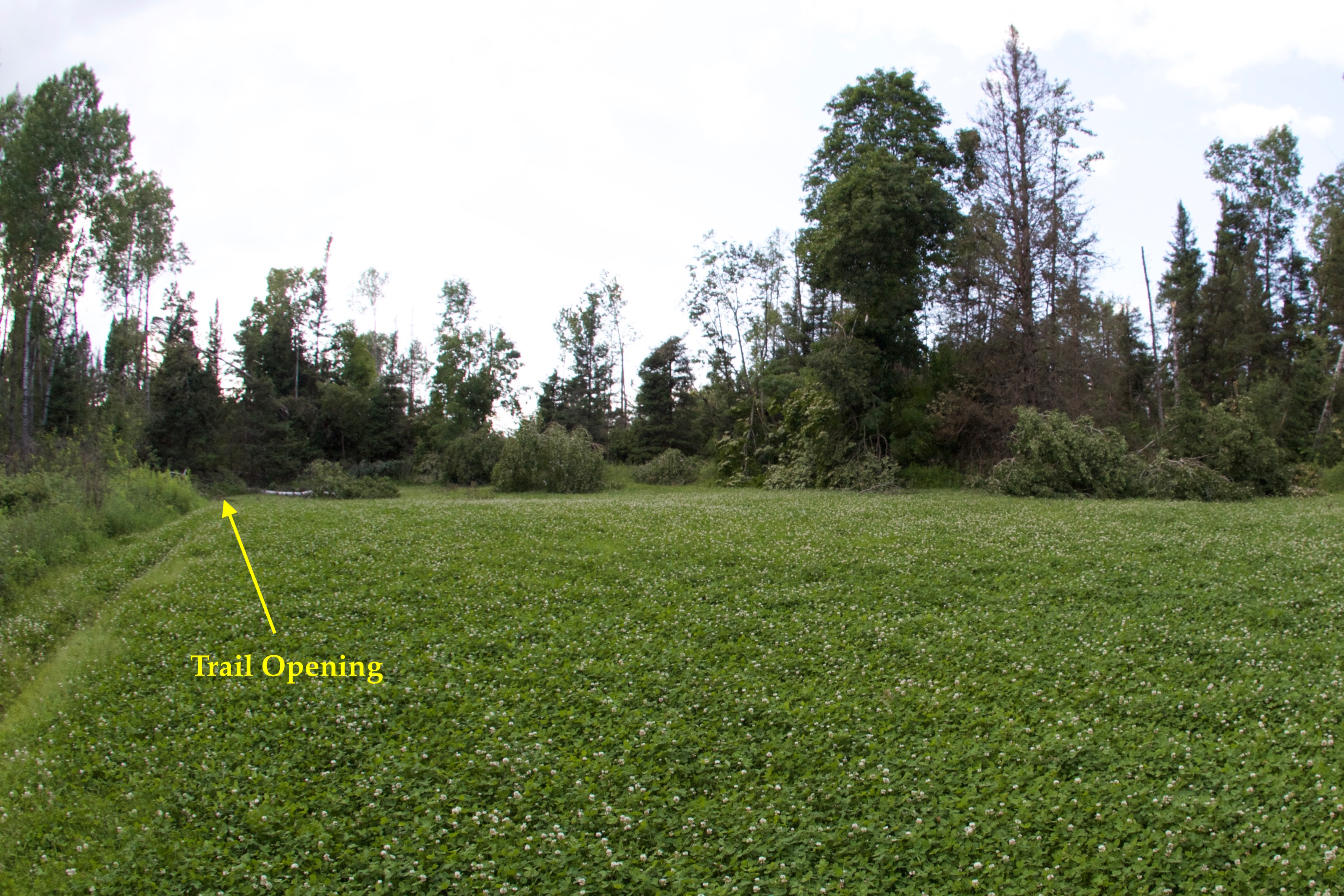
I crossed the plot and headed up the trail to the 6×6 stand.
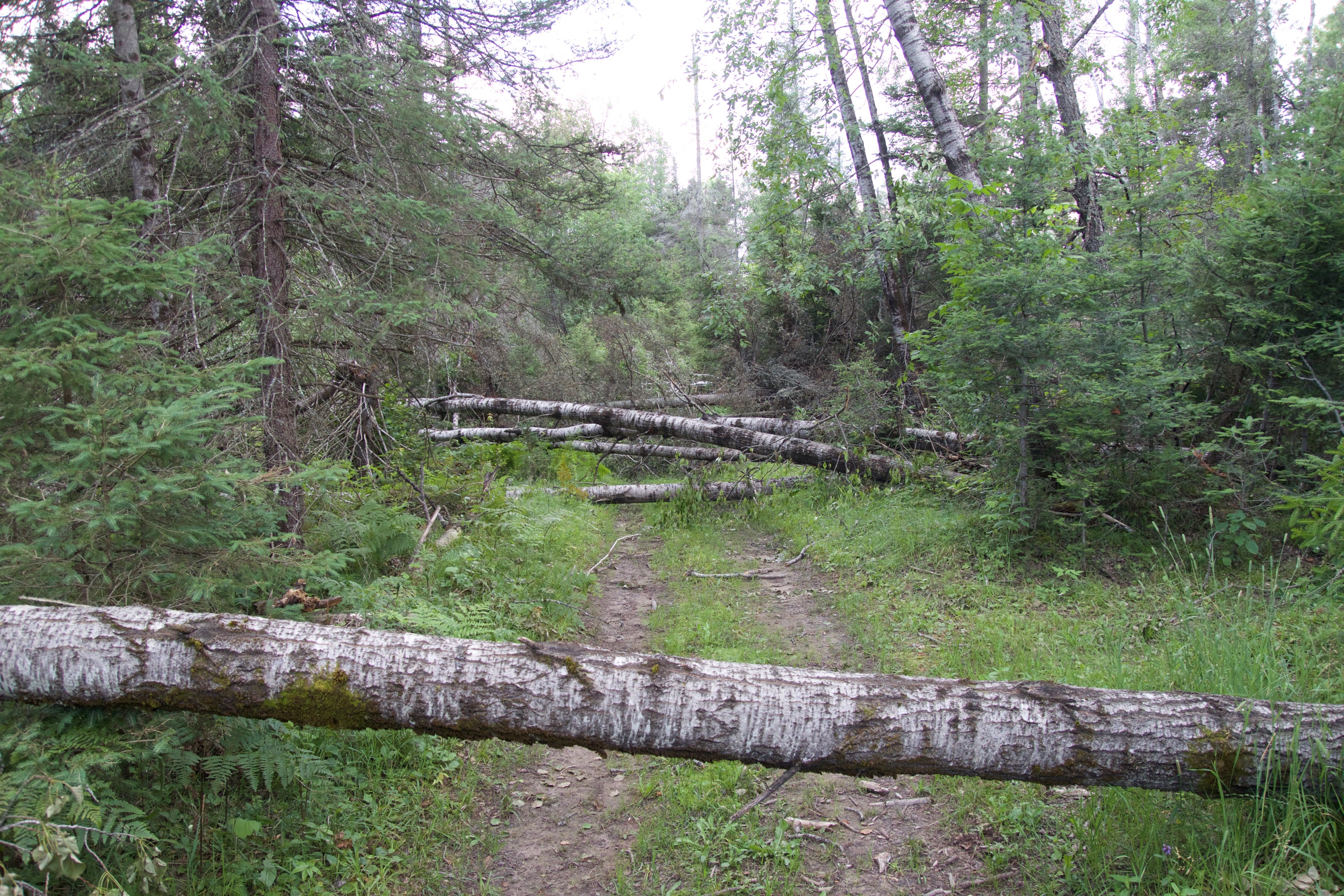
I snaked around through the woods and stepped back up on the trail and looked back the way I came.
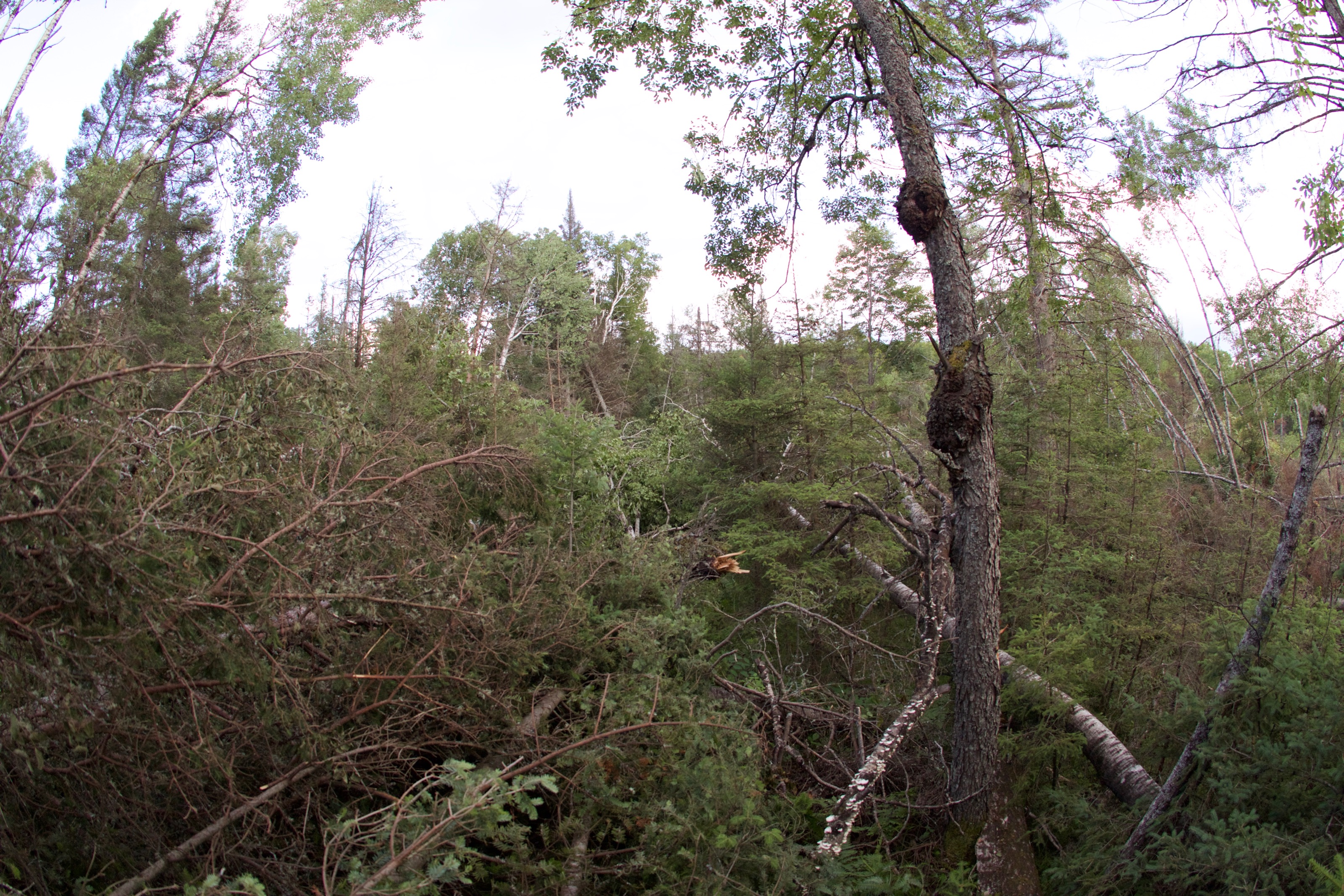
The stand survived! The clear cut along out Eastern border wasn’t to blame for the wind but it didn’t do any favors for our forest.

The back trail was thinned by GMO a few years before we bought the camp. Those trees folded right over across the trail. They are small and shouldn’t be too bad to clean up, but there are a lot of them!
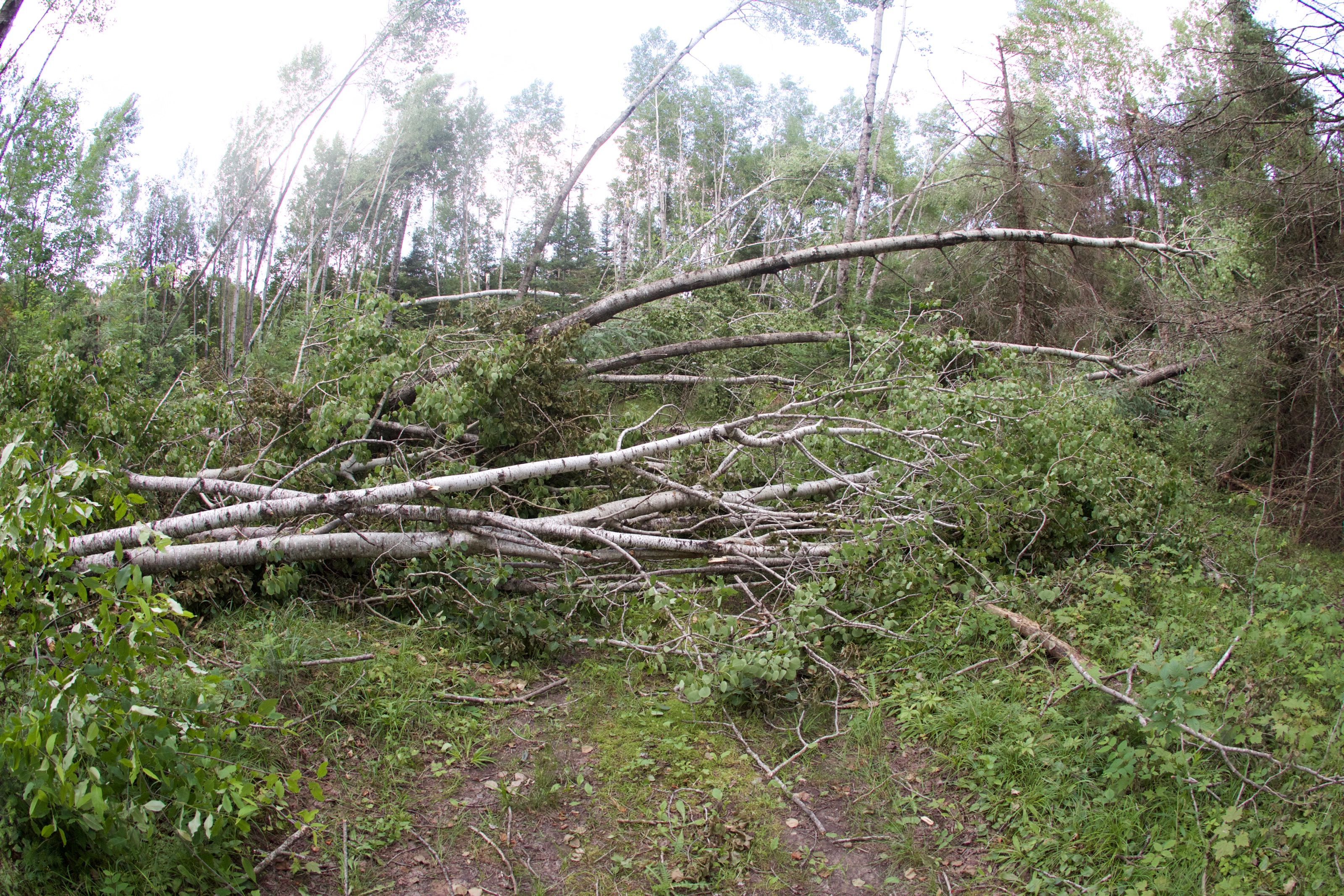
This view (1), or path, if able to walk would lead you straight across the center food plot and into the center of the pond. See the satellite image I annotated below for reference.

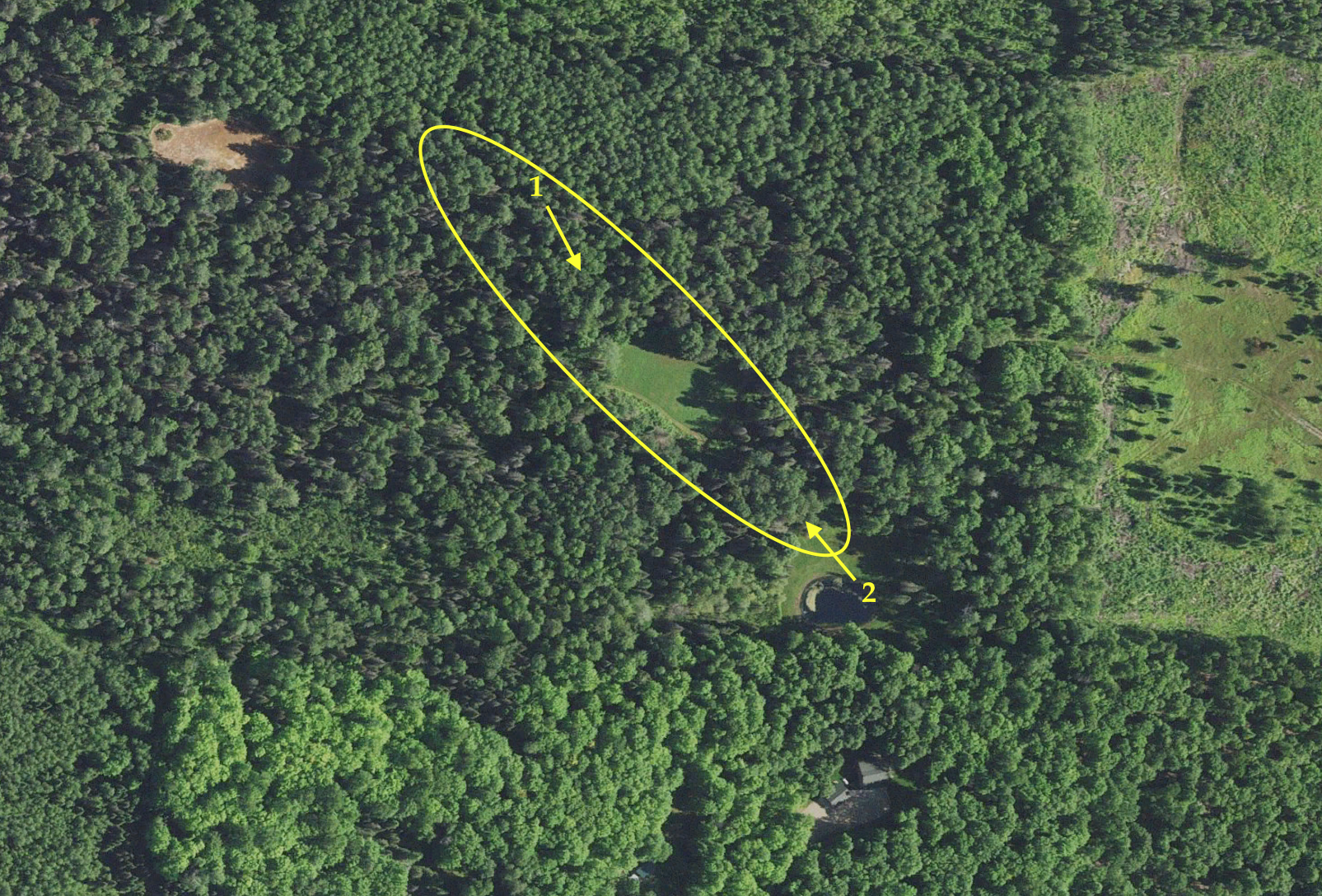
(2) At the other end of the path, on the bank of the pond looking back.
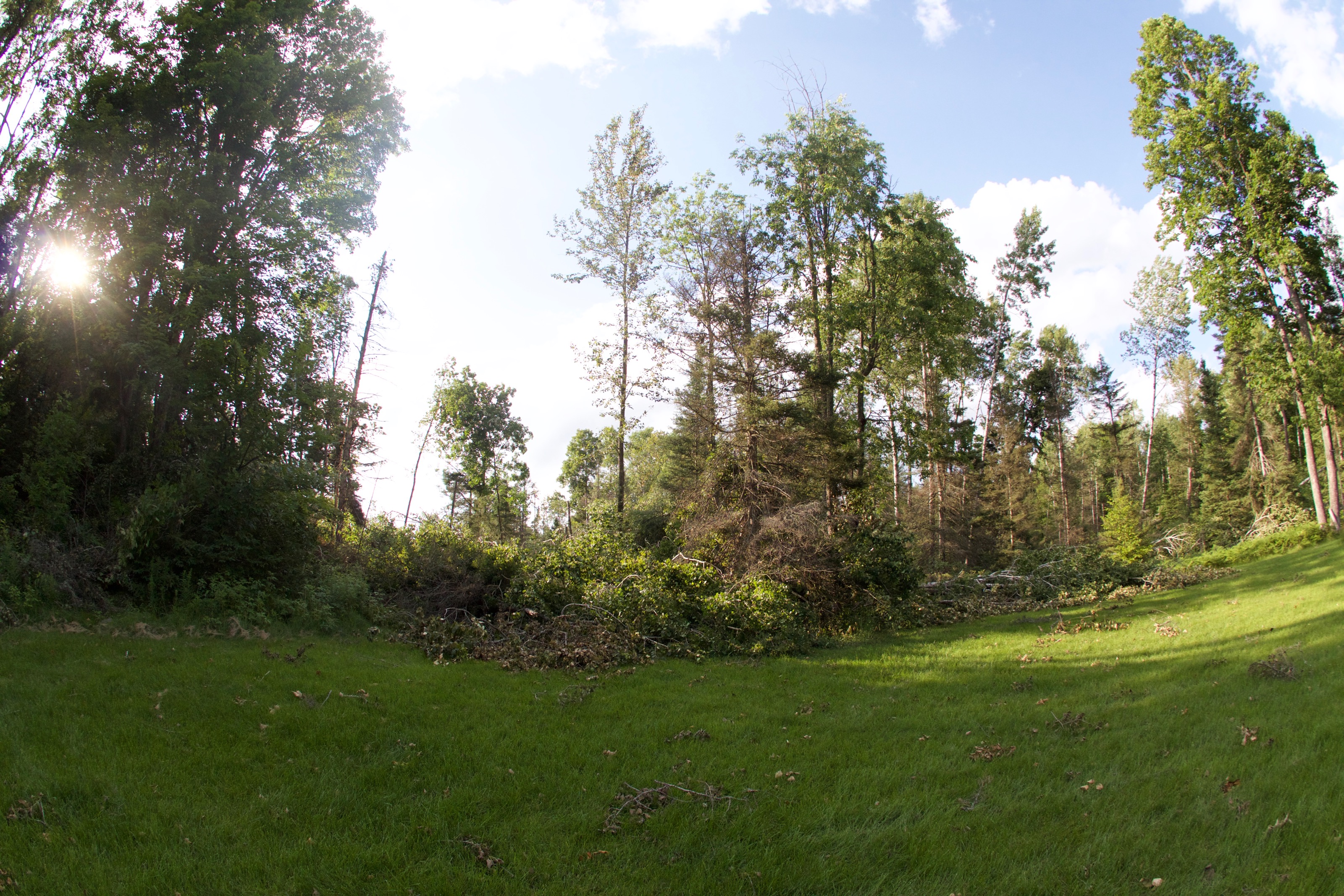
Back at the cabin I called the Ol’ man on my iPhone, setting it on the bed and using my bluetooth headset to keep the phone positioned in a location of good reception. Dad asked how they cutting went. Funny… I never said anything about that. In fact, I was advised not to start cutting until he arrived tomorrow morning. Bob, from the neighboring camp called Dad and said something along the lines of, “Some one cut a shitload of trees and made it all the way to your gate! Does you kid drive a Honda Civic?” So that’s how Dad knew what I was up to… I headed back out to the car after Bob stopped cutting, drove up to the gate and then cut for an hour around the gate.
Nightfall halted my efforts. I trekked back with my chainsaw gear this time along with one of my saws. The next morning I got an early start. Dad texted when he was 30 minutes out. I made it to the gate around 8am and started hiking out the trail. When I met Dad he had just got the tractor unloaded. The Ol’ man arrived around 8am EST. He appeared to have the same eagerness to open up the road that I did. Too bad he didn’t have steel toe boots though. After discussing the merits of protective gear he dropped a tree on his foot and limped about for a bit. All his toes on one foot except for the smallest toe was purple, and the front third of his foot was discoloring. He iced for a bit while I continued on with the tractor. After icing for a while he pulled the truck up to the gate and we headed up the cabin road cutting and setting the logs and tops aside with the tractor. I suppose we would have been a bit more productive had the Ol’ man not stopped to ice his foot 4 or 5 times today, but overall it went pretty well. Good thing we discussed safety gear before cutting… I suppose after this post is finished I should give him a call and see if he bought a pair of steel toe boots. Now that it’s a few weeks since the storm it’s worth mentioning that the foot was only bruised… same as his pride. Luckily both healed, leaving no lasting damage.
Rudy has also arrived this morning. His camp is the next one up from ours. He started cutting toward his camp but then broke the handle off his saw. In other words, he got it pinched in a tree and tried to pull it out. Both my saws are over 30 years old and both have their original handles. There is value in having two saws (or a separate bar and chain at the least). It guarantees that if a saw gets pinched you can free it up without damage. In this case, Rudy had to call it a day and pack up.
We made camp at 2pm EST. Not too bad. After a brief lunch break, our energy returned and we got back to work. Everything on the ground by the cabin was cleared and most of the leaners were taken down. All told, the tops of 7 trees were removed and 5 leaners were felled. A total of 13 trees fell down or were damaged to the point where removal was required within 200 feet of the cabin. By day’s end the lawn was clear and there was a lot of firewood to cut up. Eleven trees down and two to go.
We took care by the garage and used the tractor to remove logs and persuade trees to fall where we wanted.
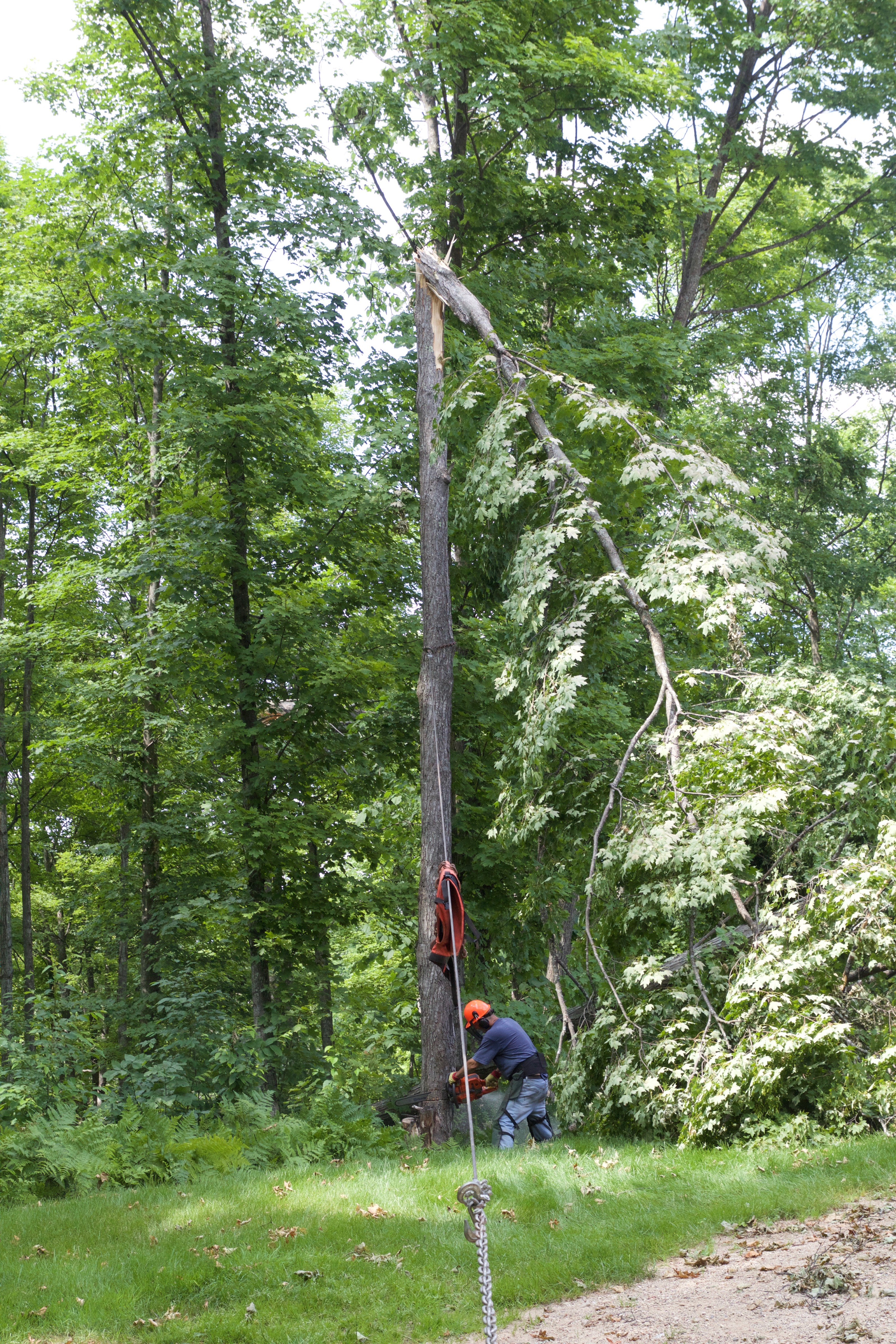
Bob stopped over to thank us for the work on the road. After demonstrating the versatility of a few choice words to describe the storm, work done, and work yet to do, he headed back out to the road to cut. Nice guy. Fairly hard working. After the yard was cleaned up we put in a pizza, some local sort with quality meat and a healthy quantity of fresh mozzarella cheese.
The next day I drove the two rut road and remembered what it used to look like.
June 8, 2008: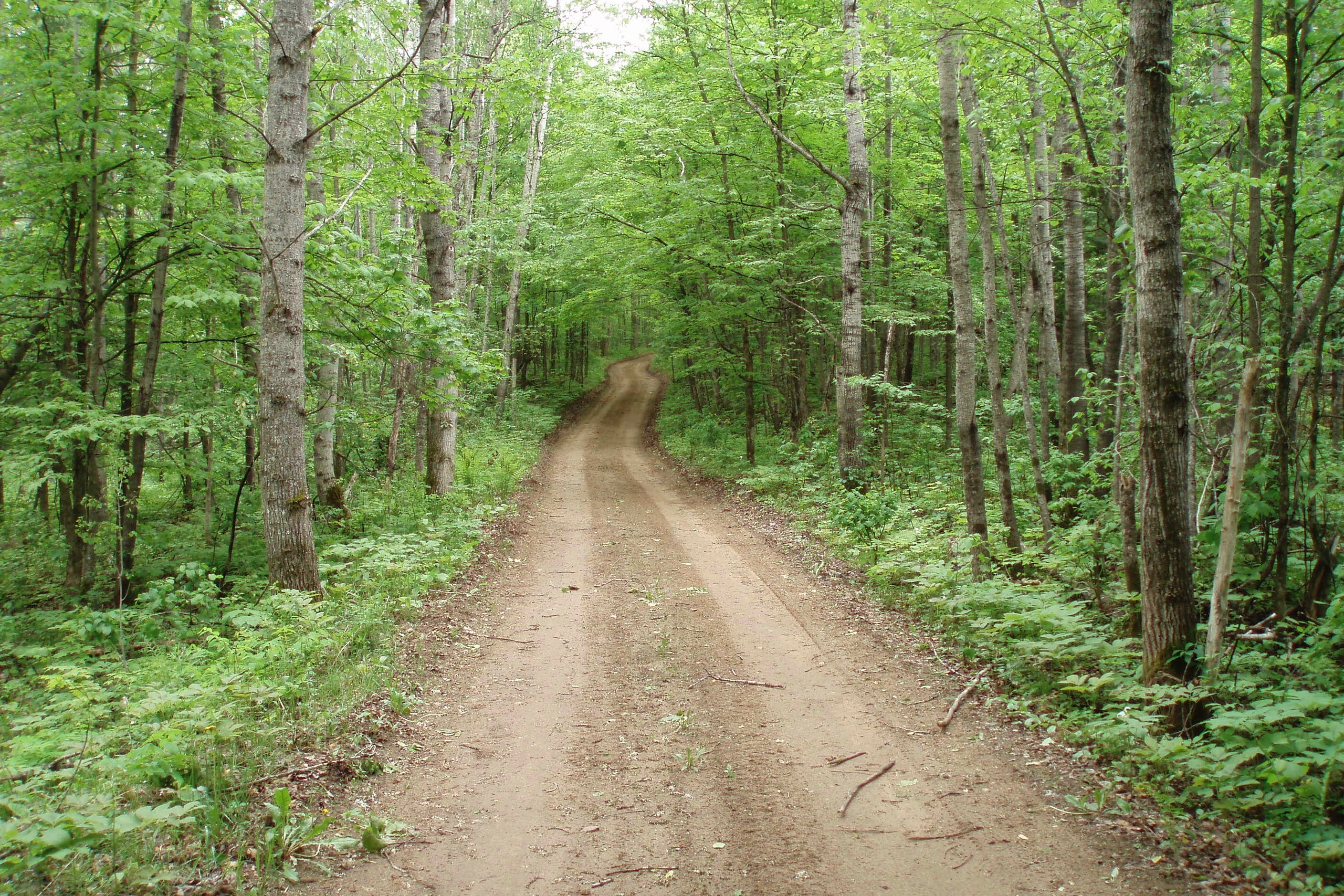
July 12 2017: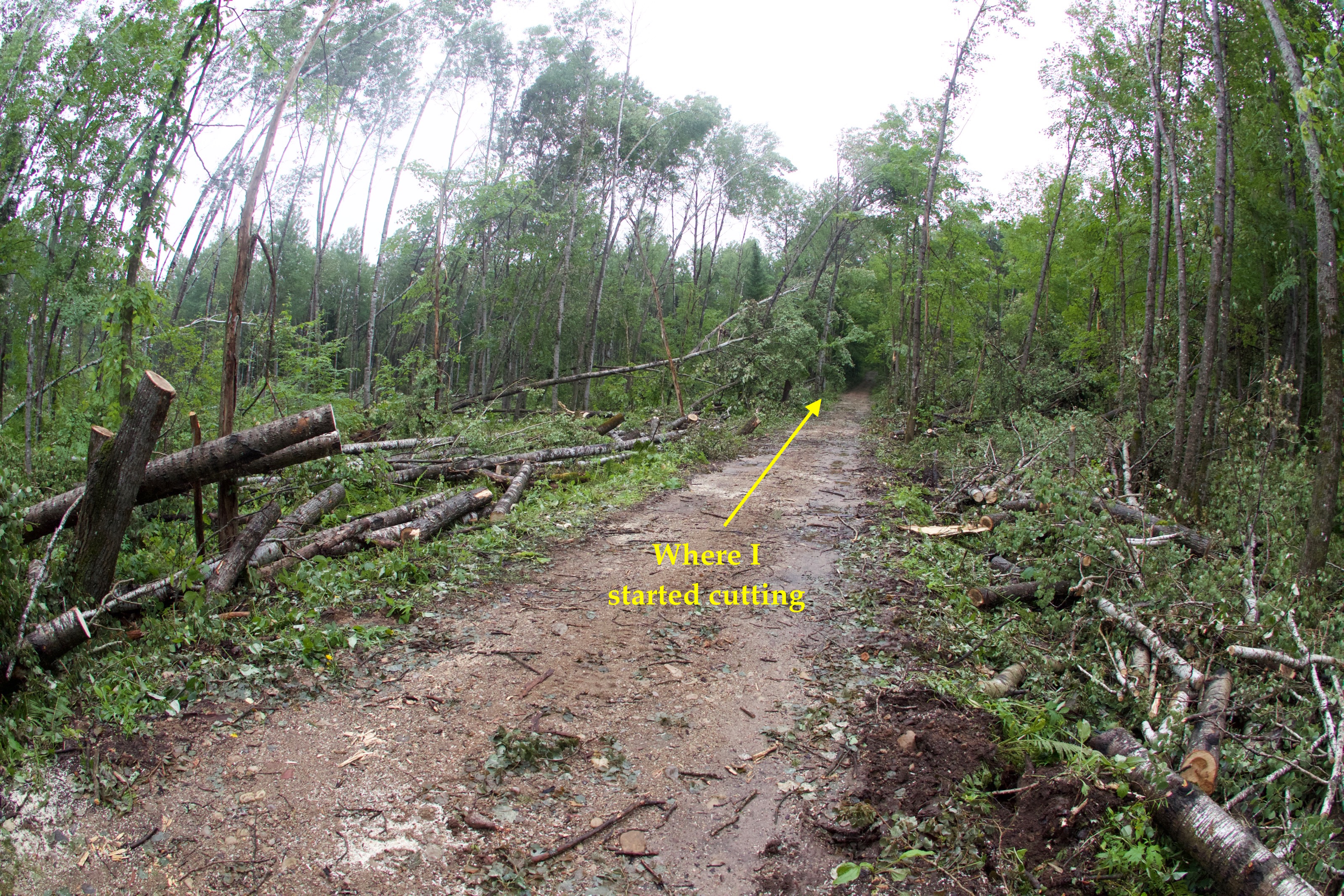
What’s next? The Ol’ man will continue to work on the trails and hopefully by the beginning of August we will have unfettered access to our stands (marking a milestone in the clean up, not the conclusion of it). The basswood will be cut over the next several years to make campfire wood and the maple will be cut in the next 18 months and either split and stacked for the cabin and maple sapping stove, or hauled out to my house for the outdoor wood burner. The lowlands will mostly be left alone. The poplar and balsam that were felled by the storm will be left as cover for whitetail deer and other animals. This is the way things go. Give and take. The lowlands were at an apex back in 2007. No longer! The ridge was thinned of basswood; good thing! had they not, many more maples would have been damaged from wind-felled basswood. The cabin was not damaged and the solar panels are still in place. Both elevated stands survived unscathed. A culvert on the cabin road was crushed by the processor that cut up wind felled trees as part of a salvage operation. Plans were already set to replace the culvert, but not until next year. The Ol’ man and I would also like to do another fly over in Spring 2018.
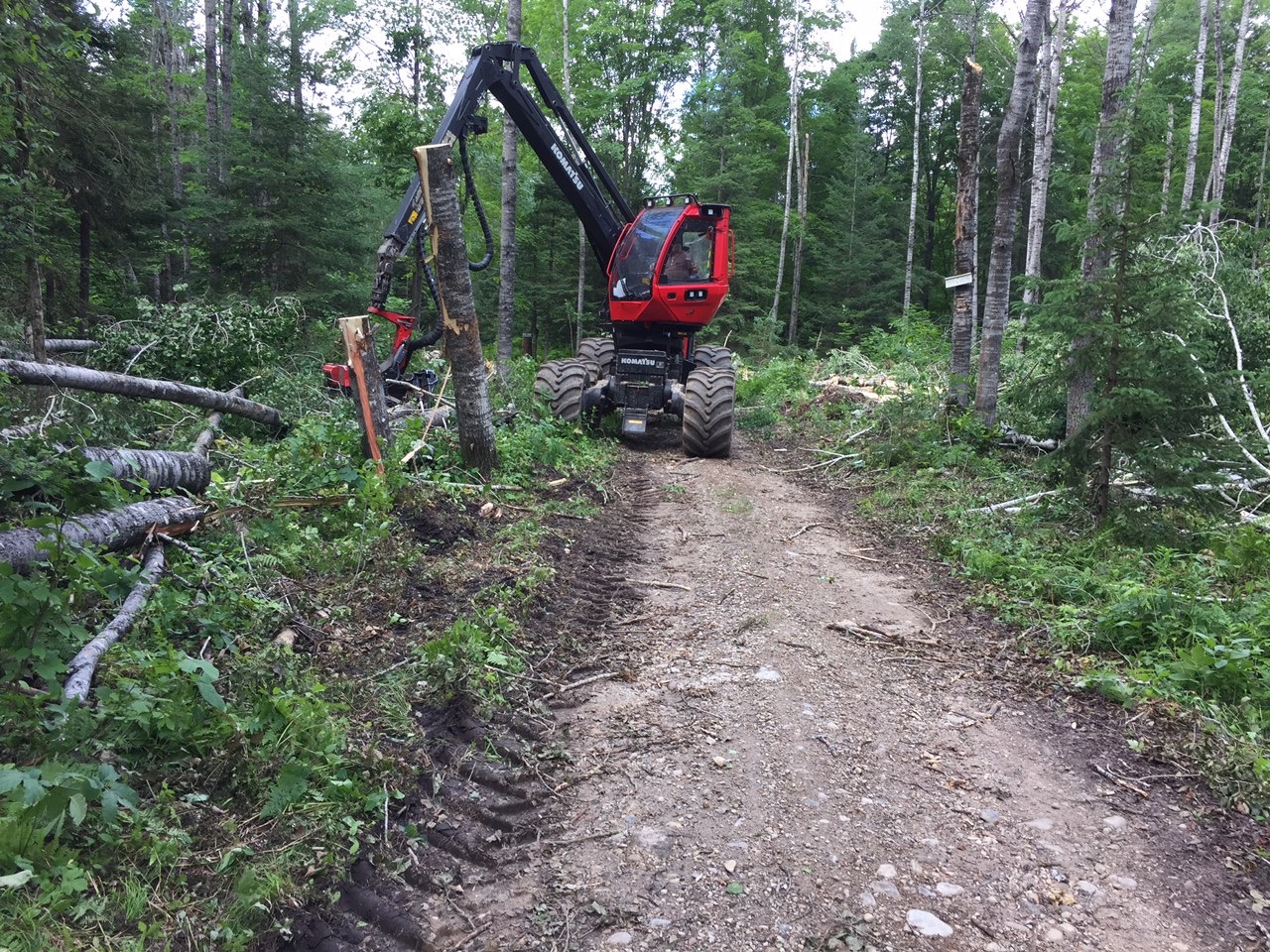
Every unexpected event is an opportunity. And like an old timer up the road said standing by his truck parked at the end of the road to his cabin after the storm, “It’s bad, but at least the cabin is OK and I have my health.” I replied, “I like how you mentioned the cabin first.” He chuckled.
